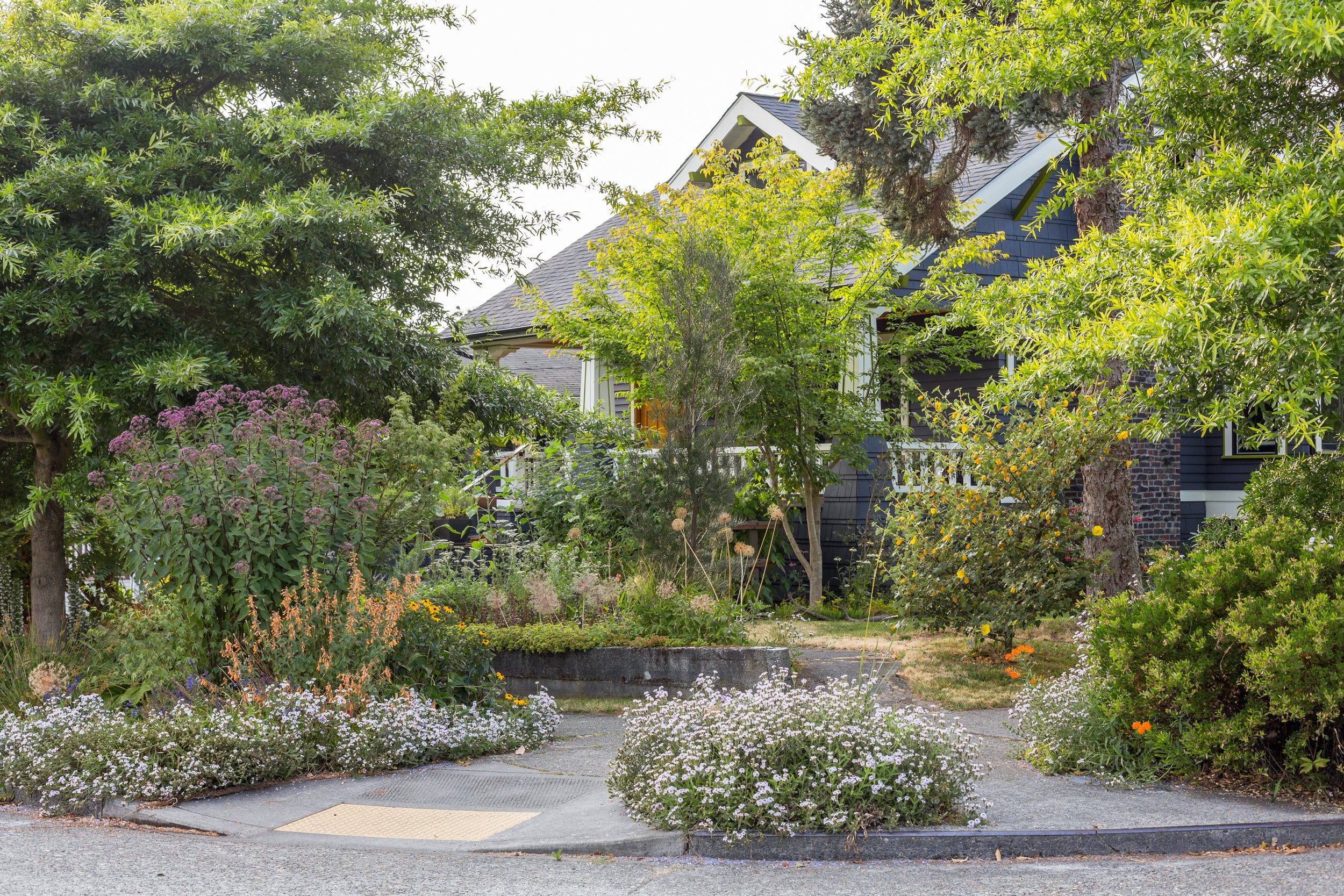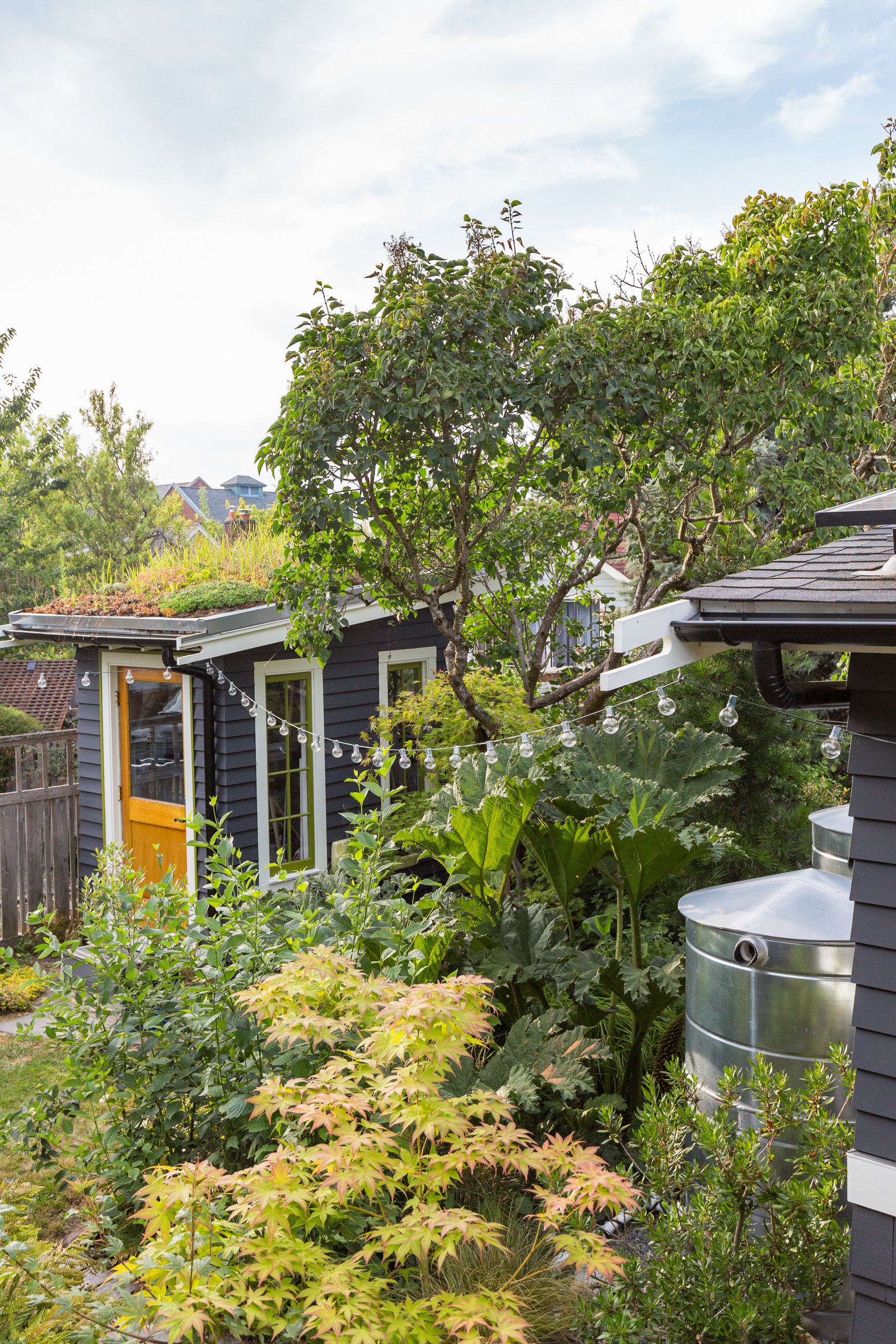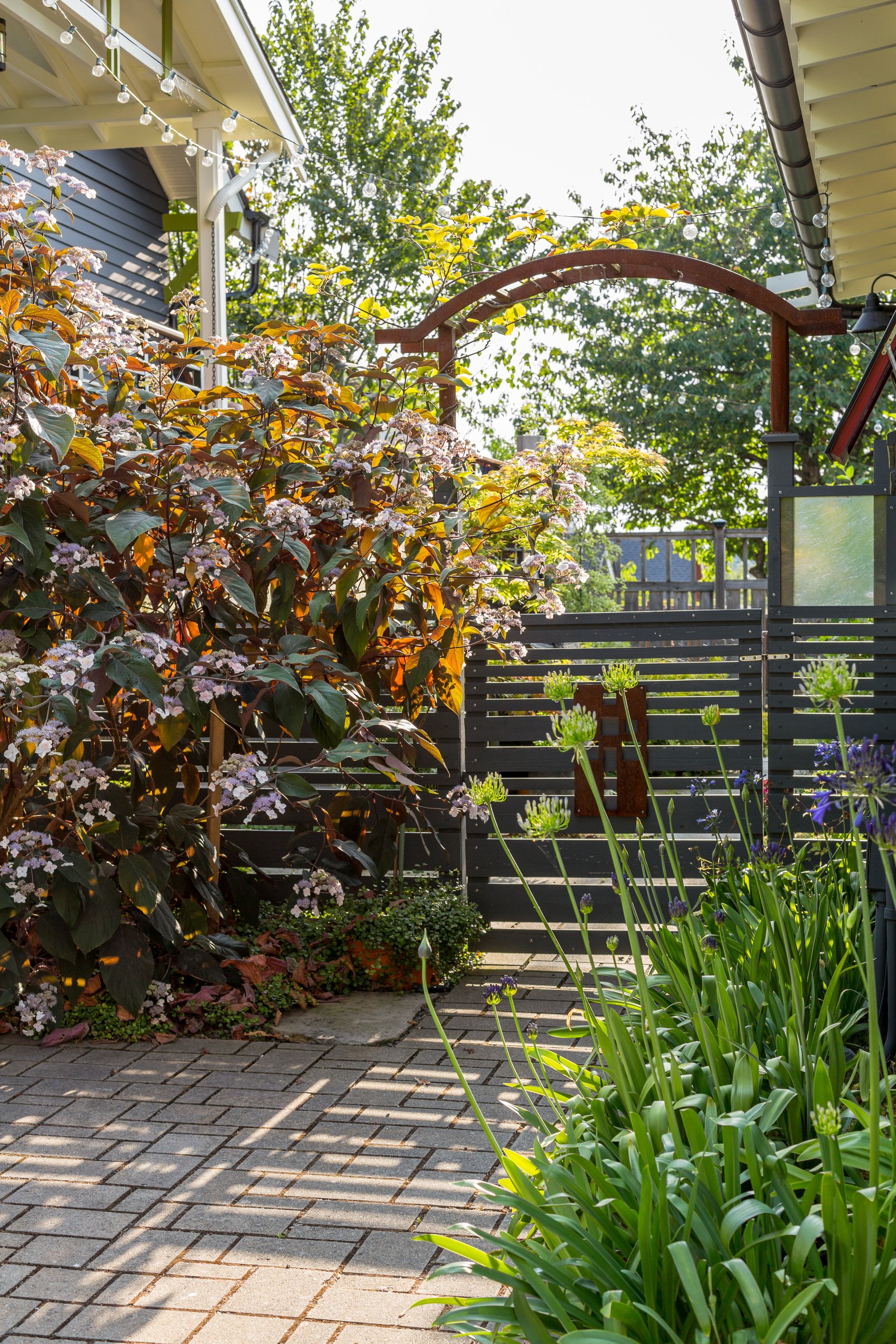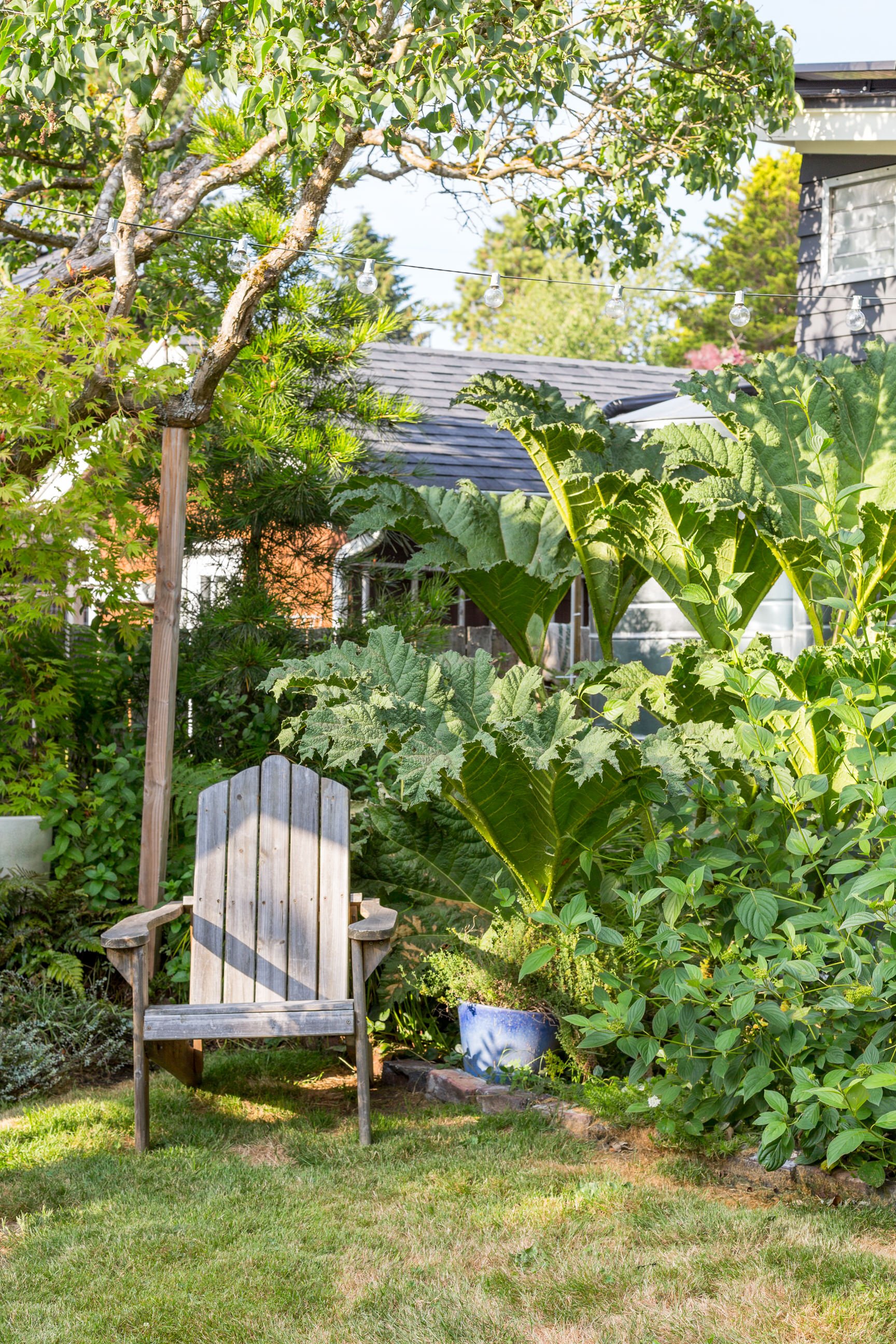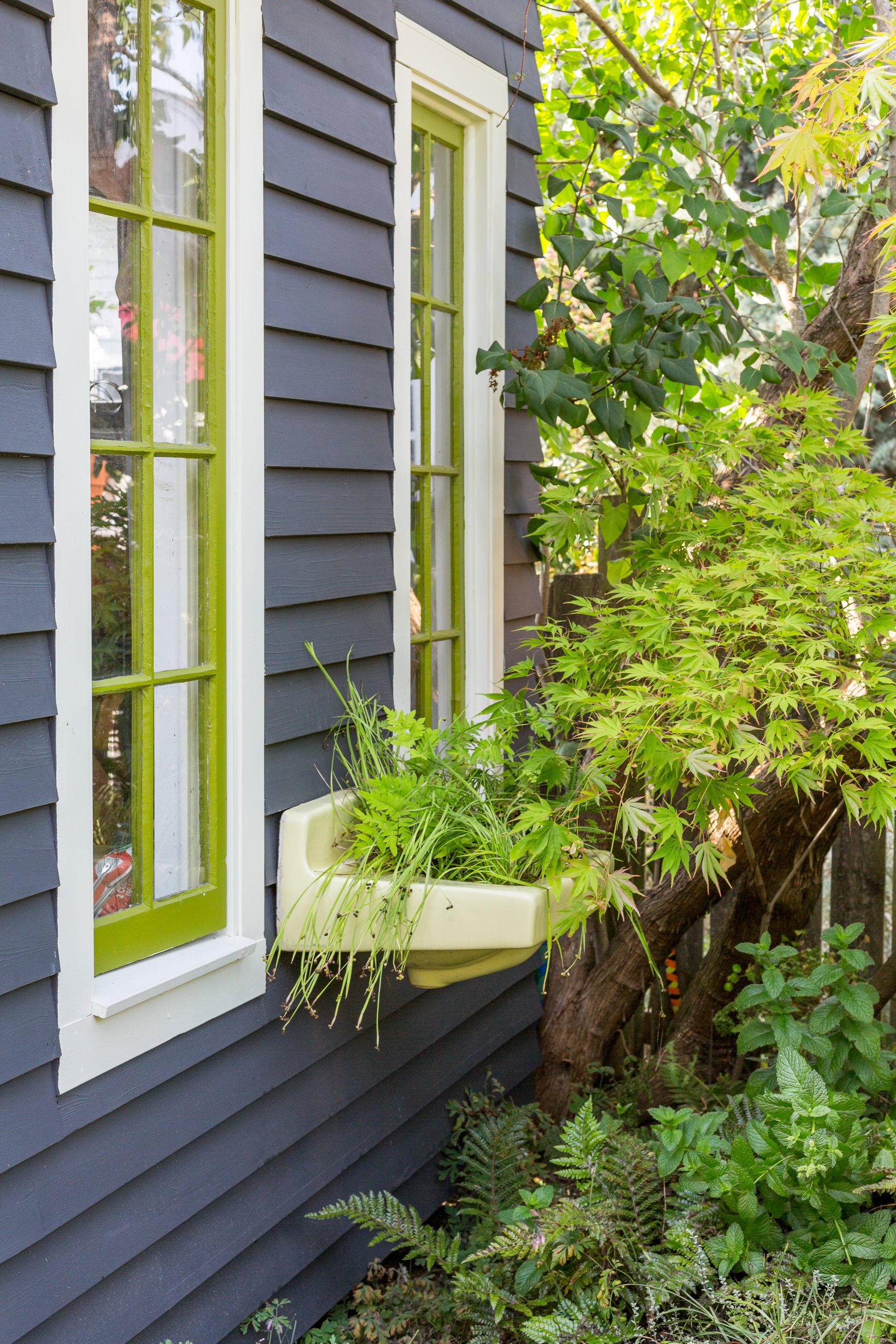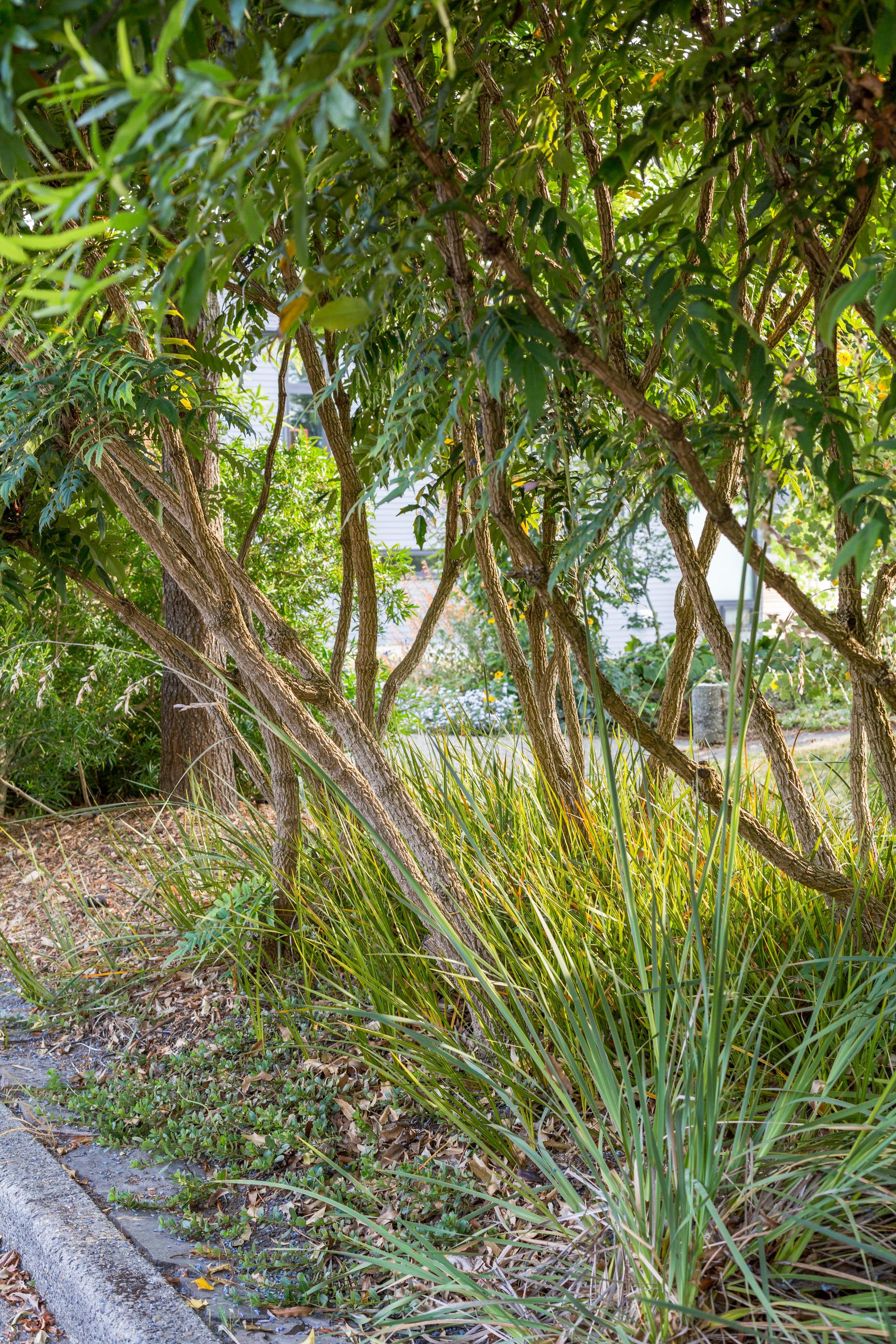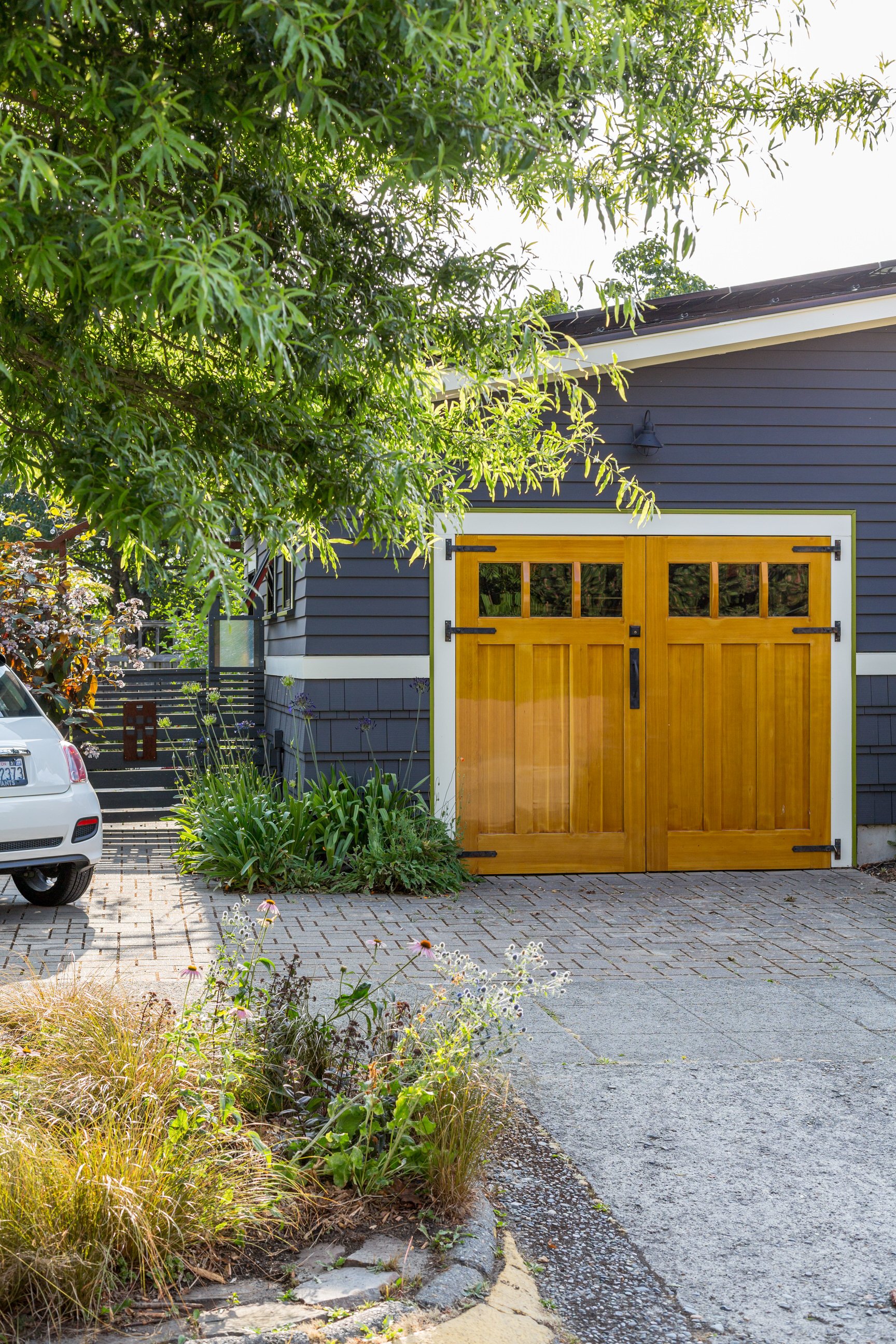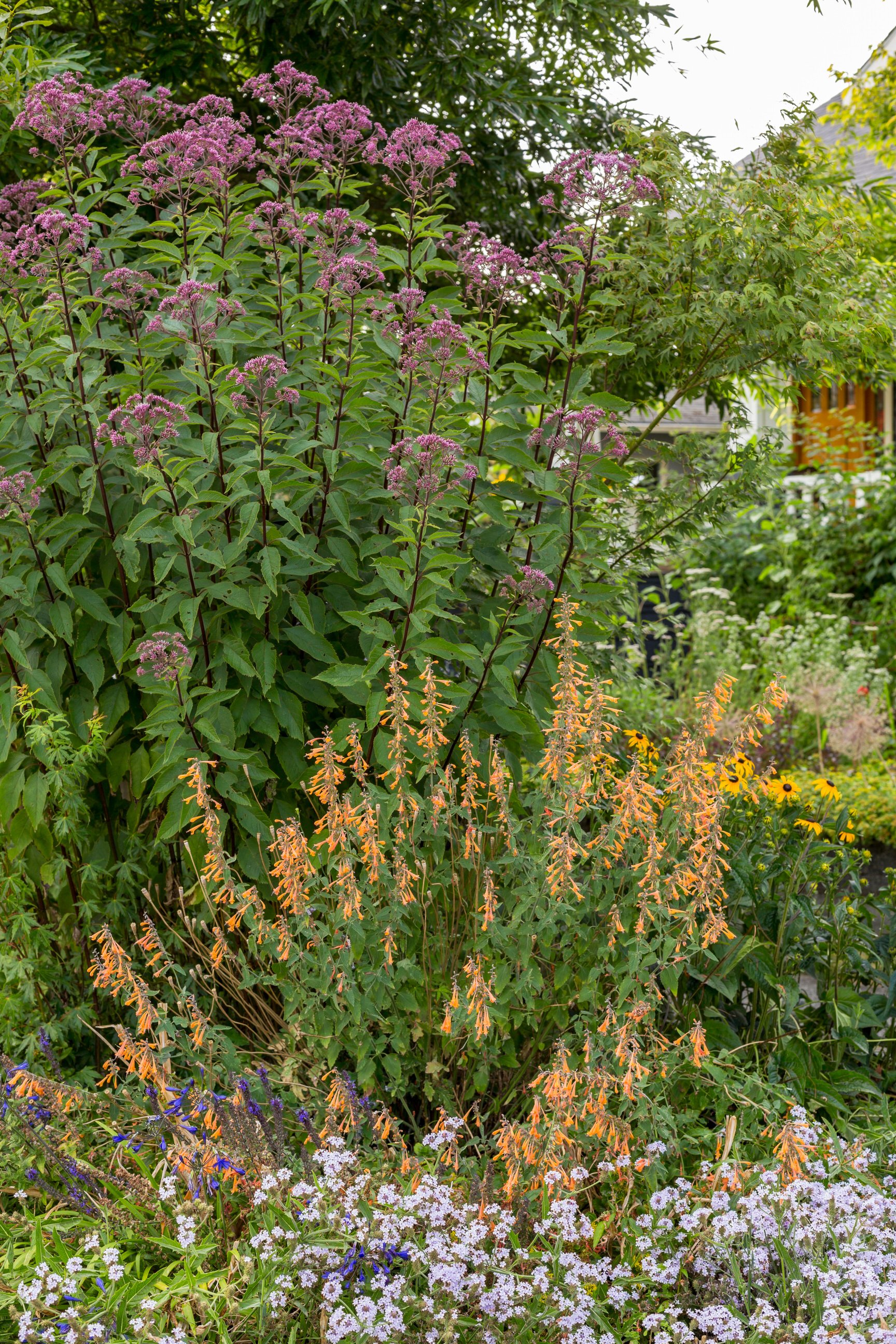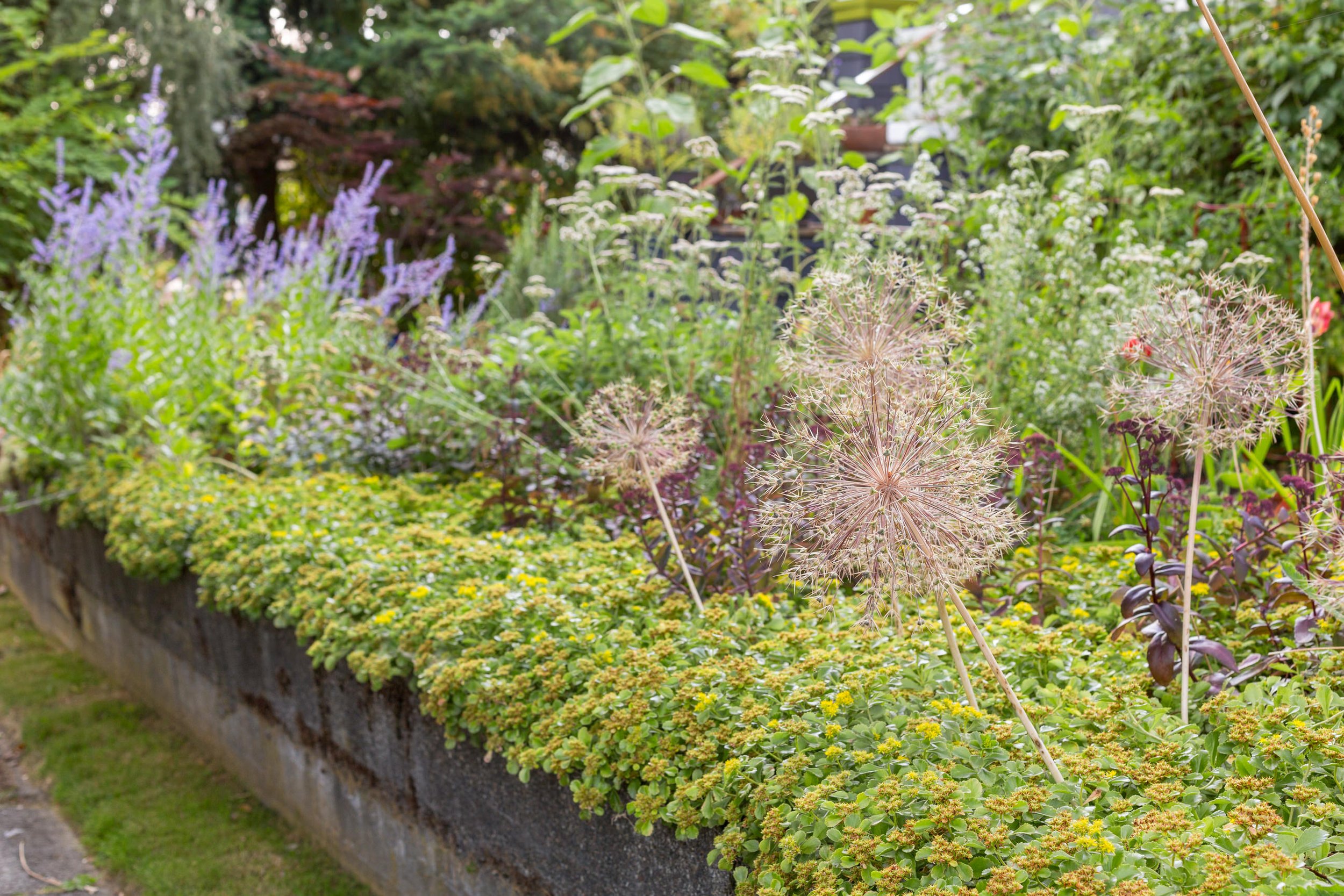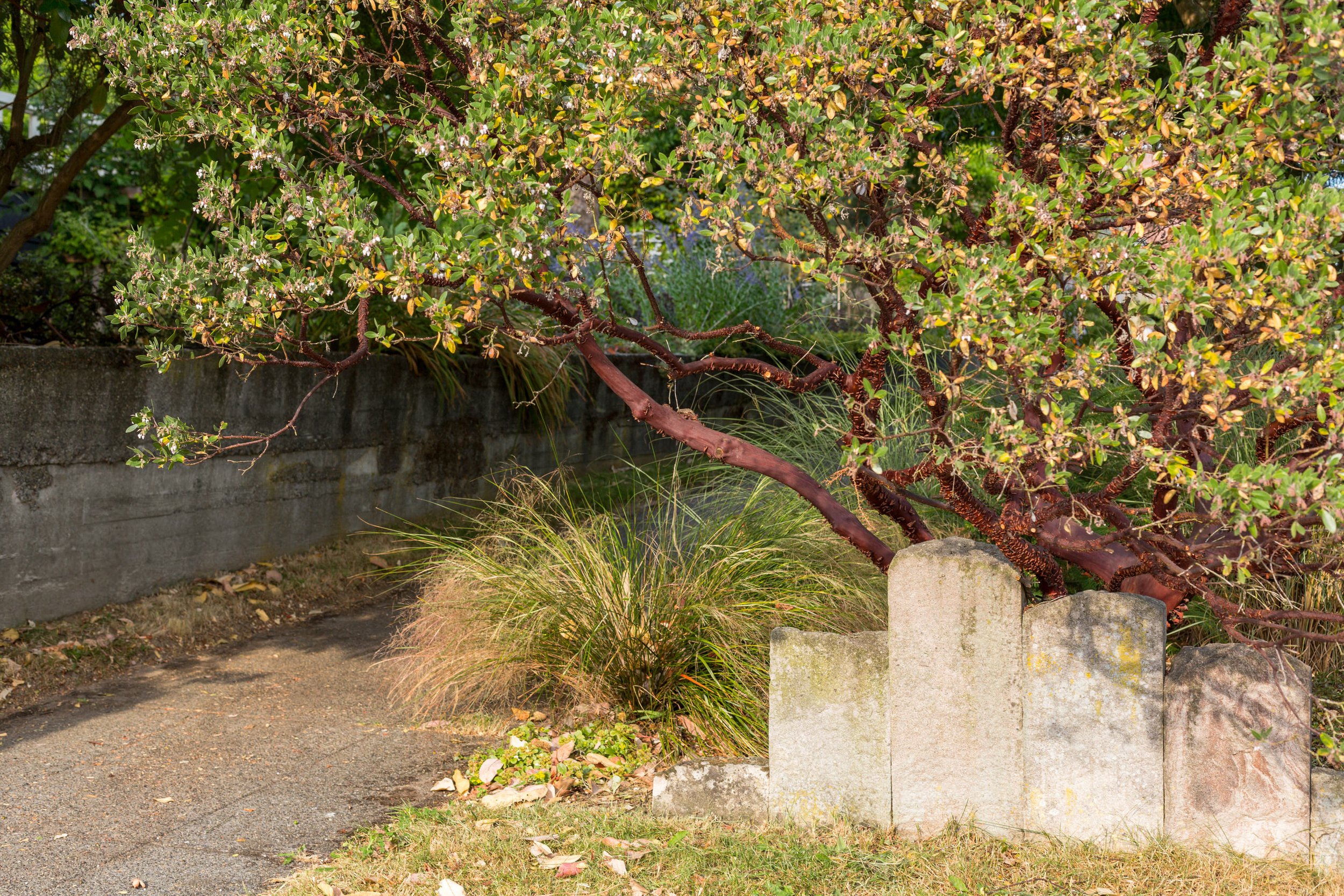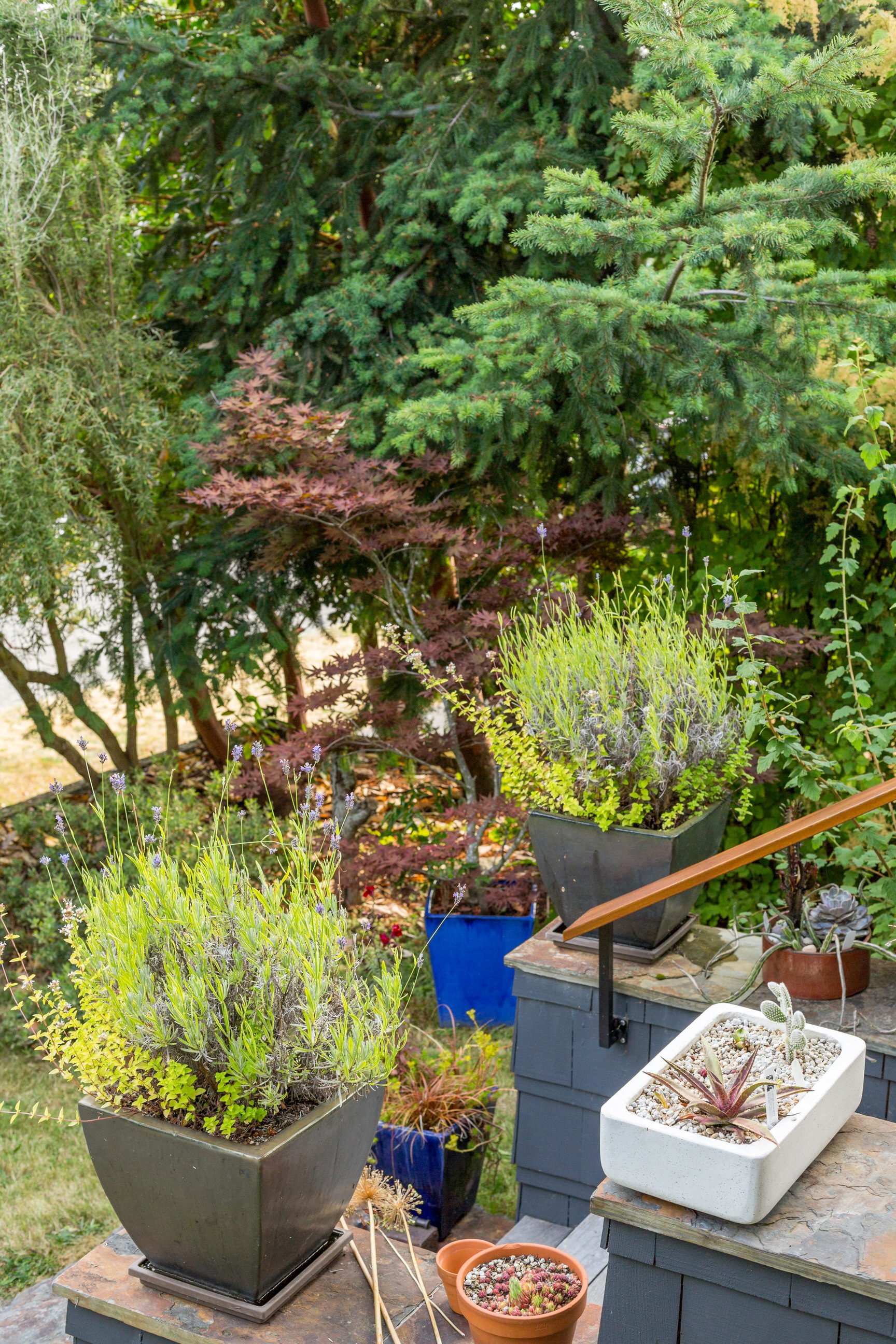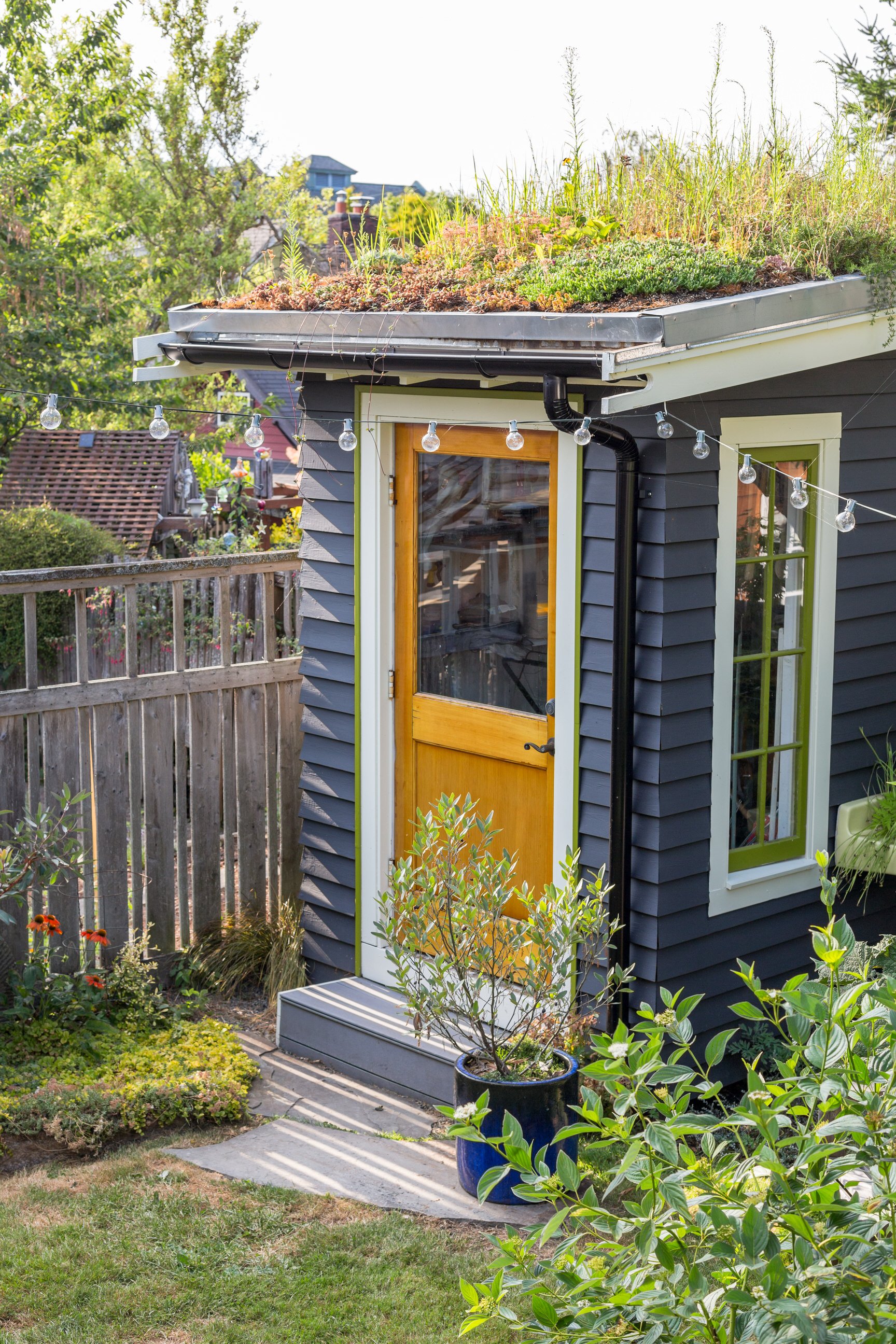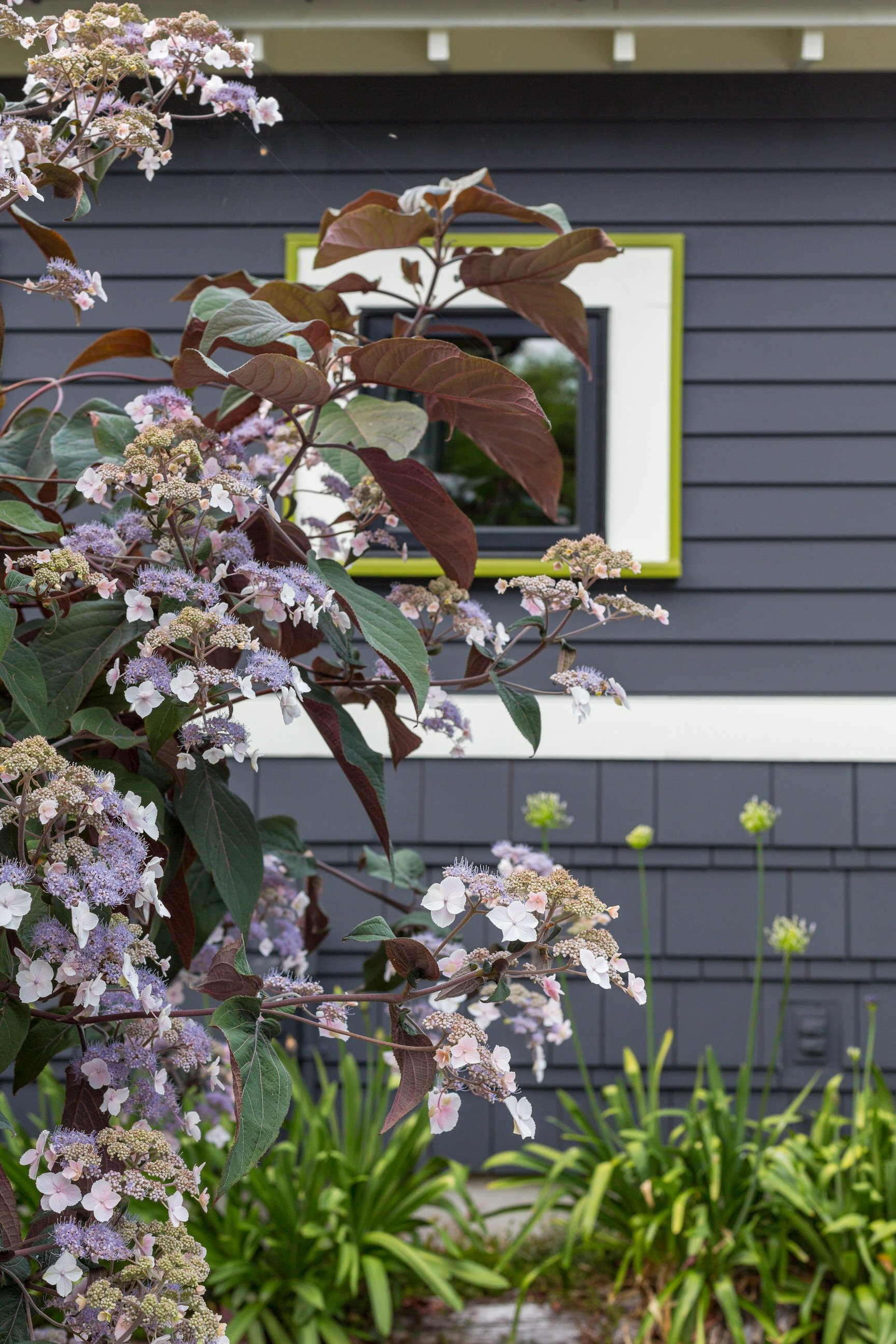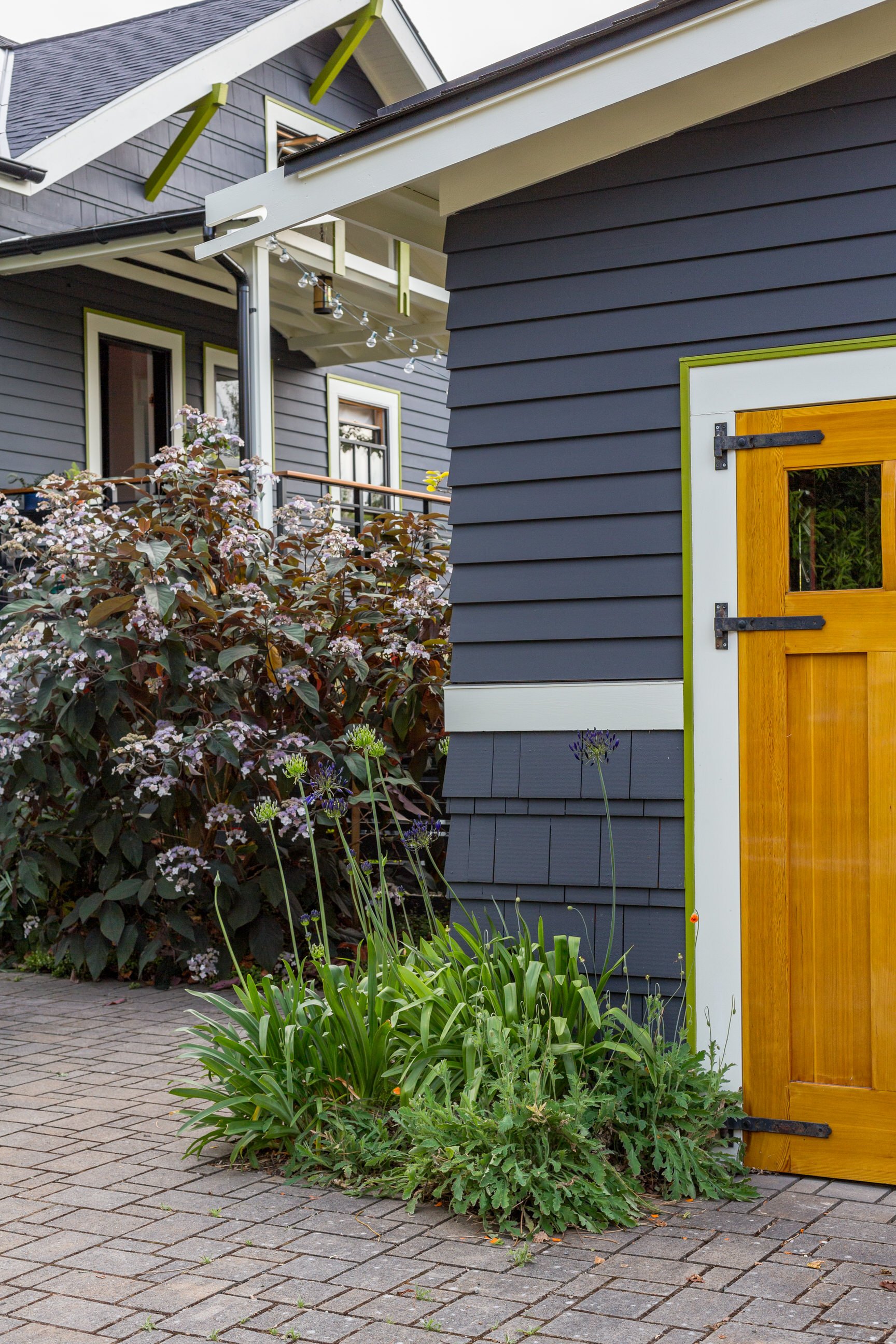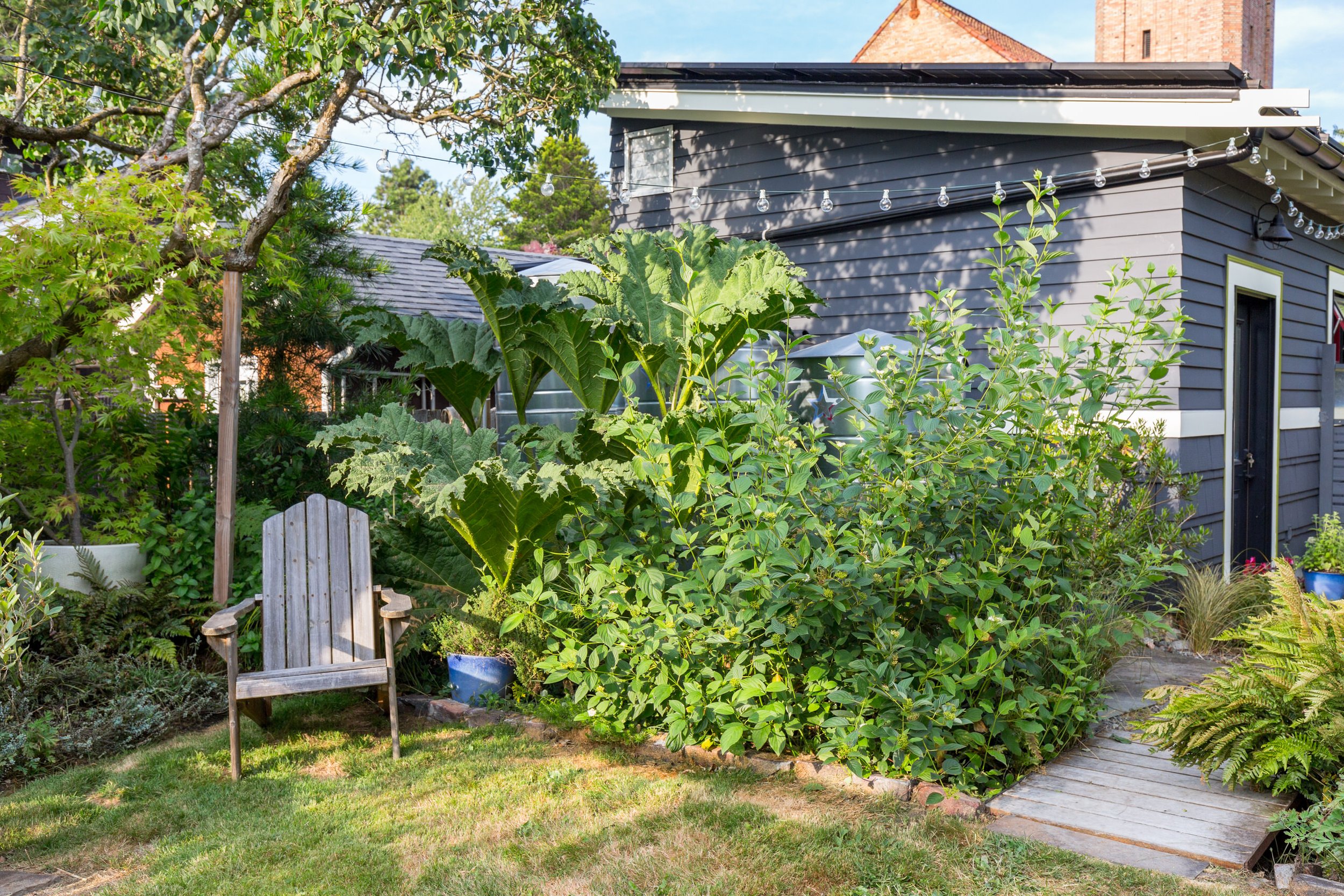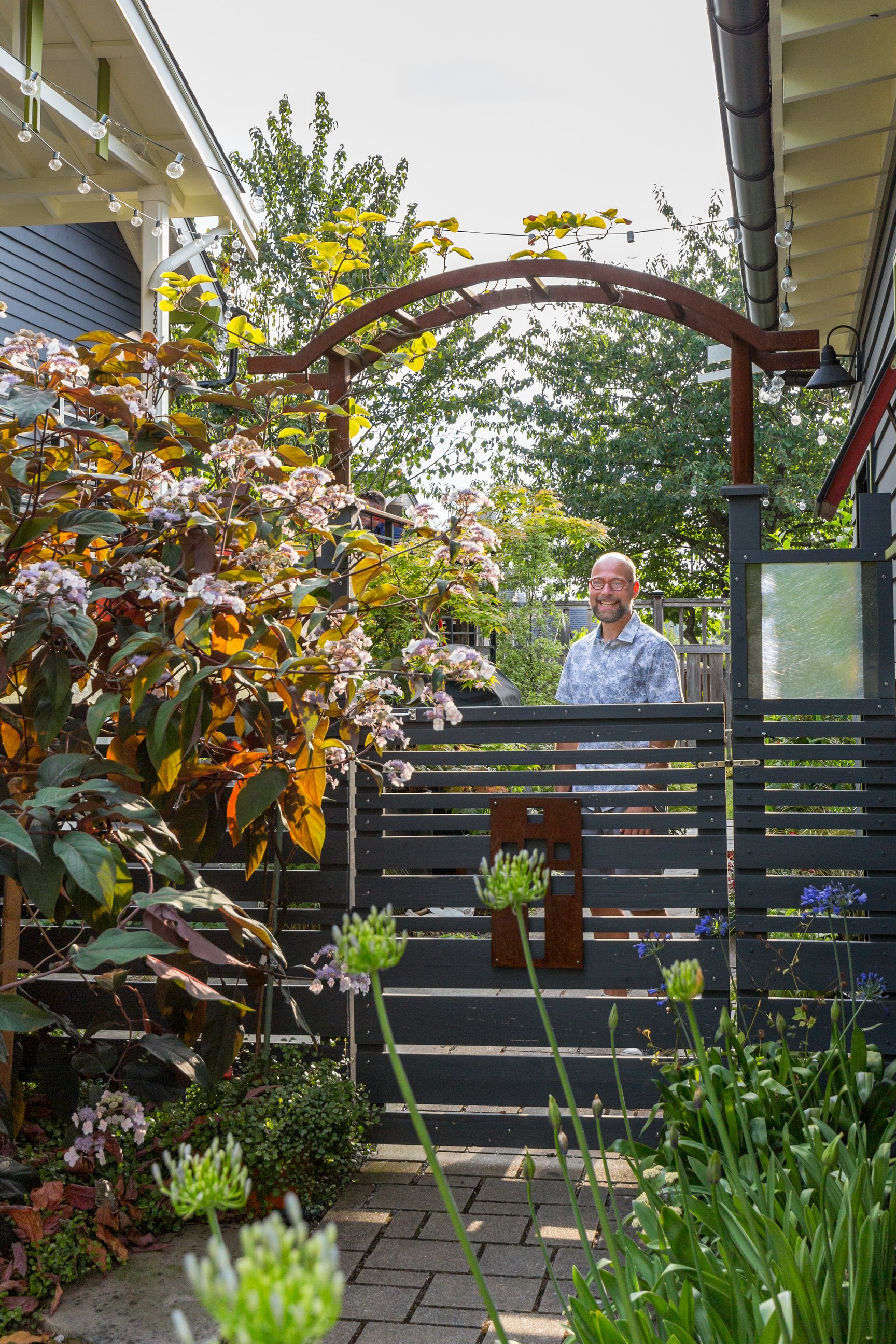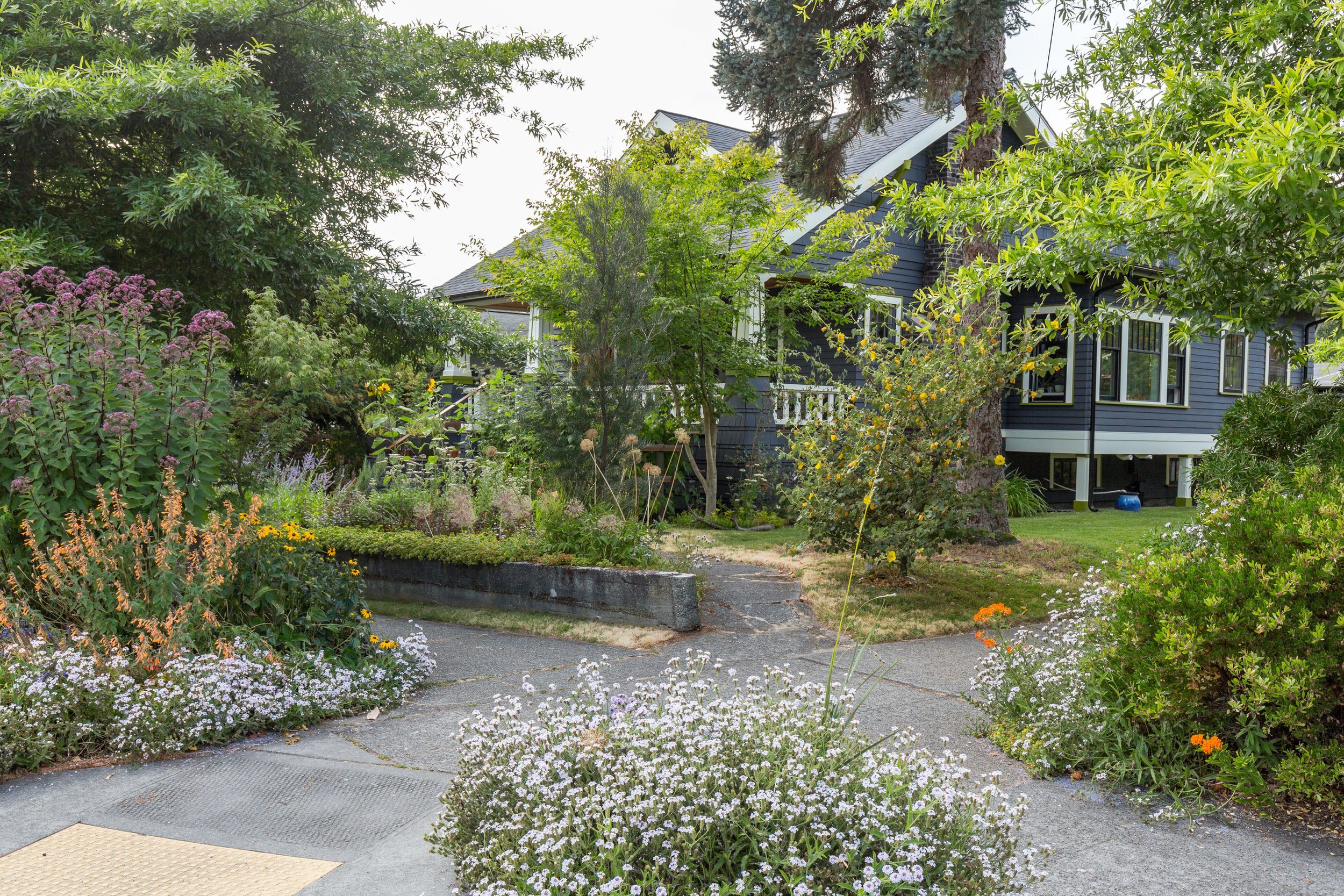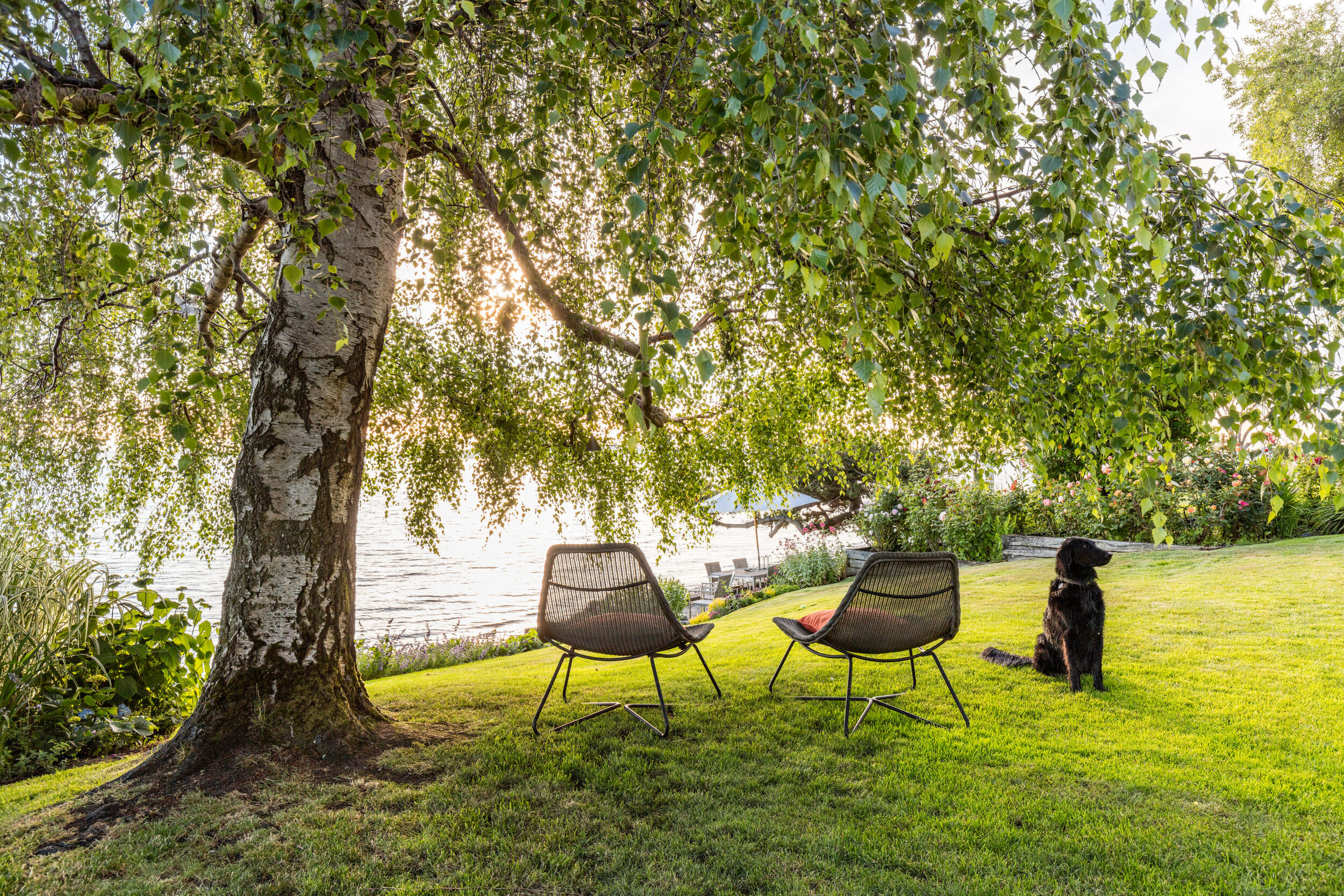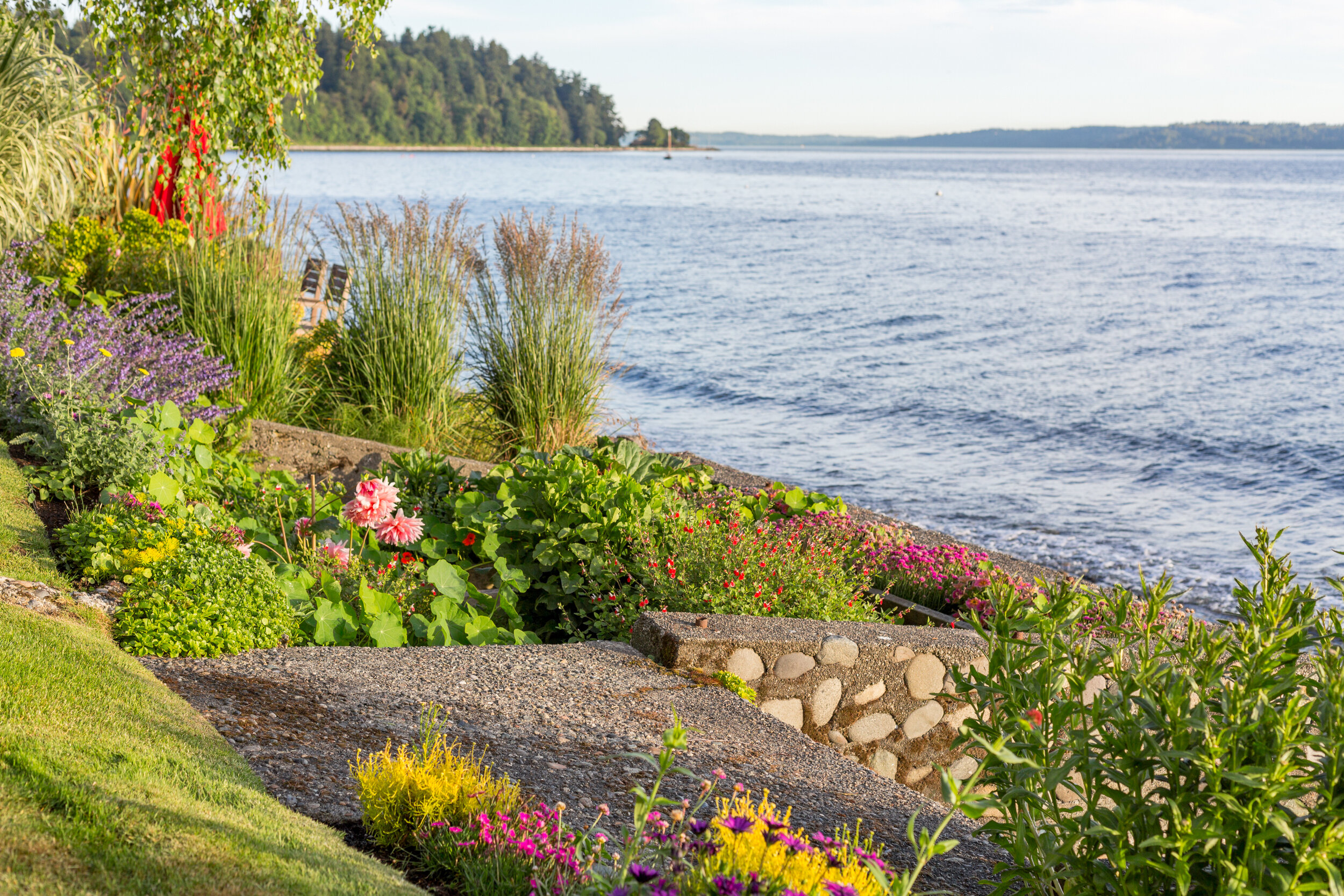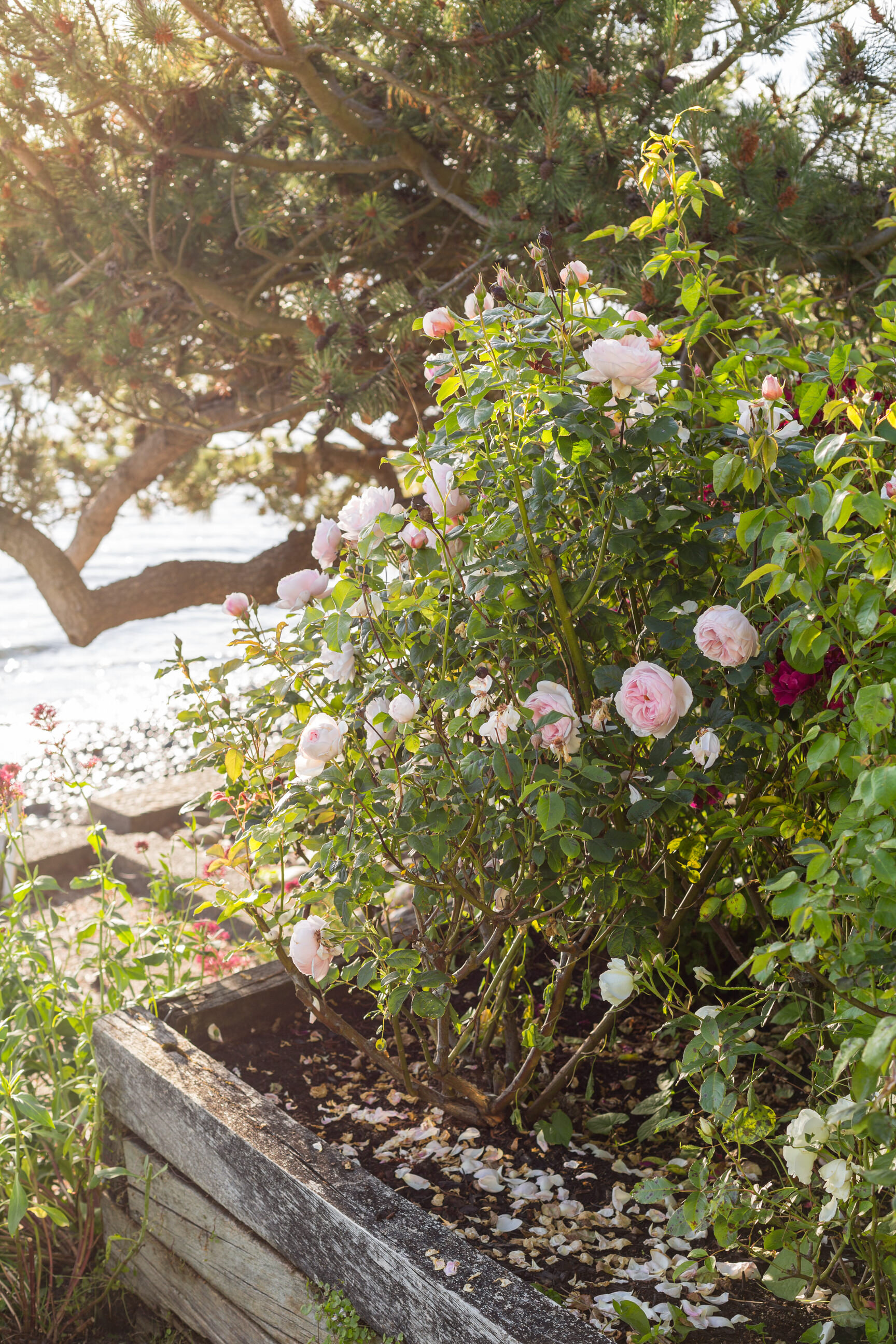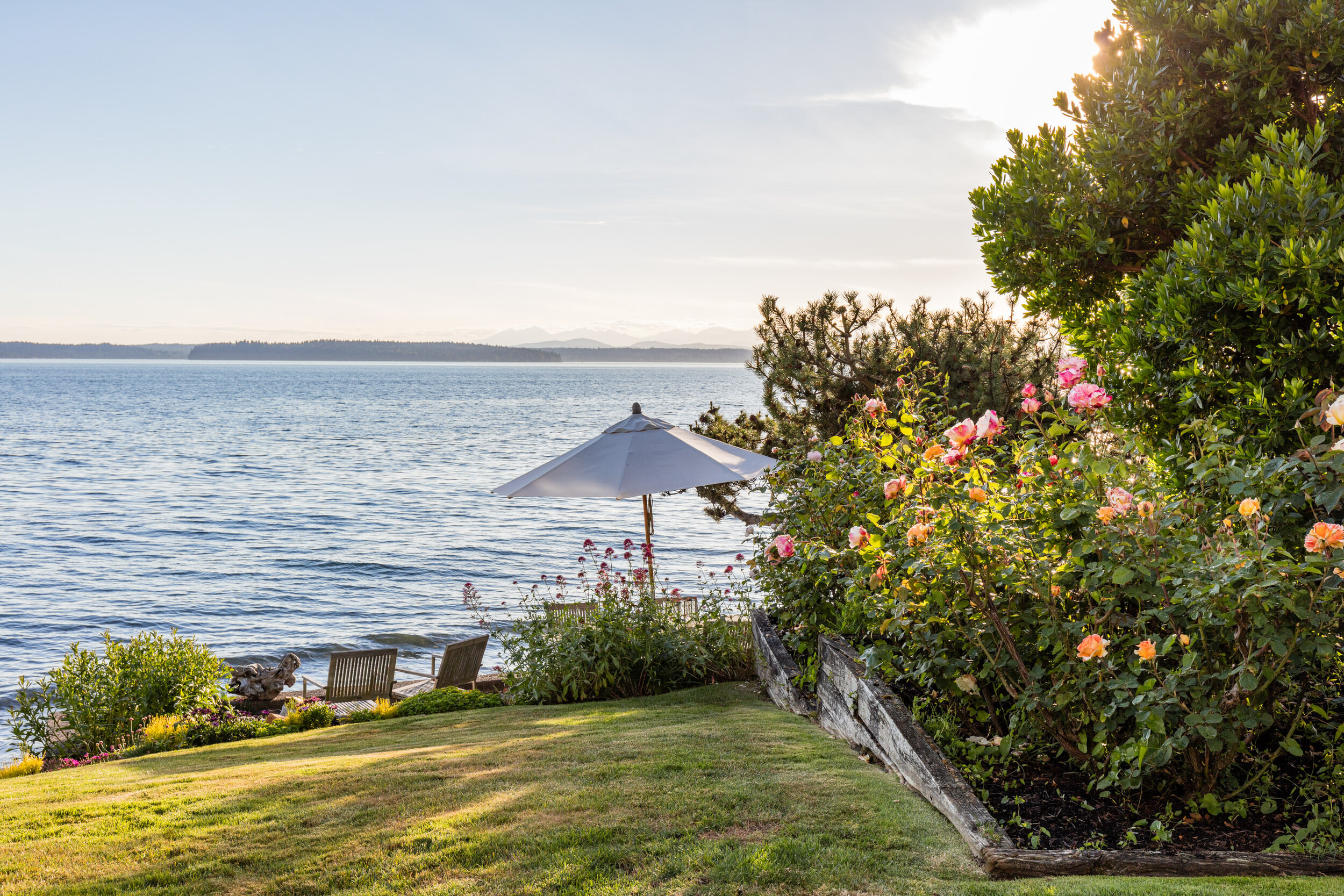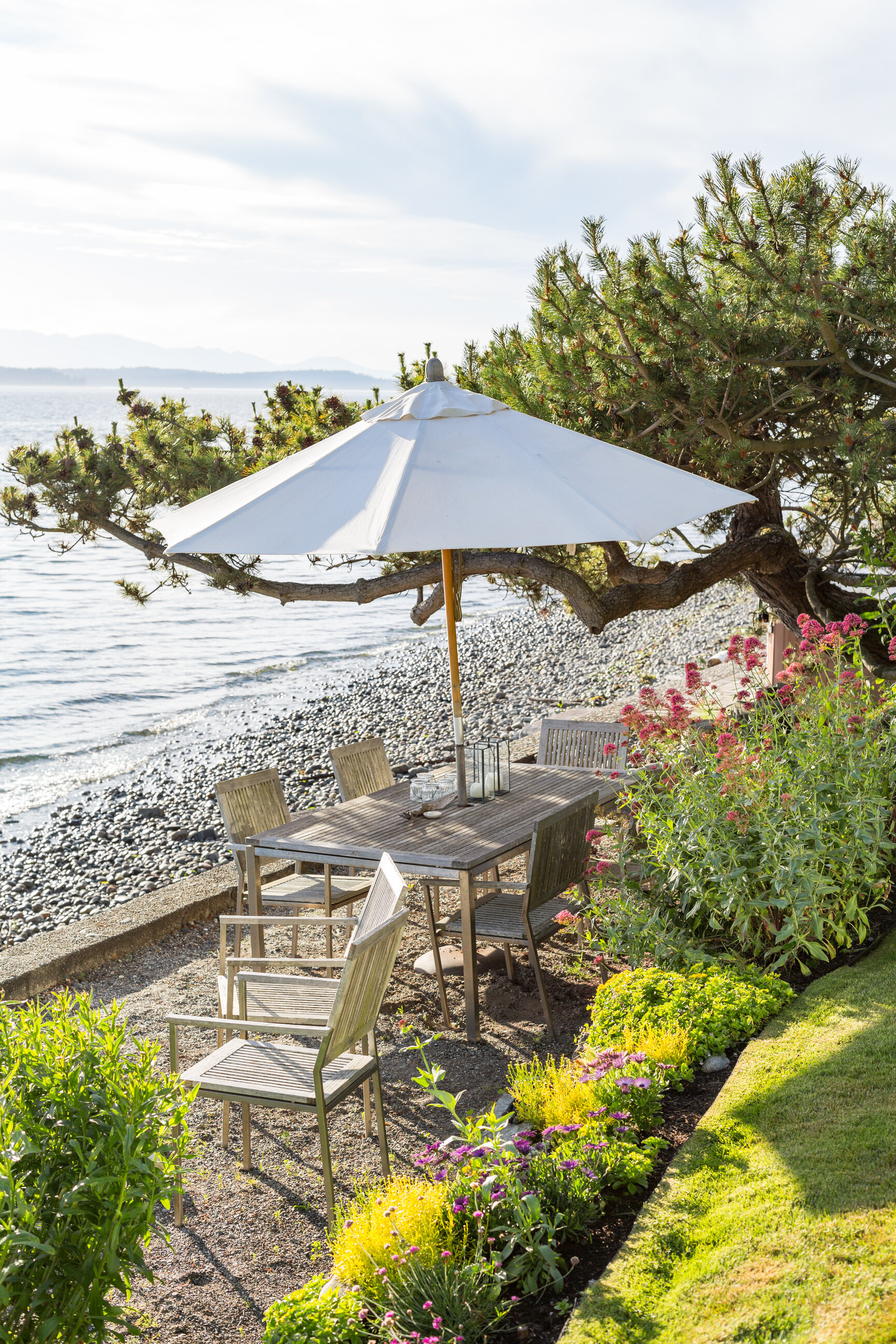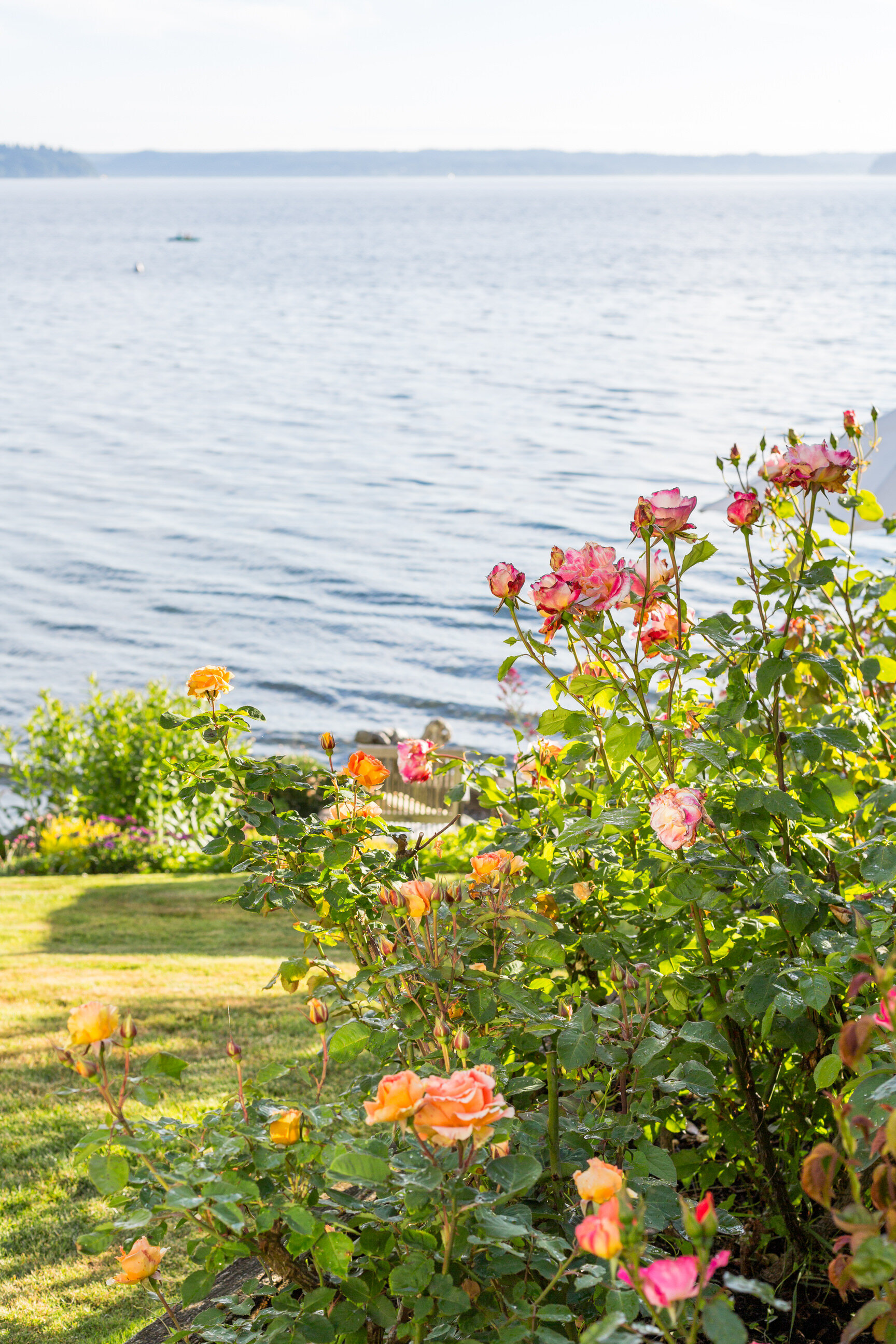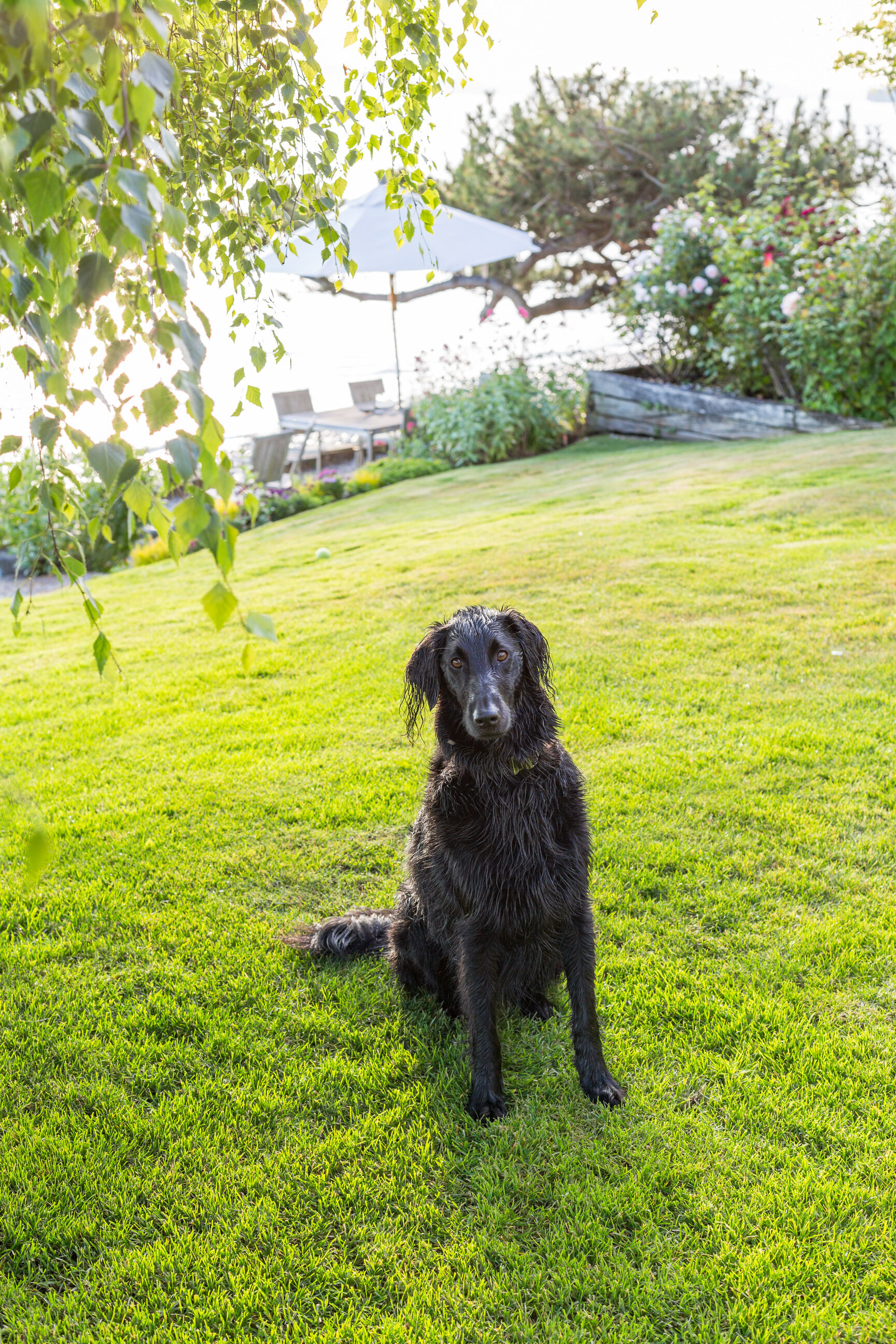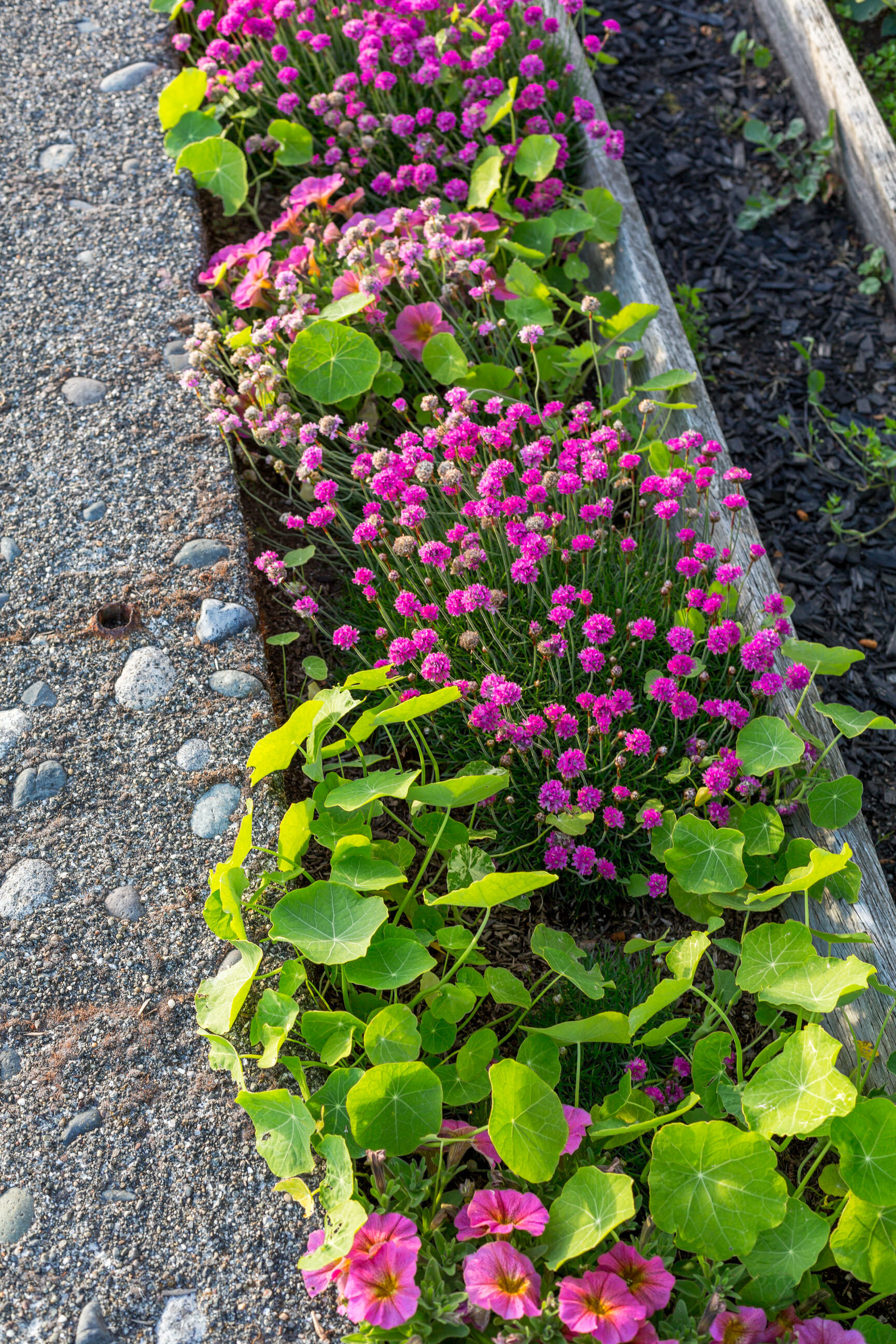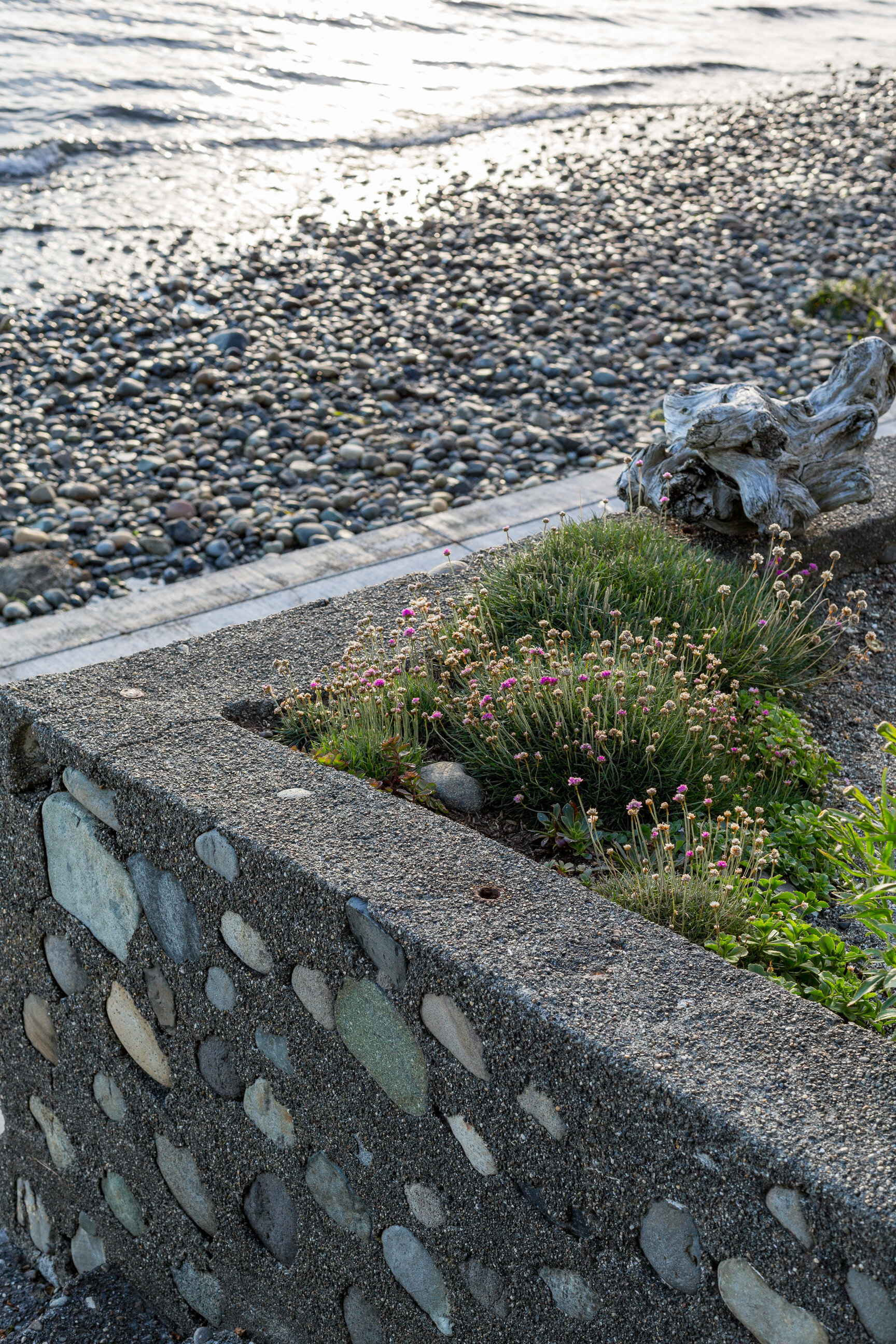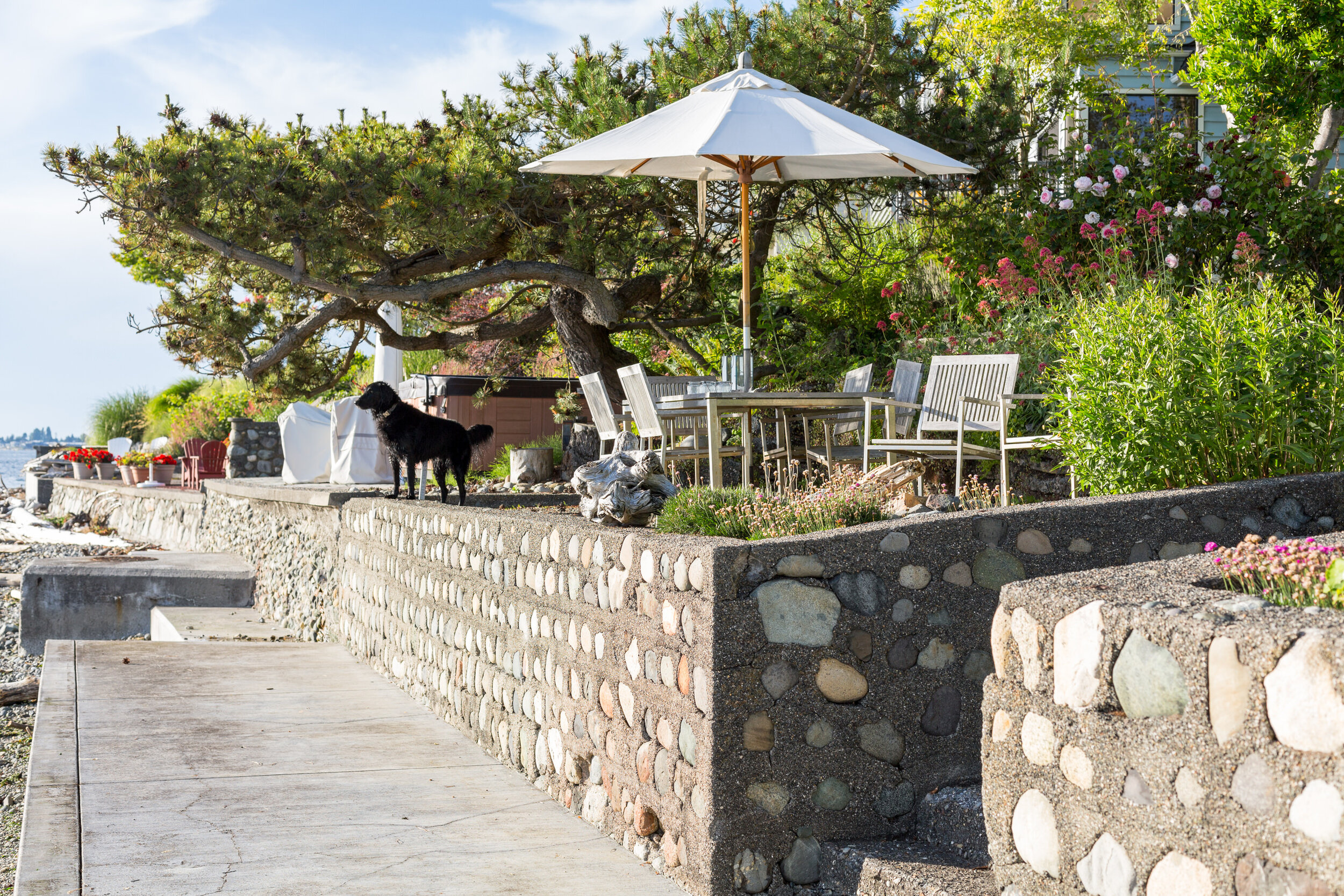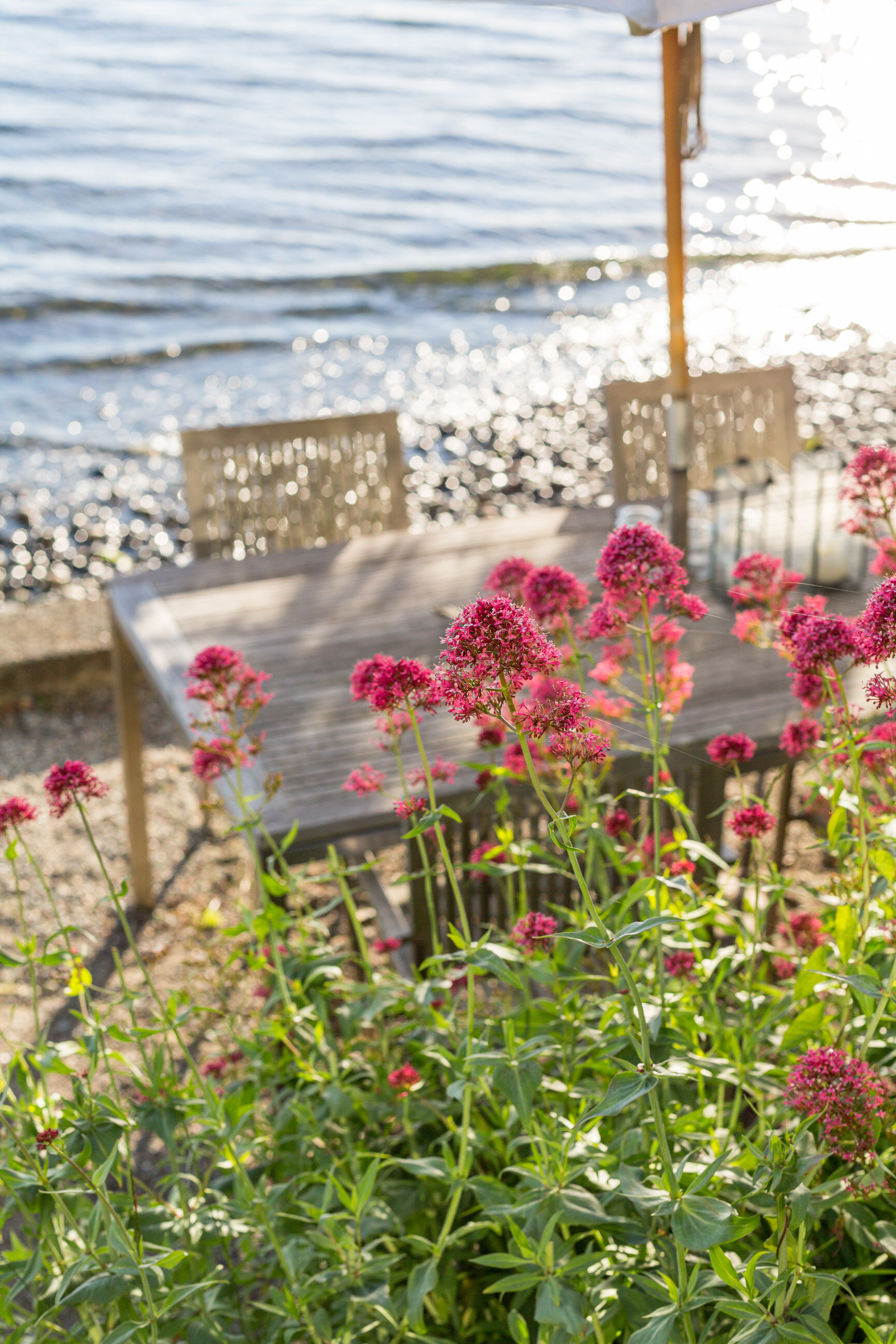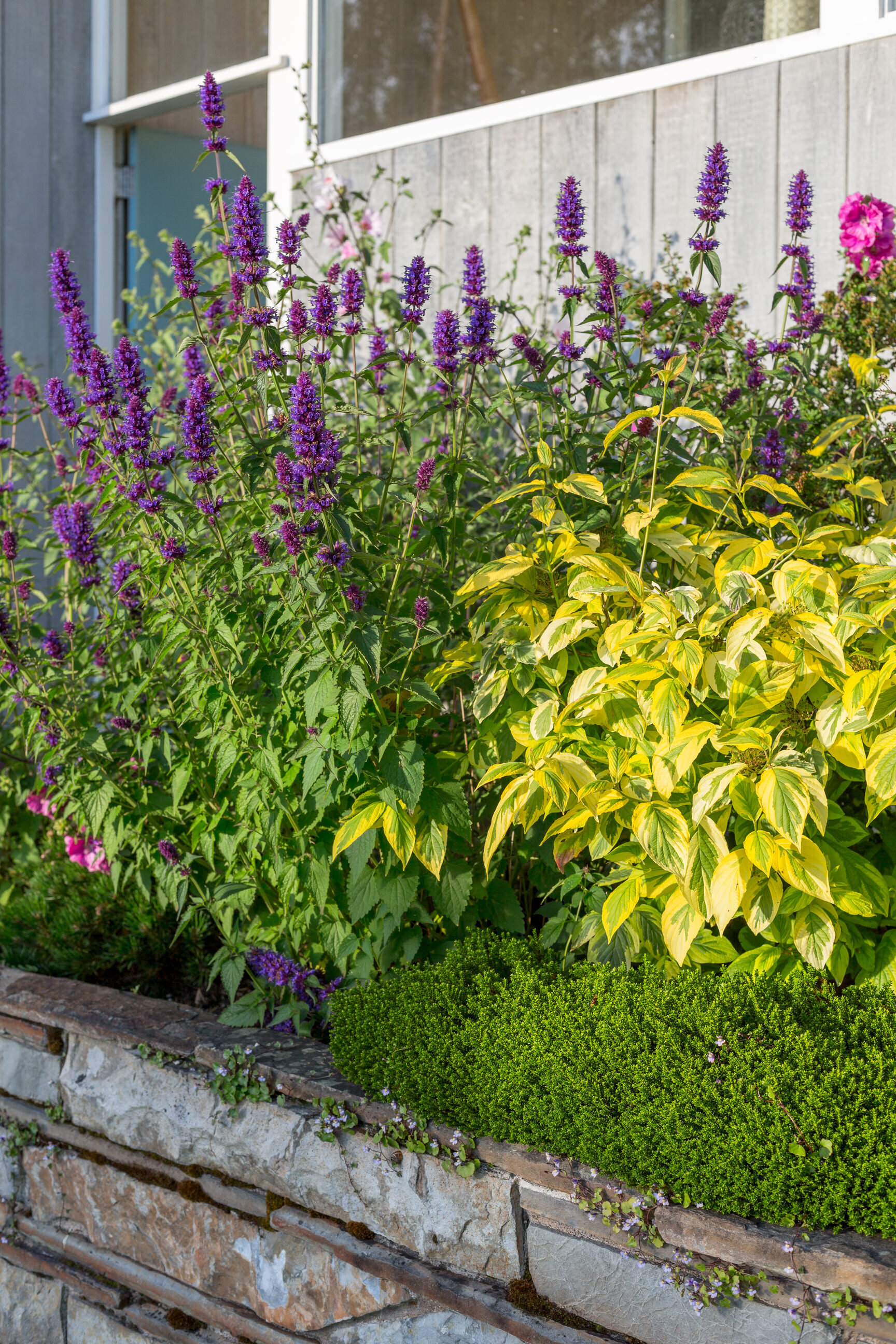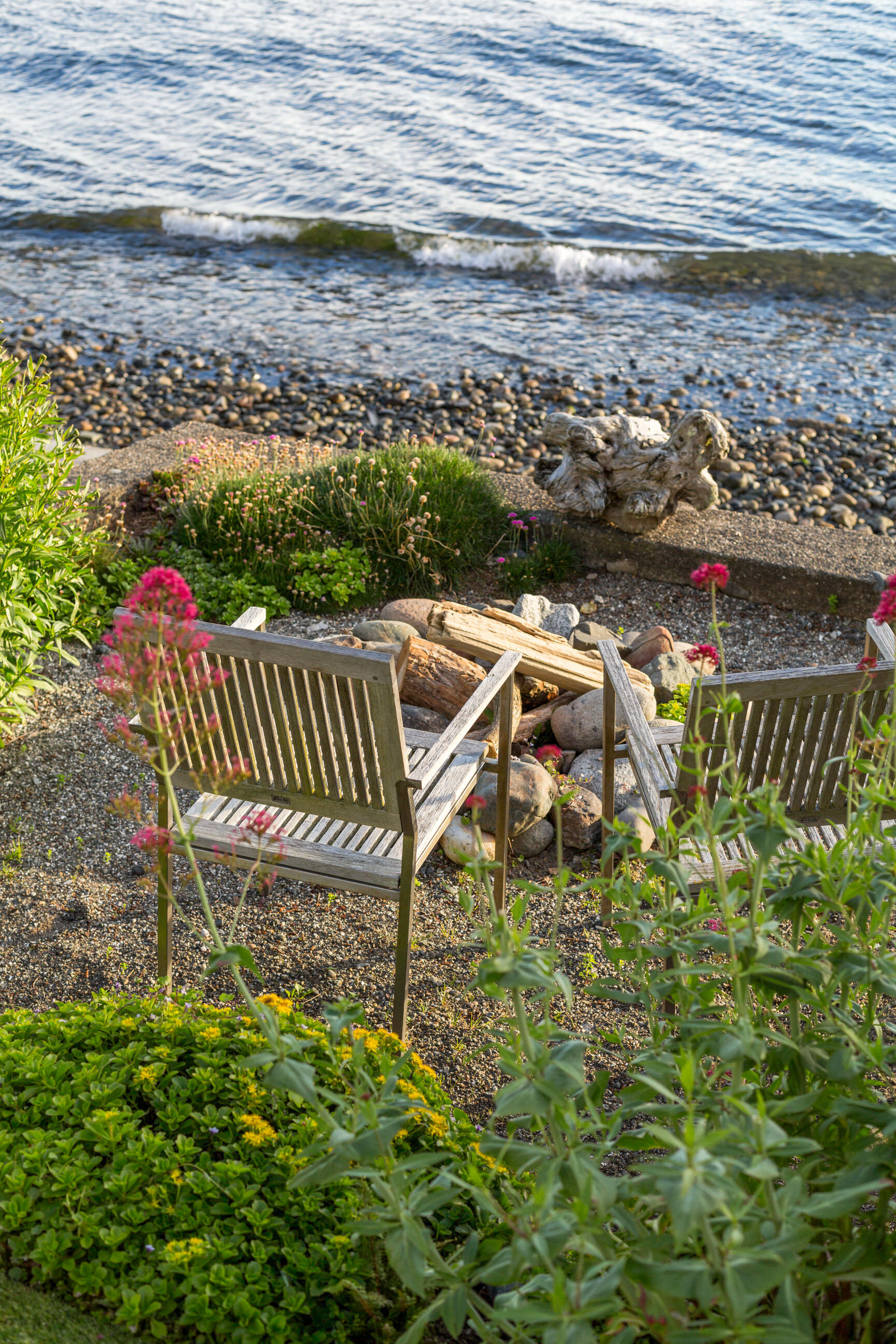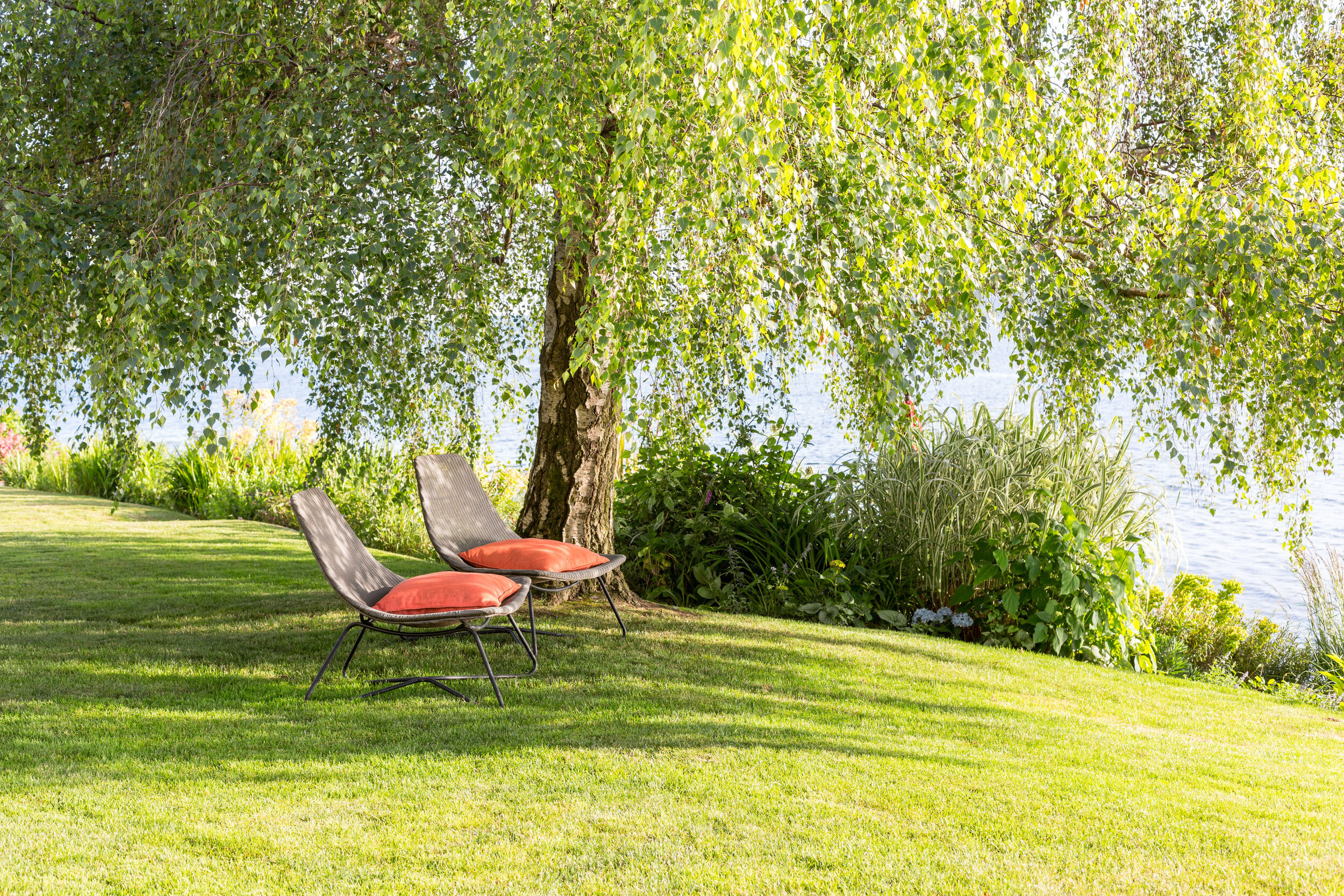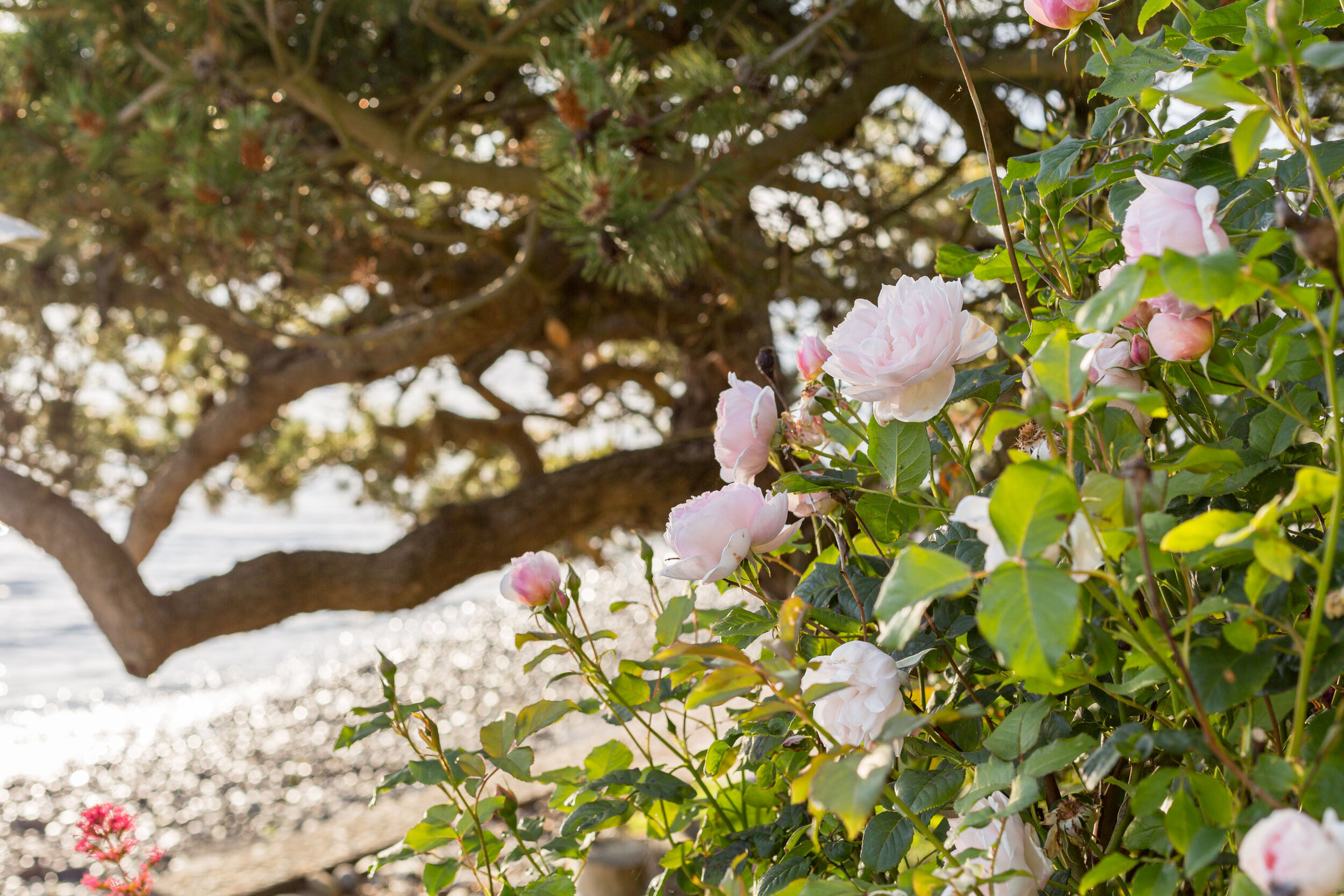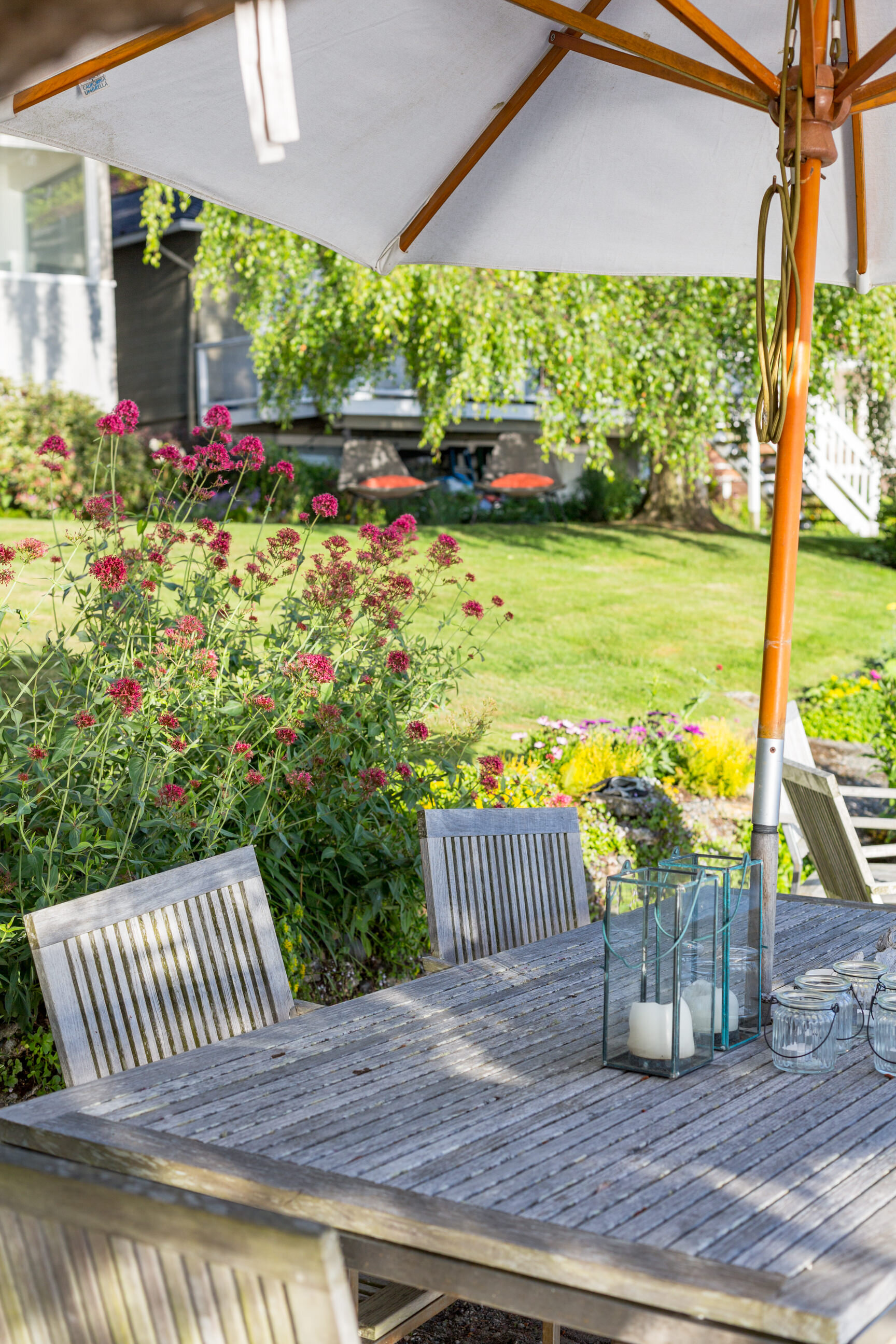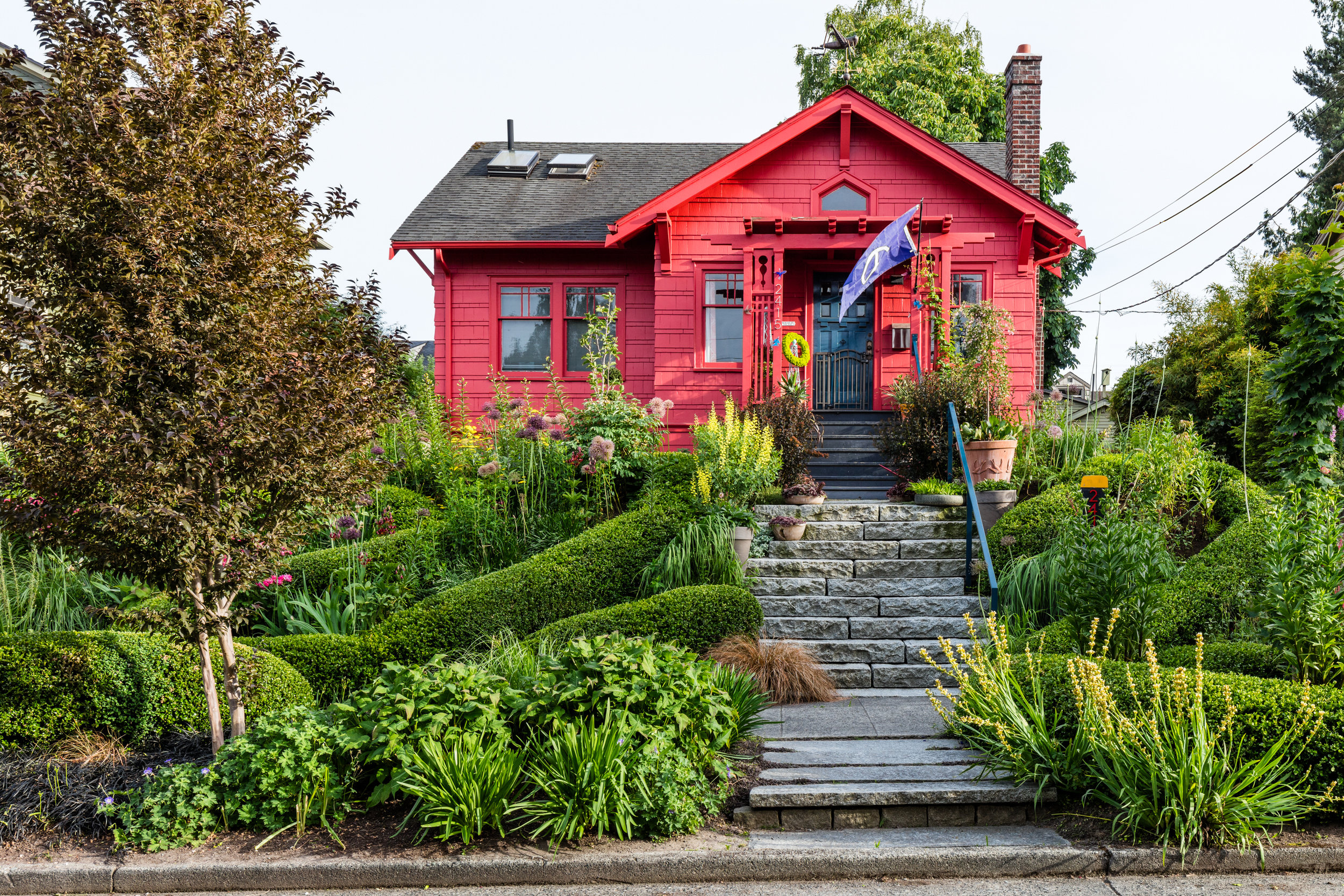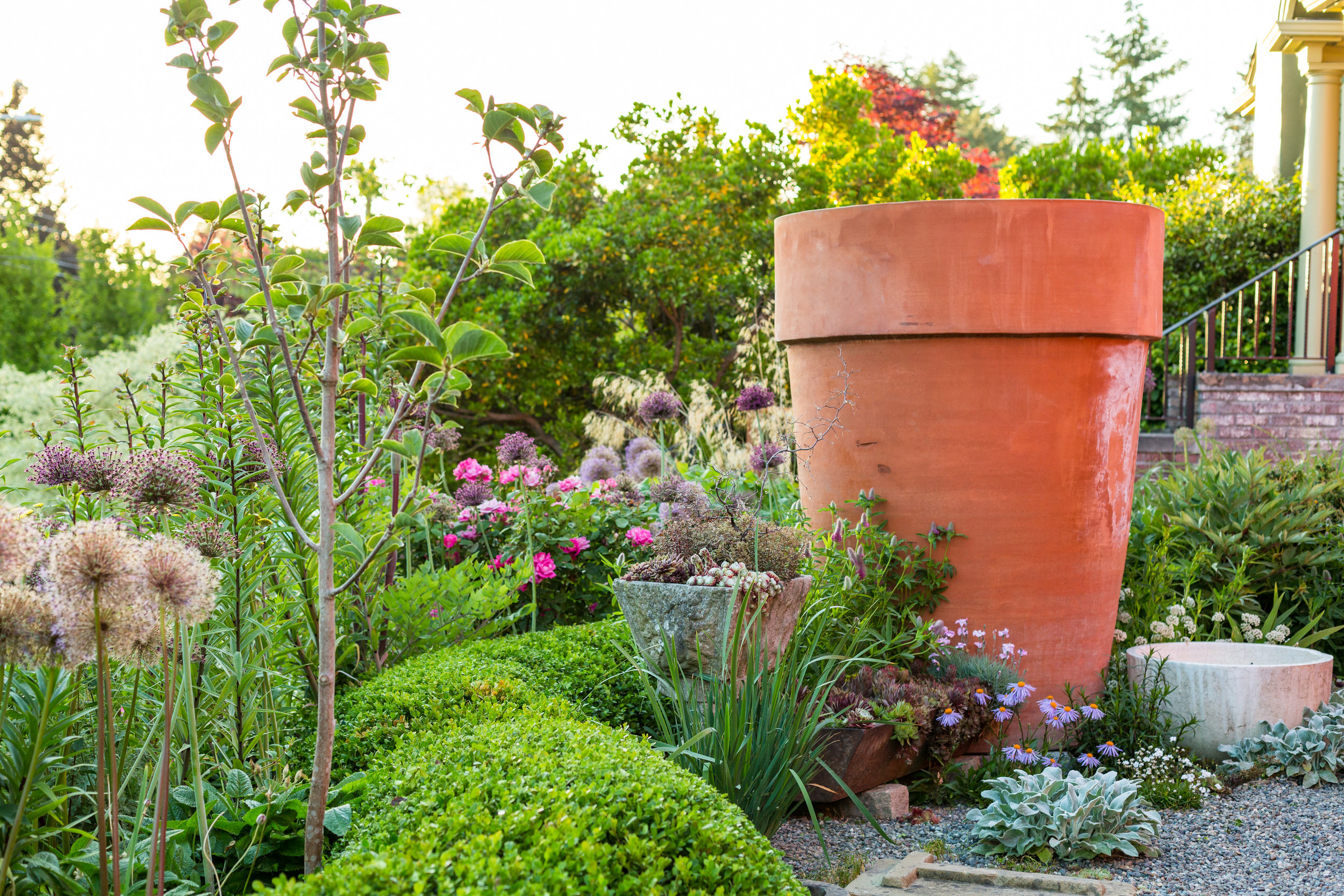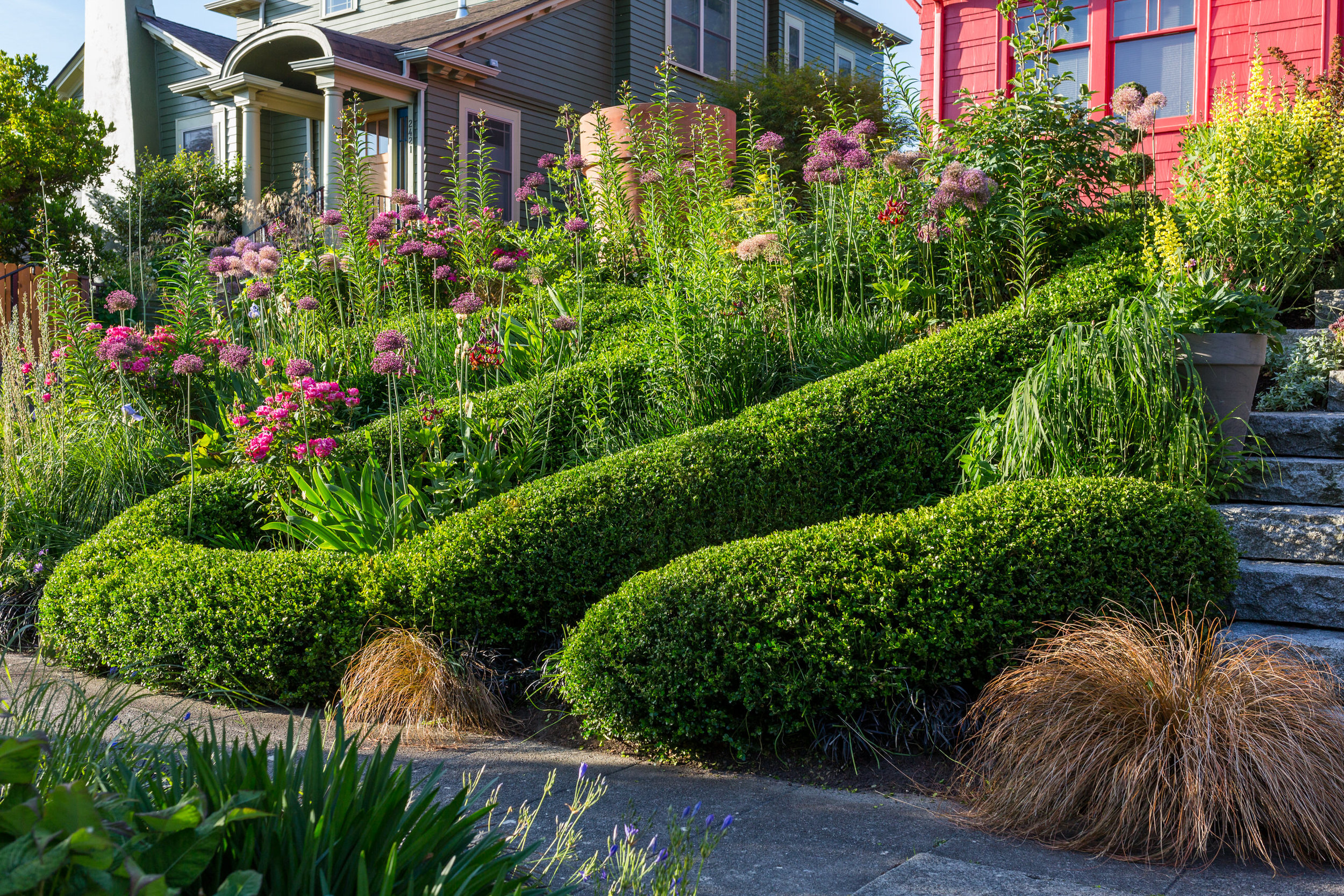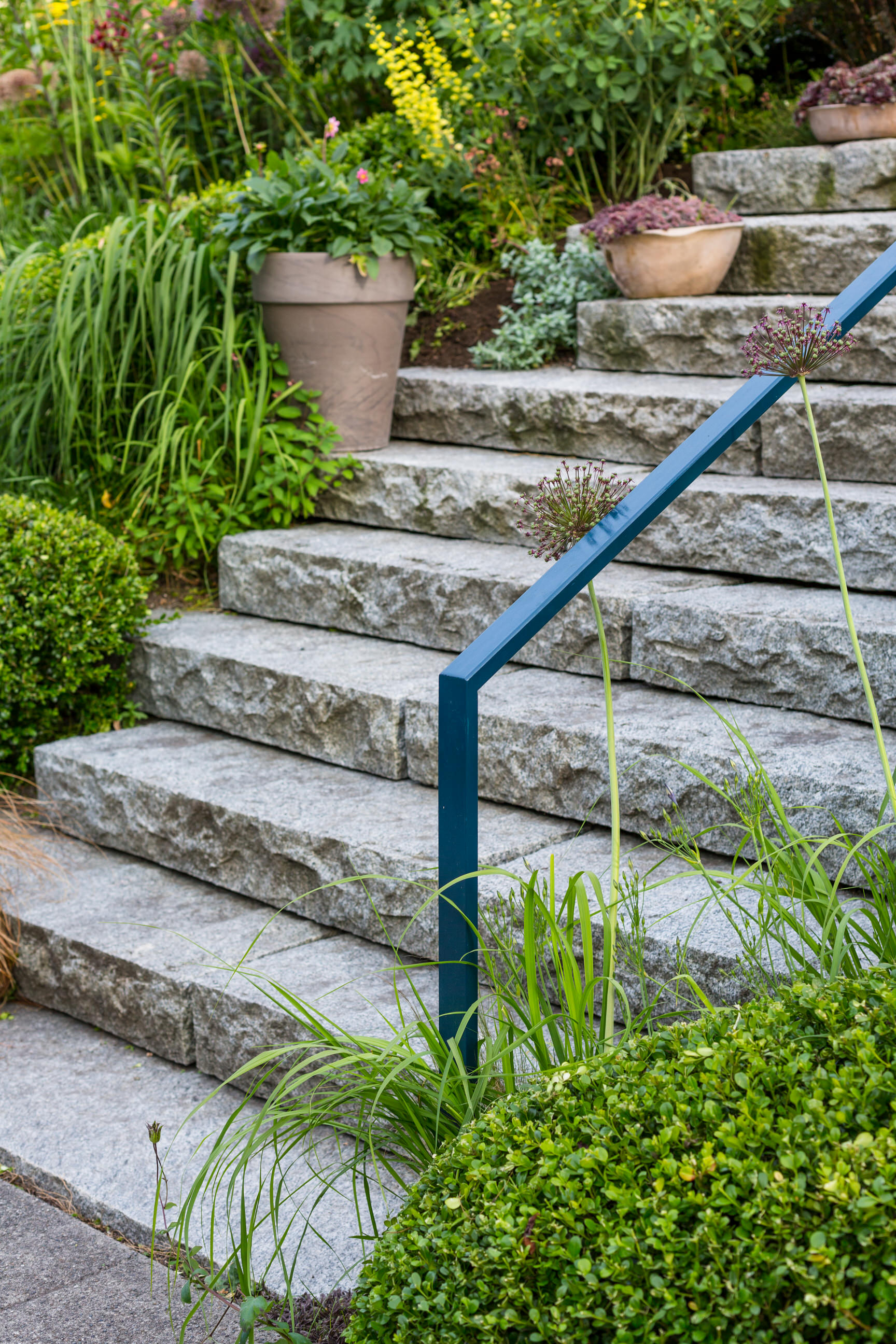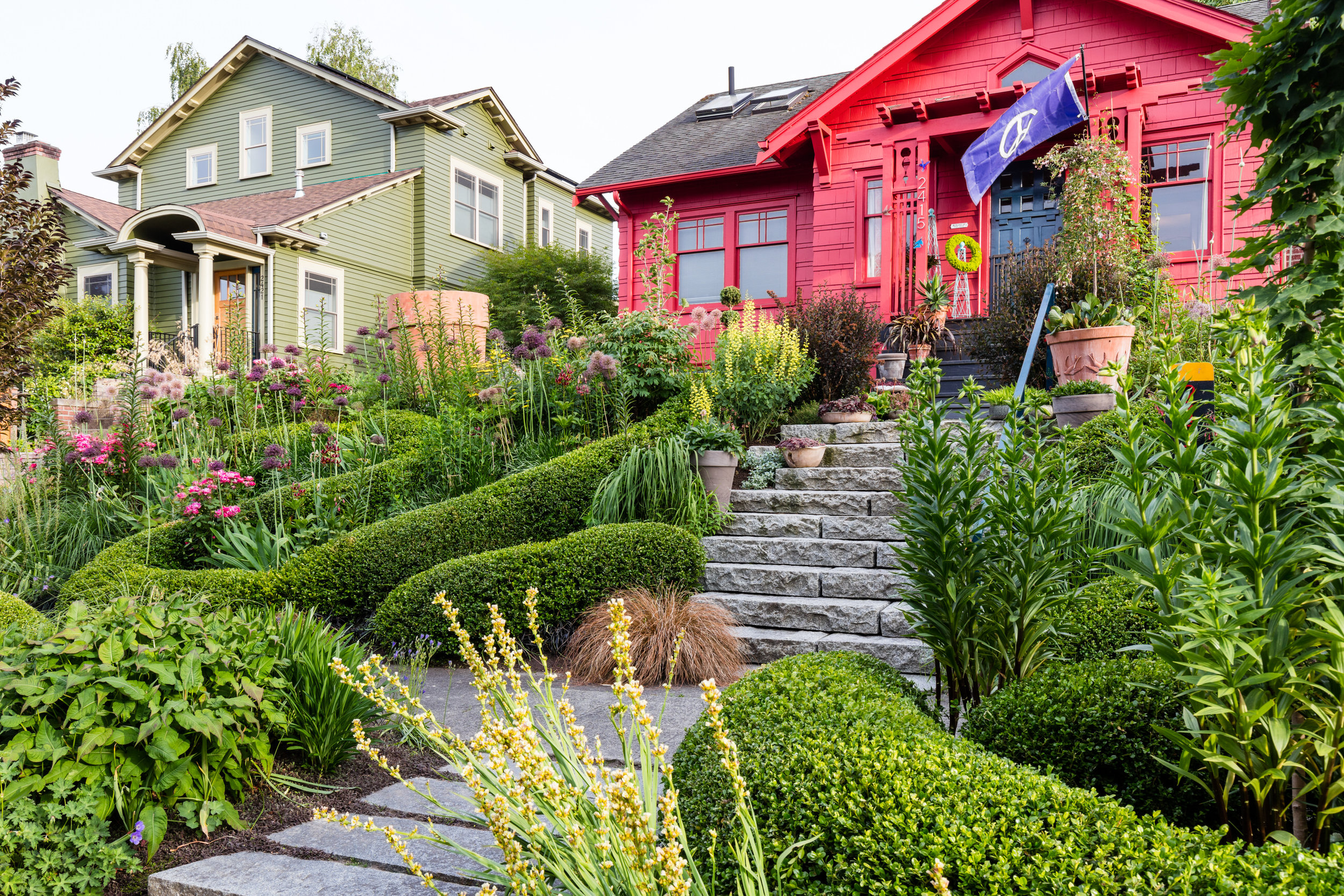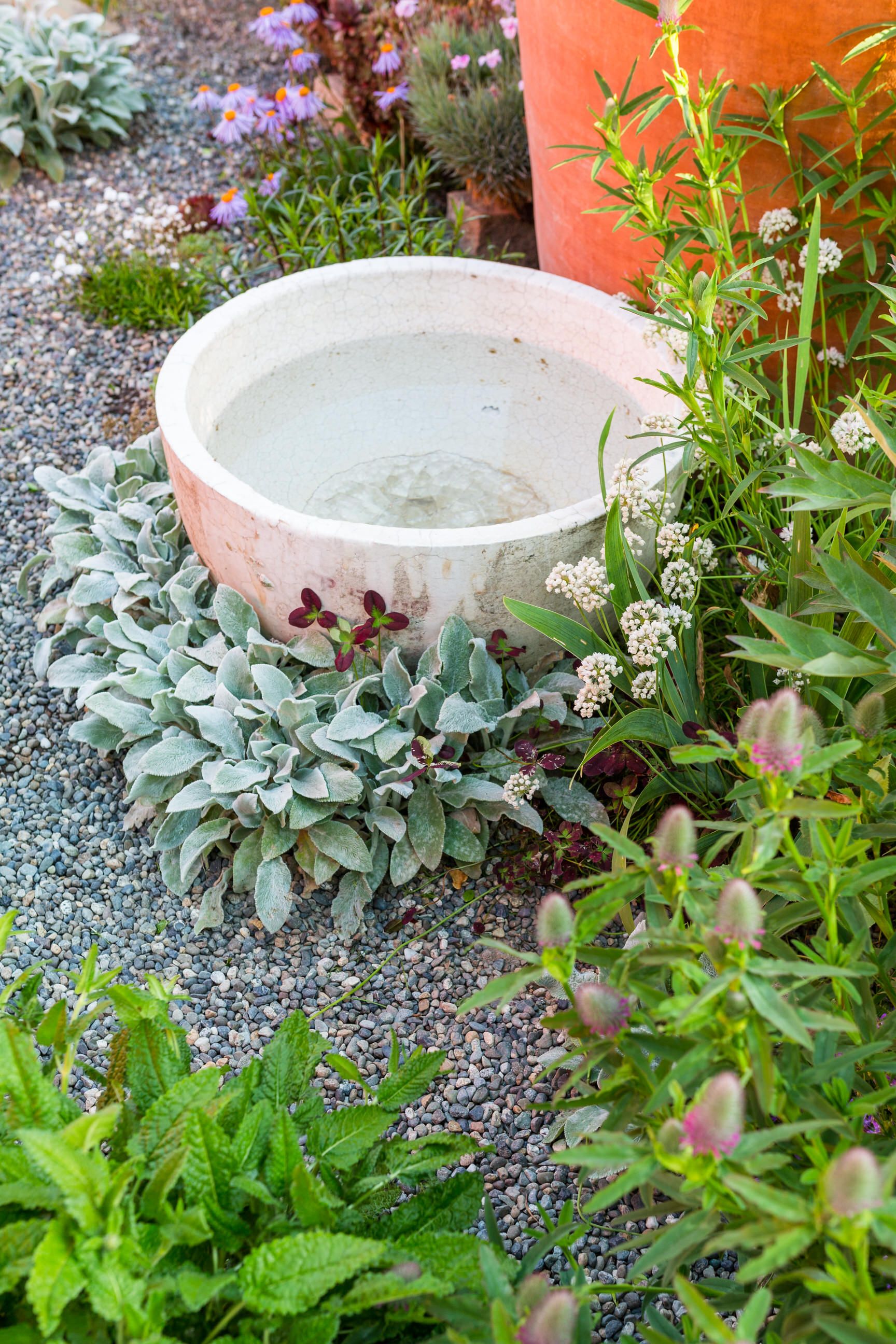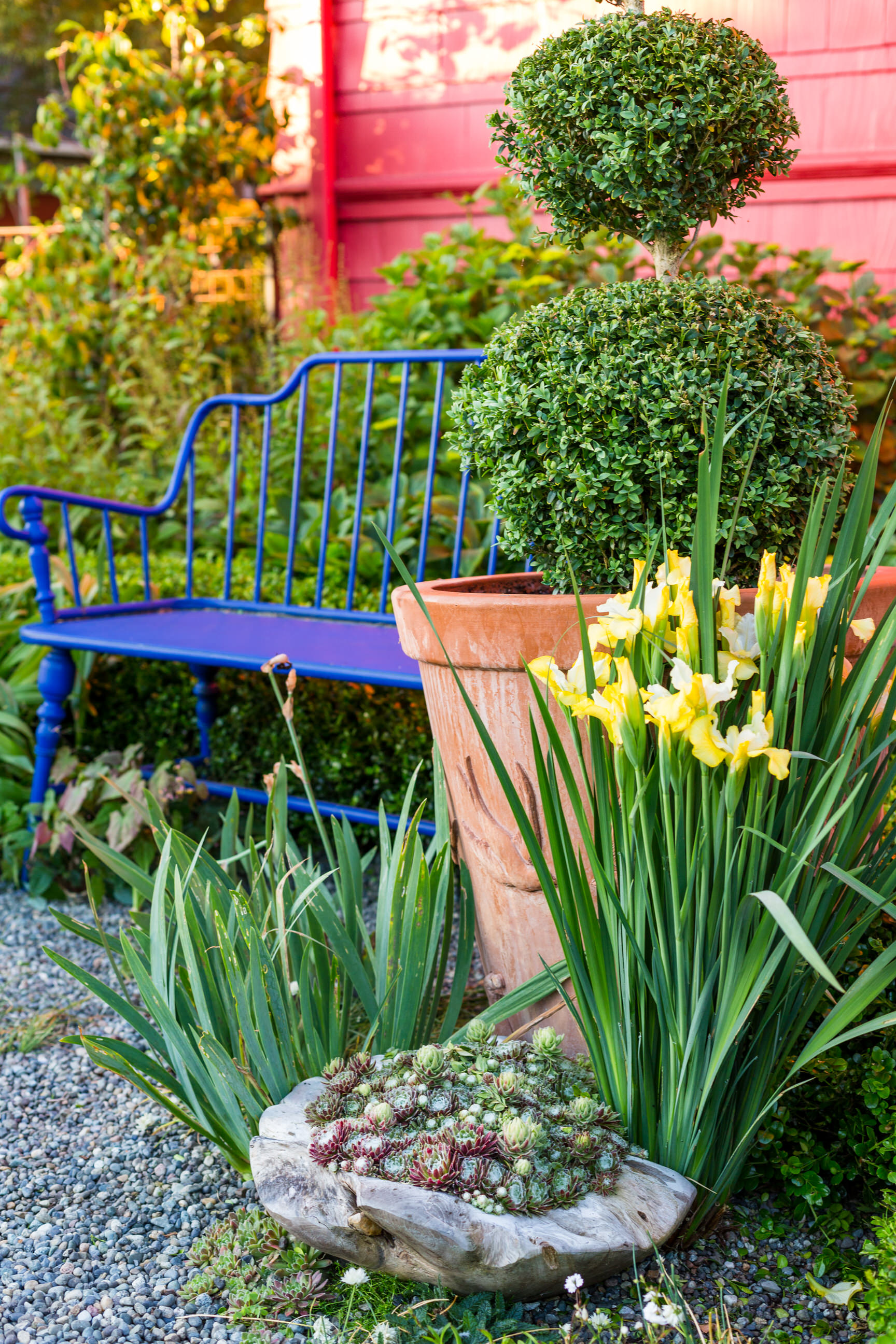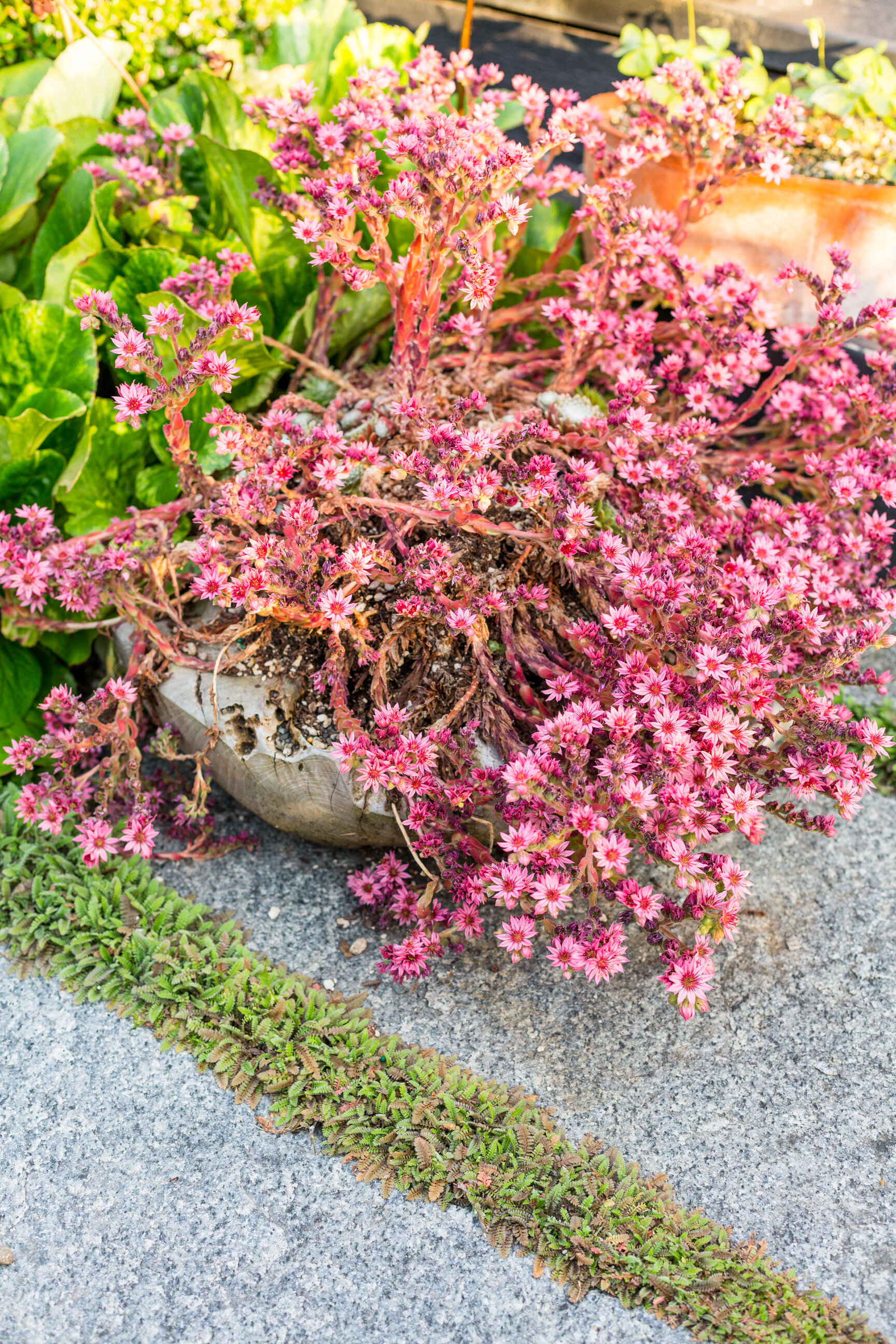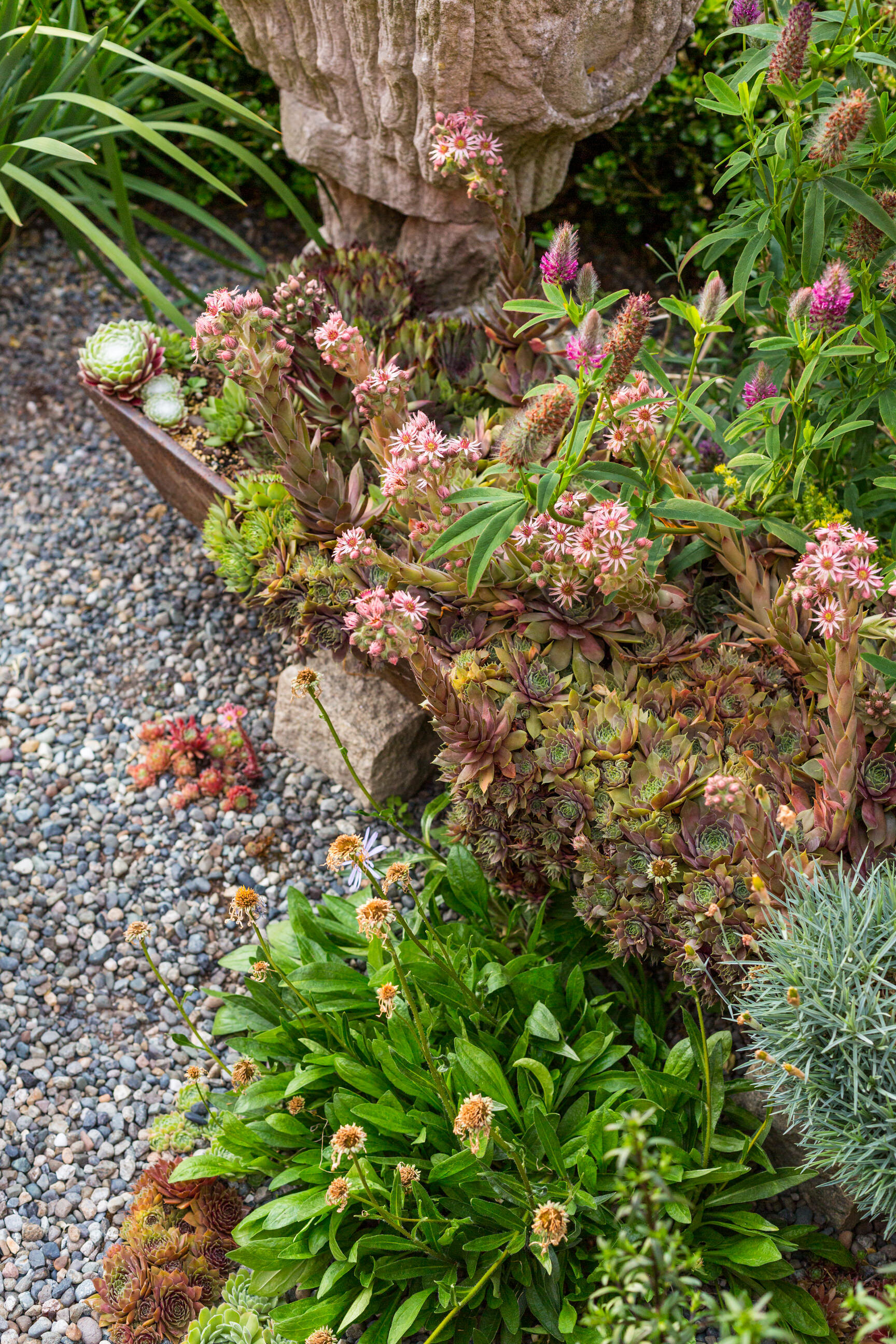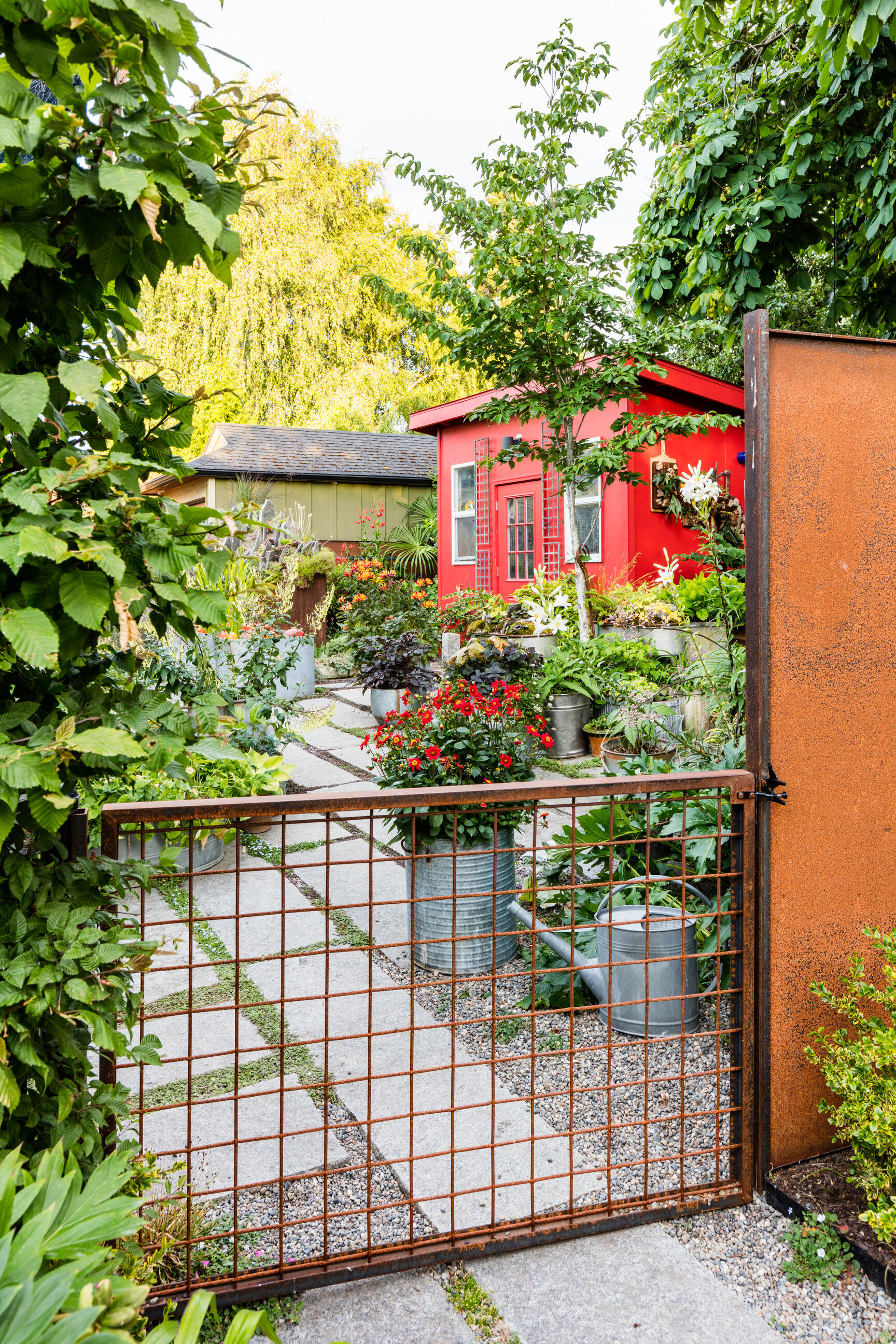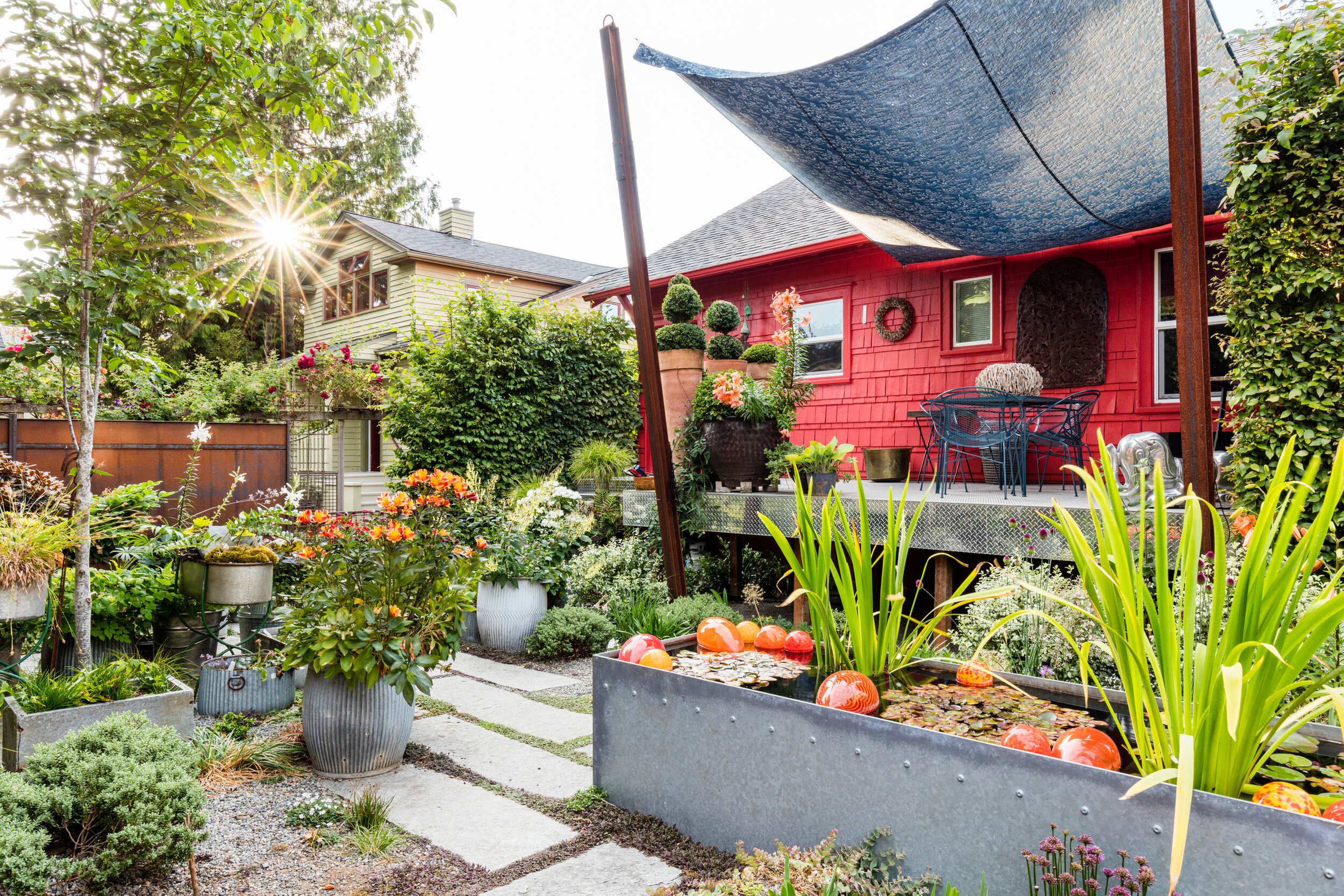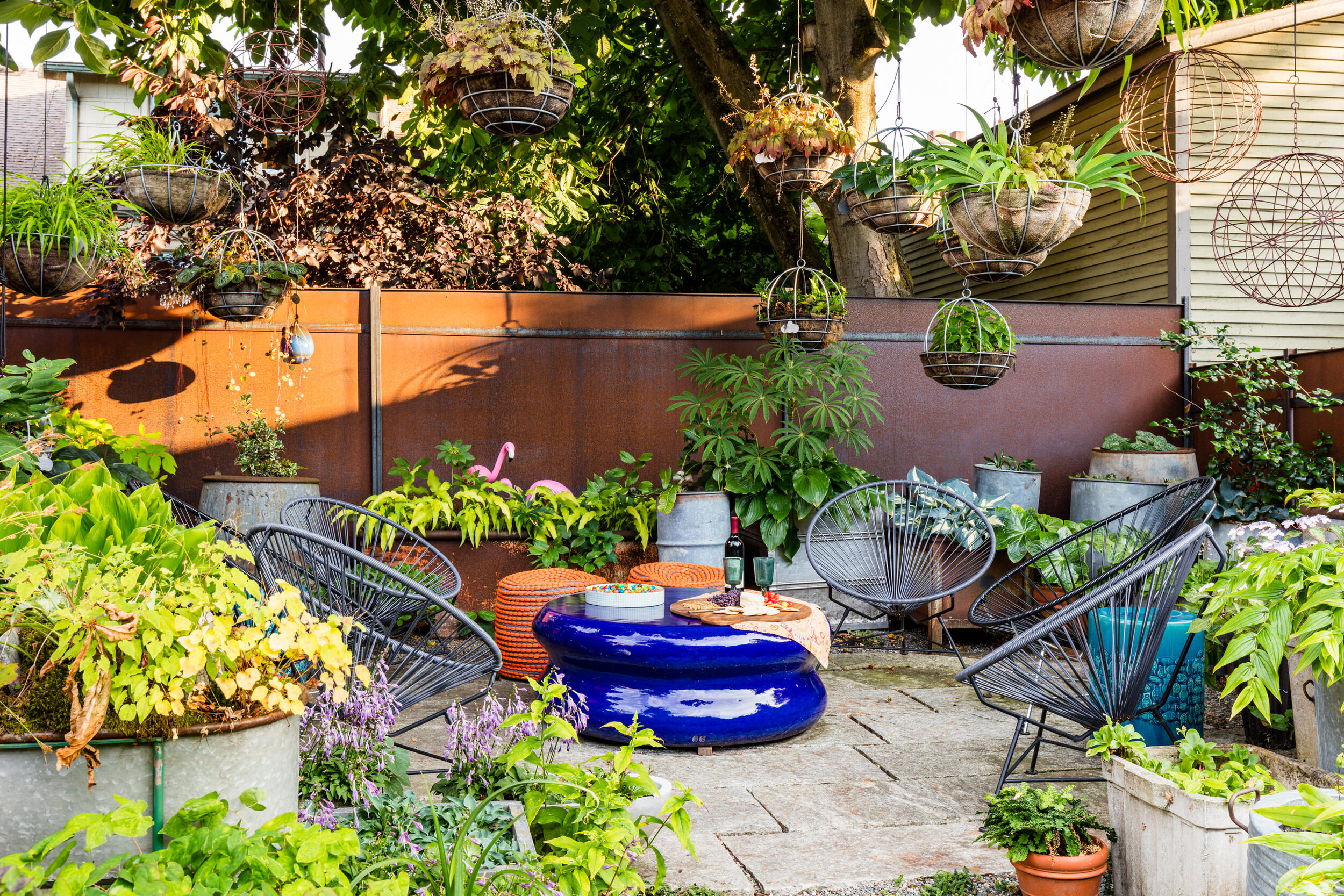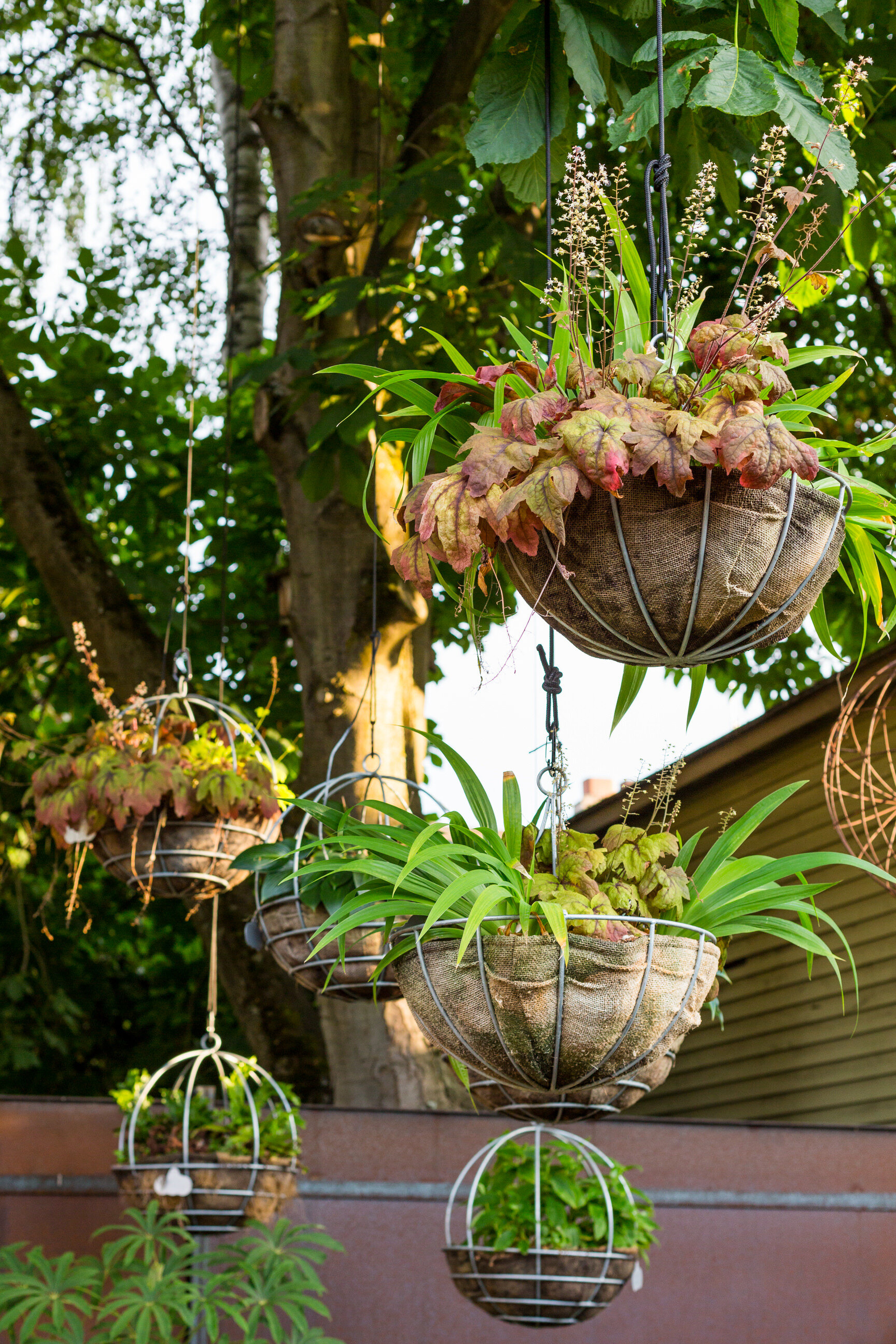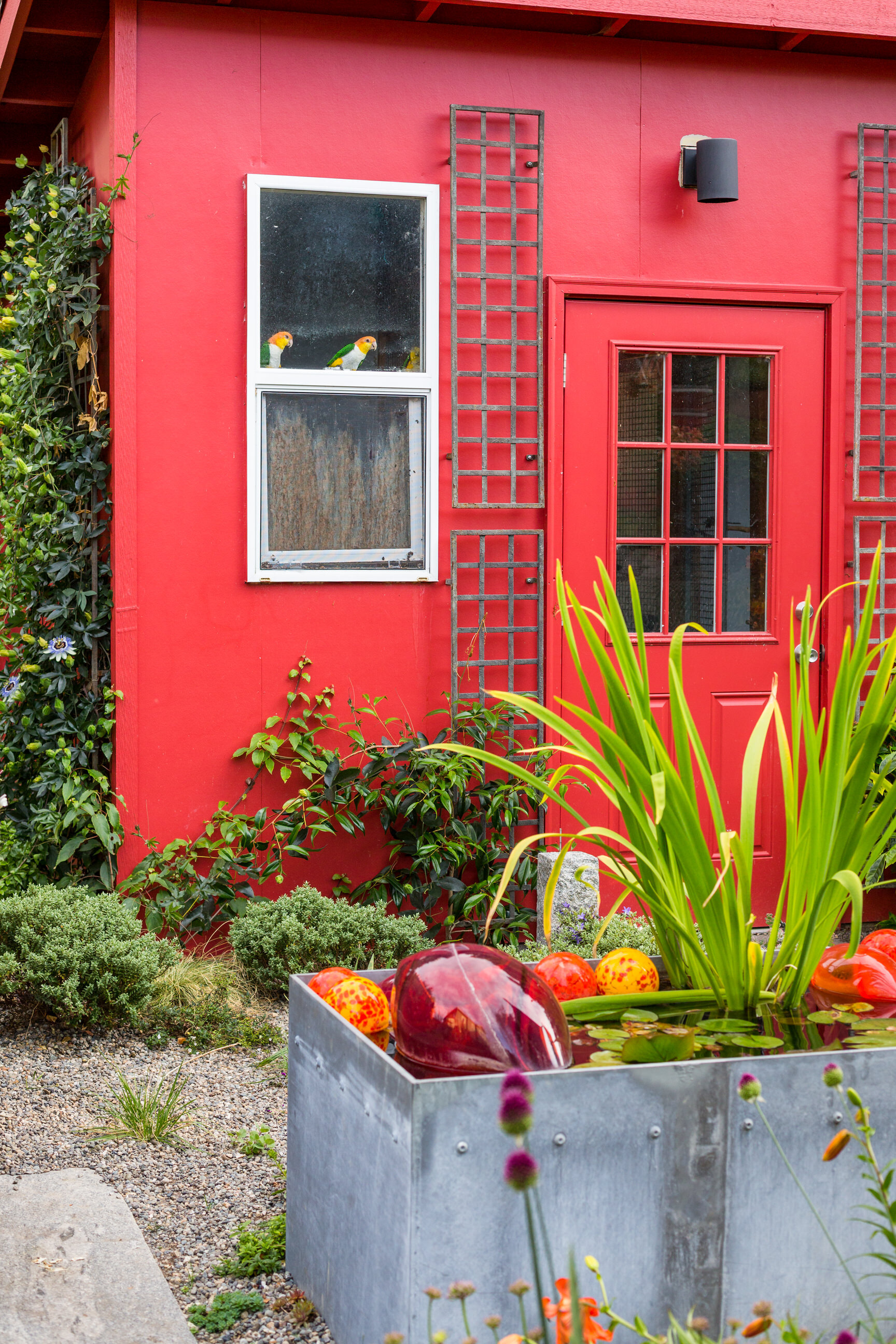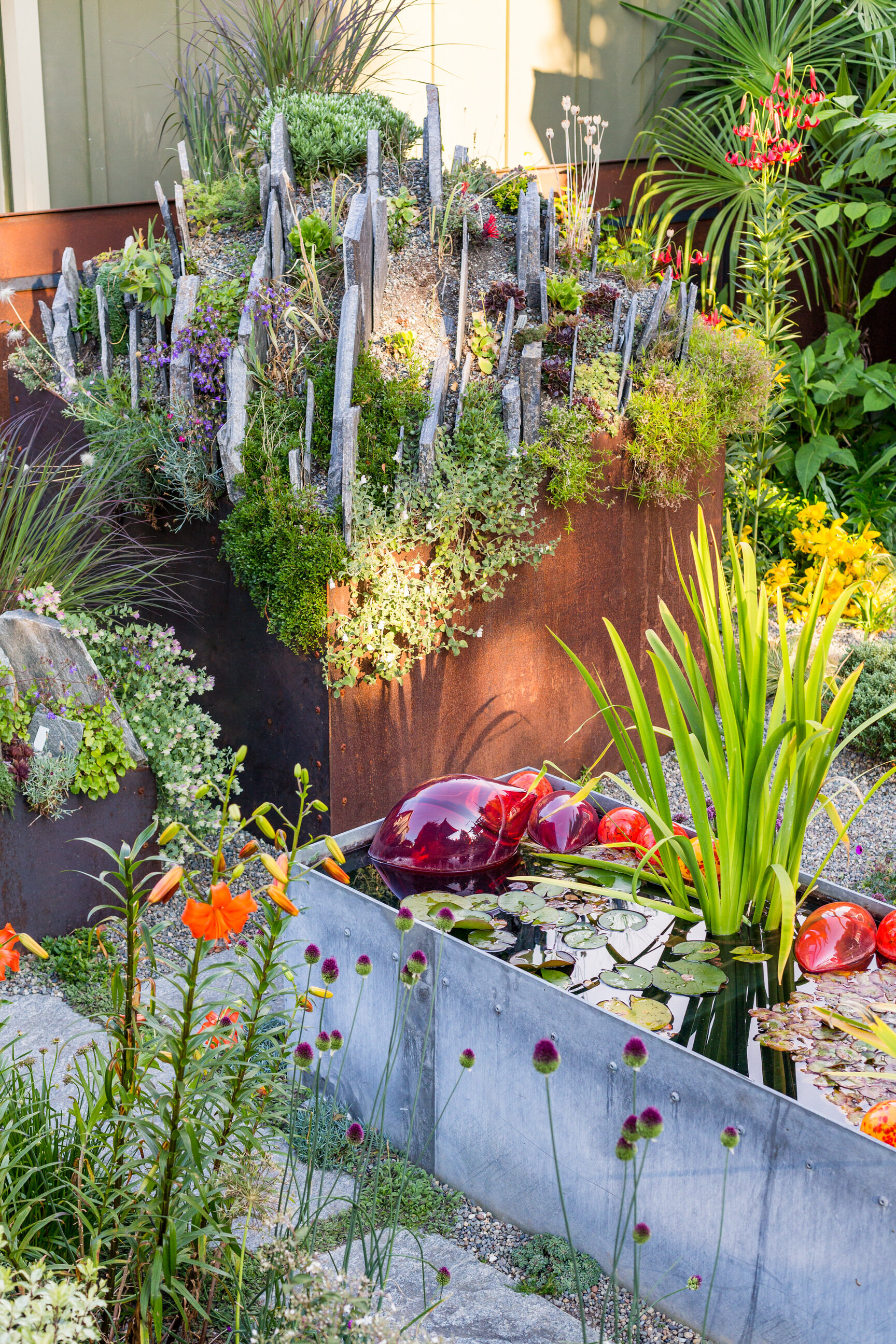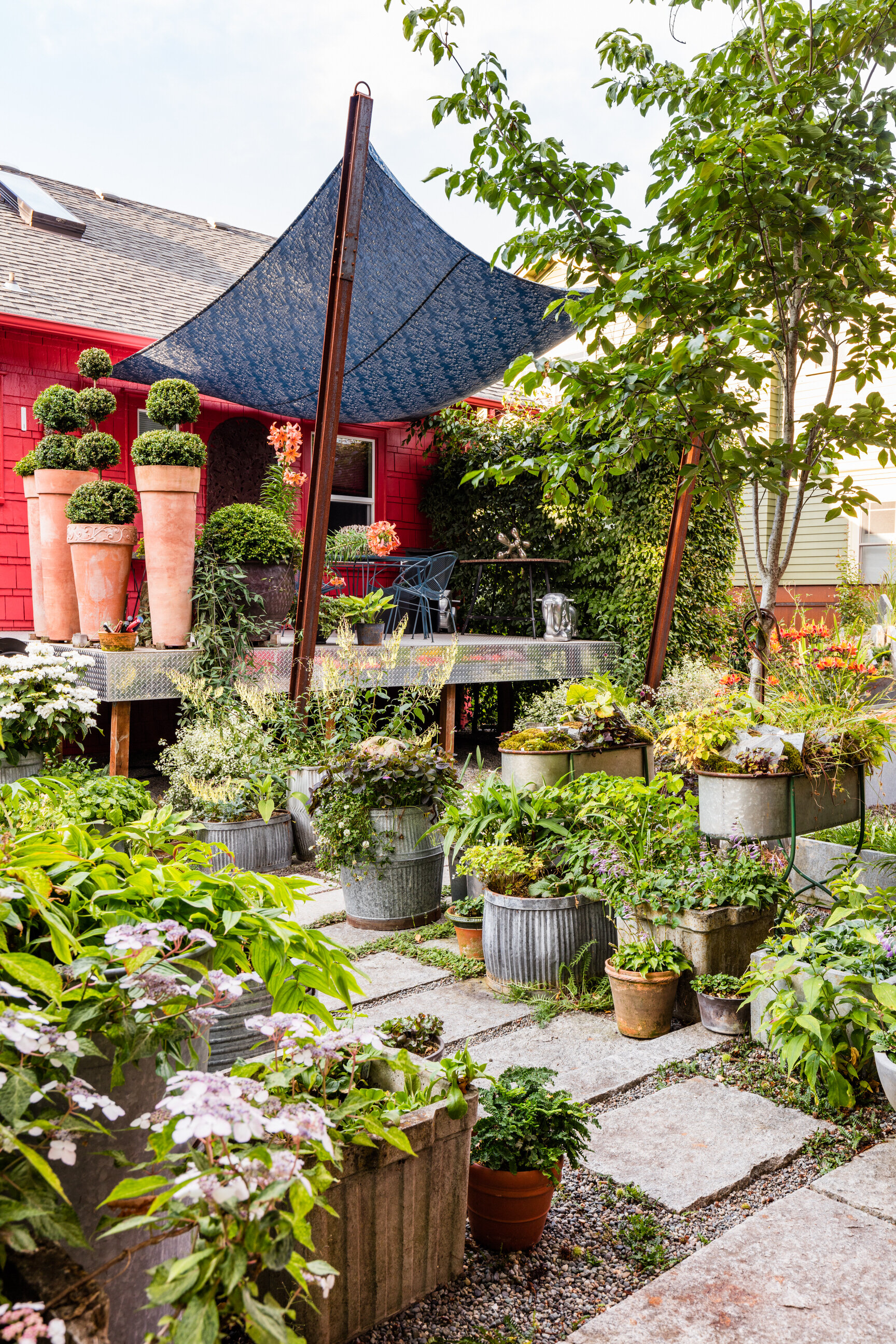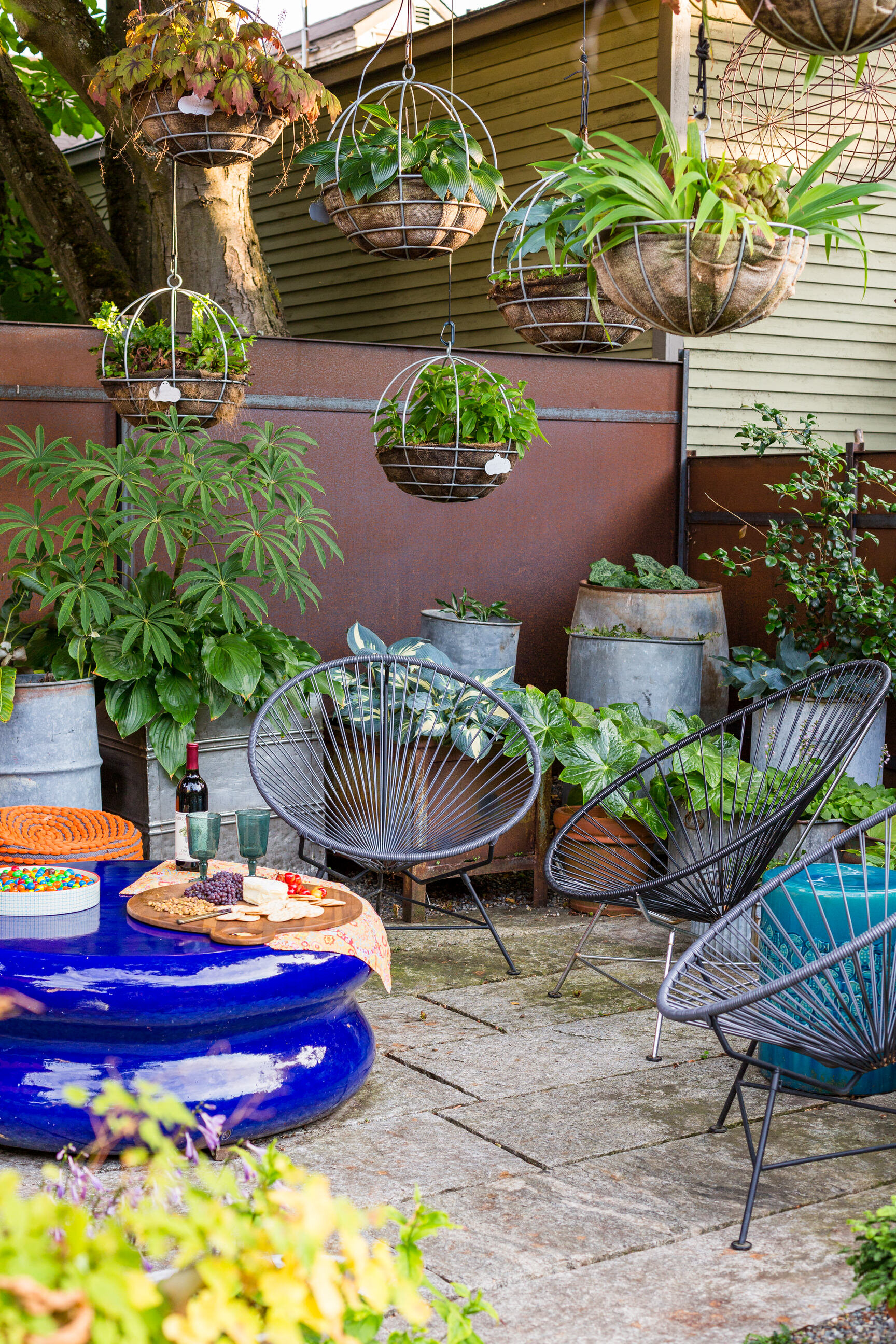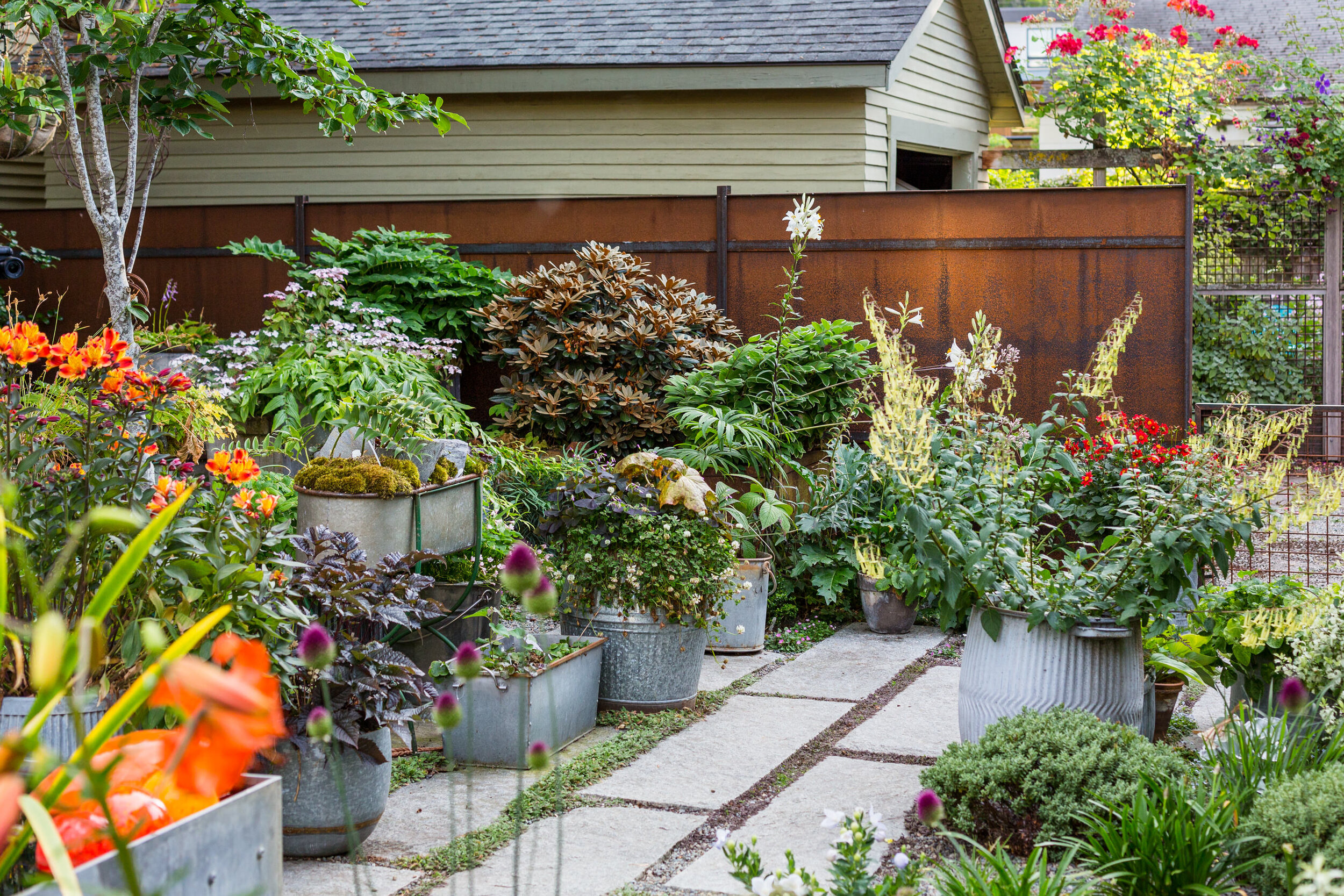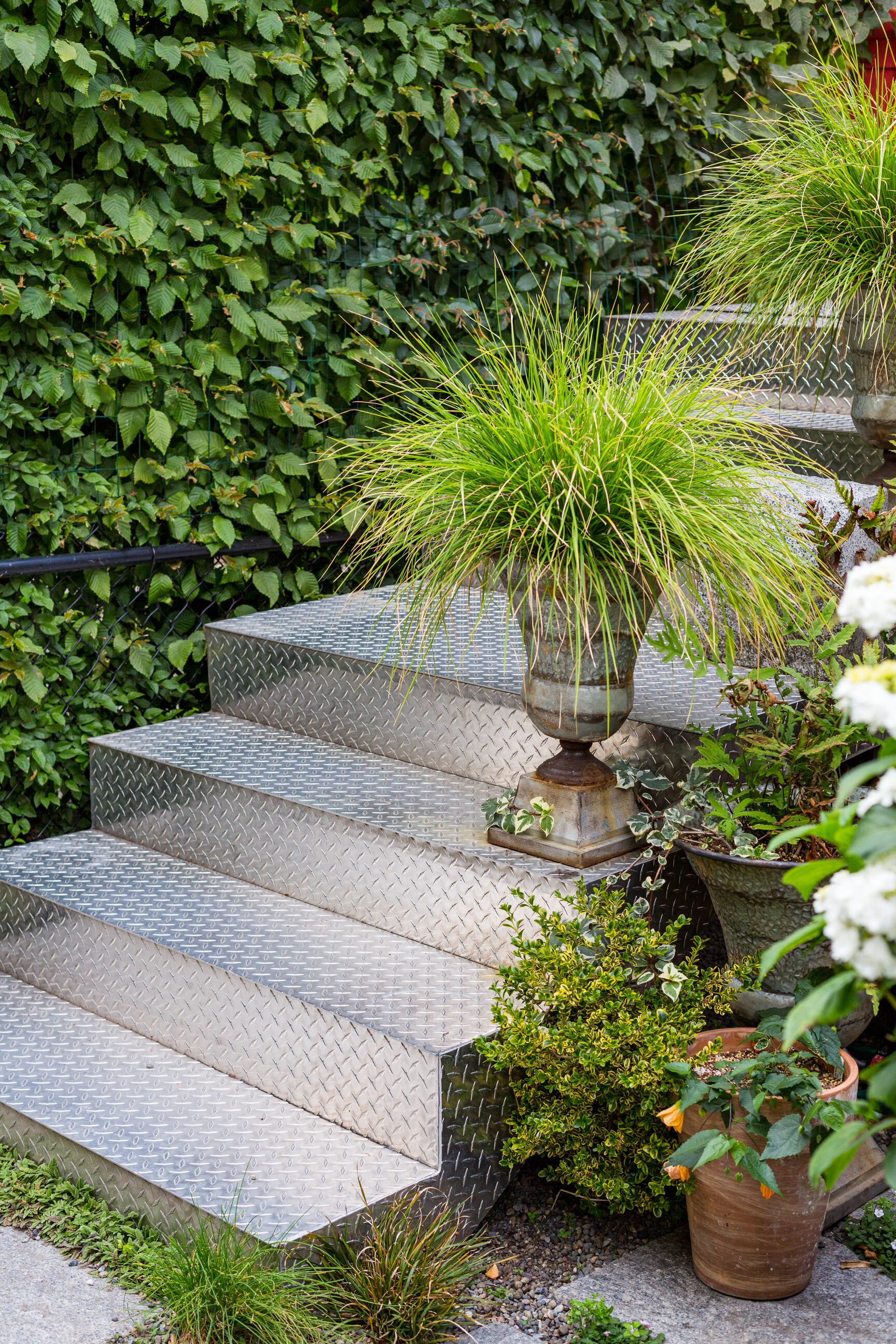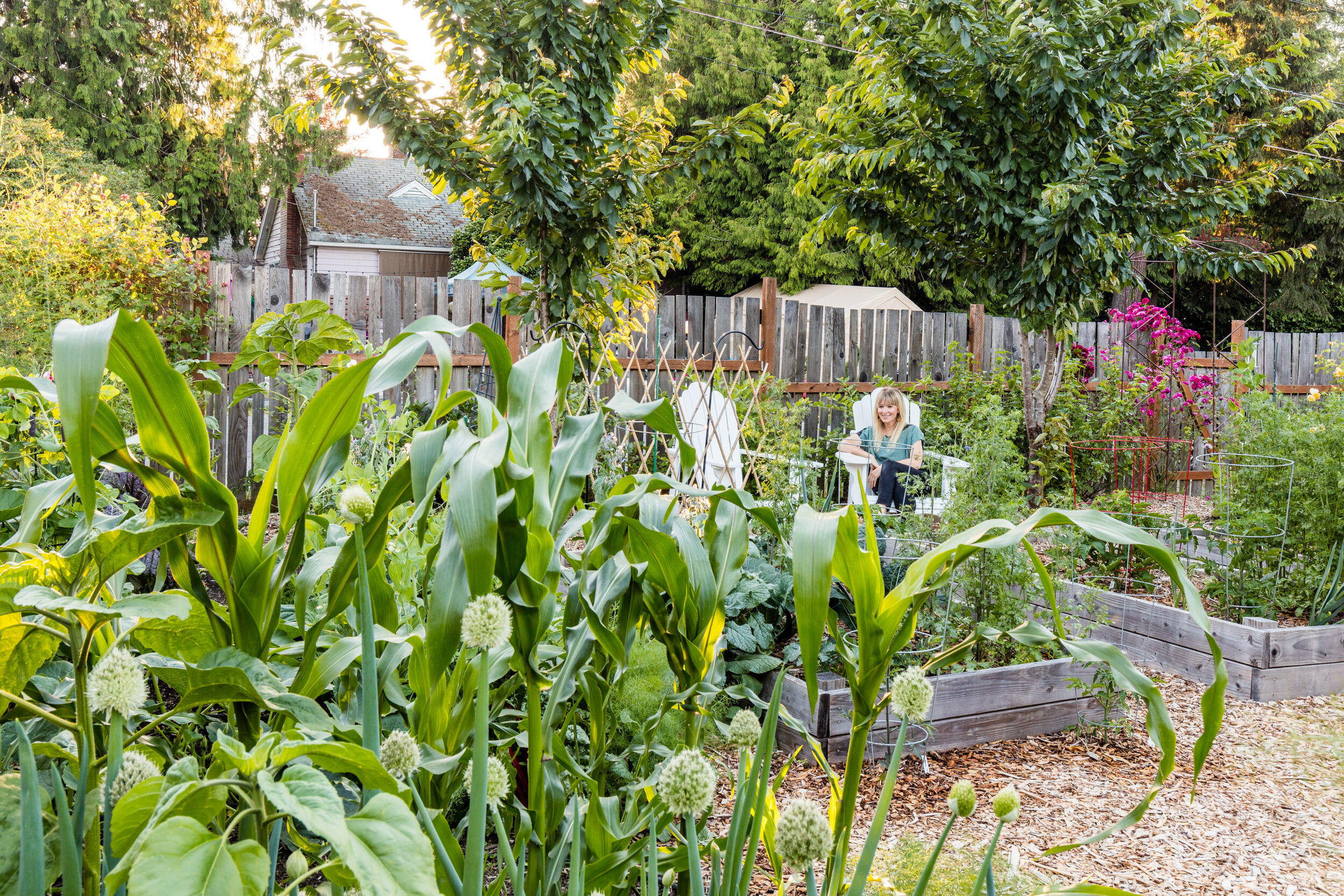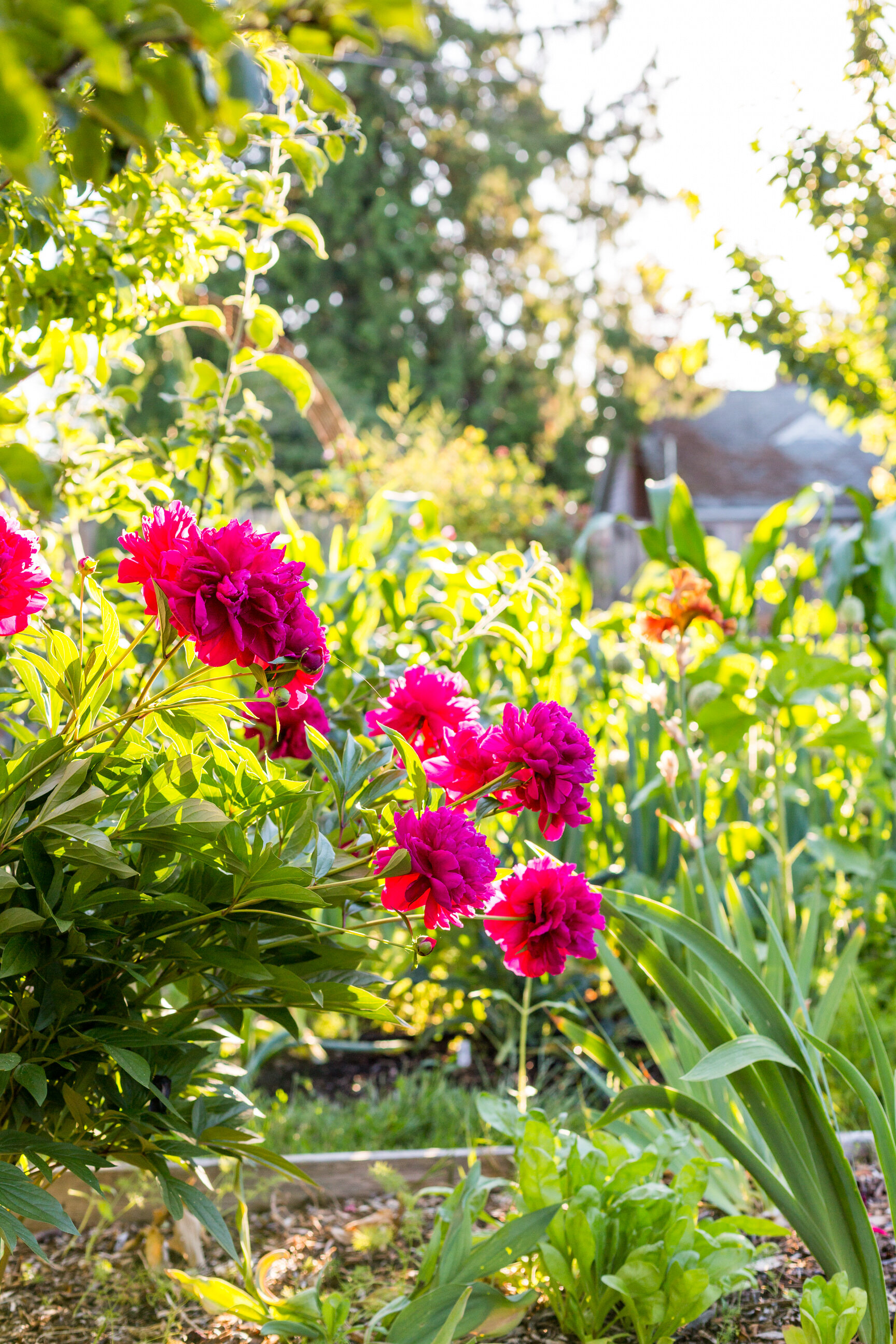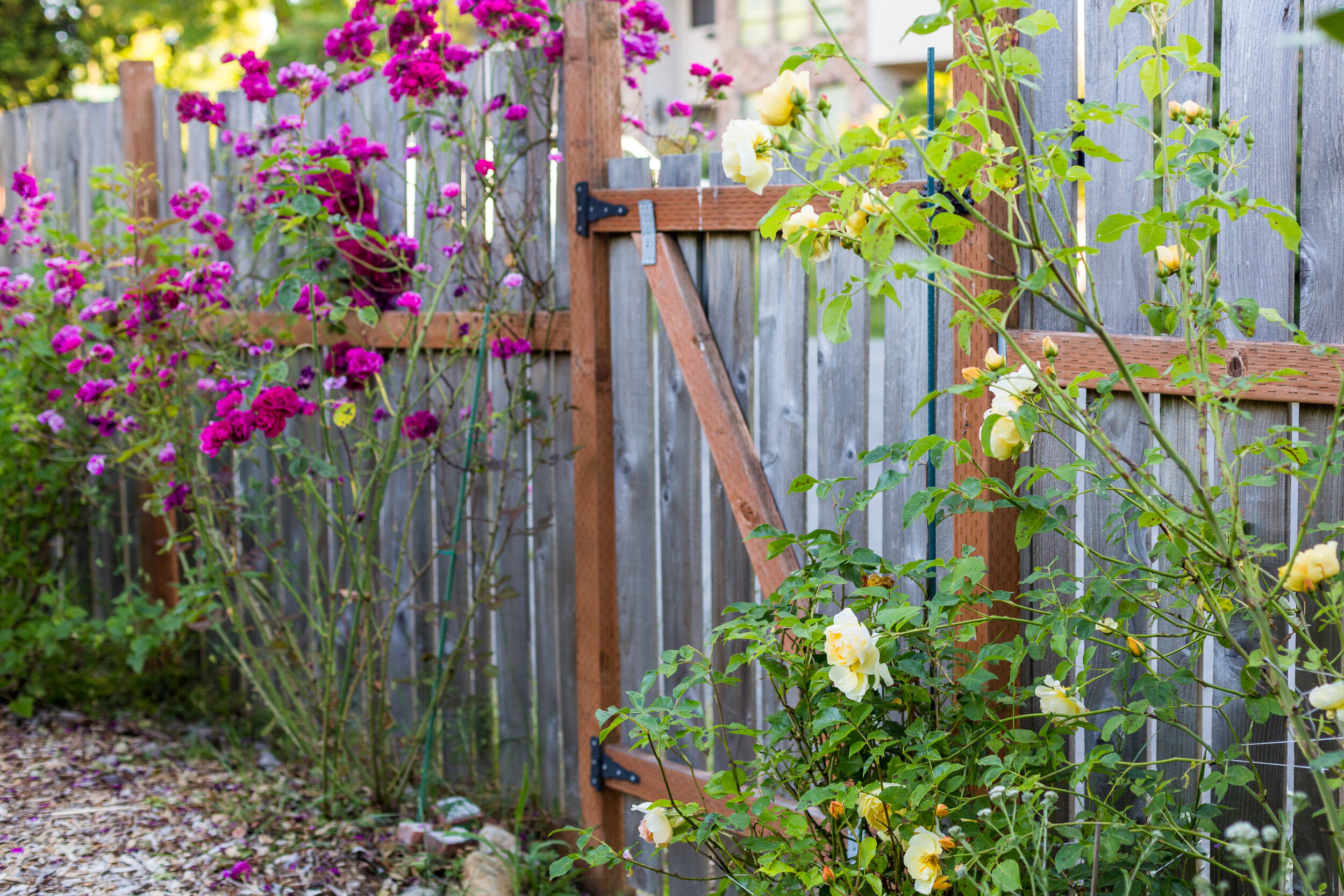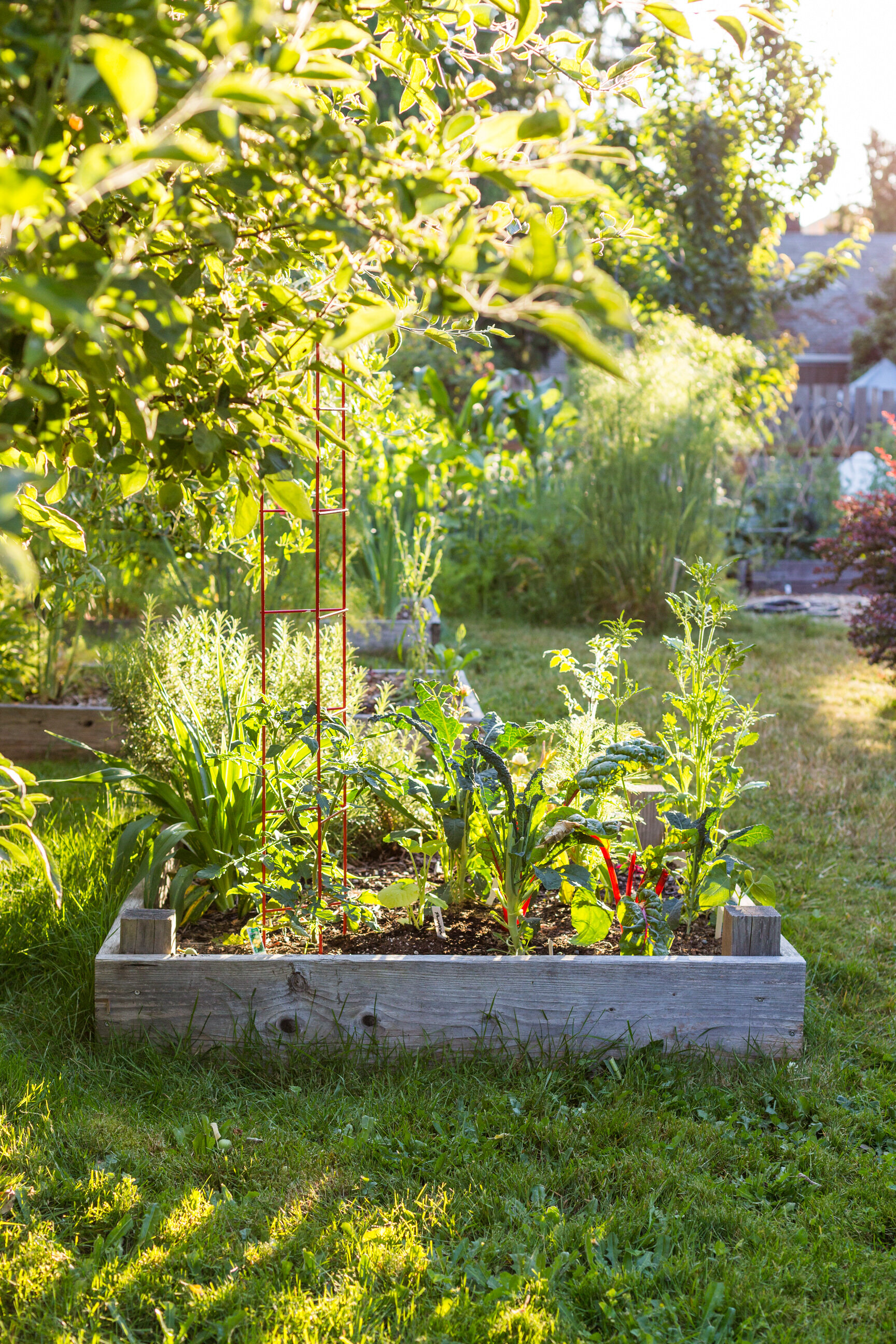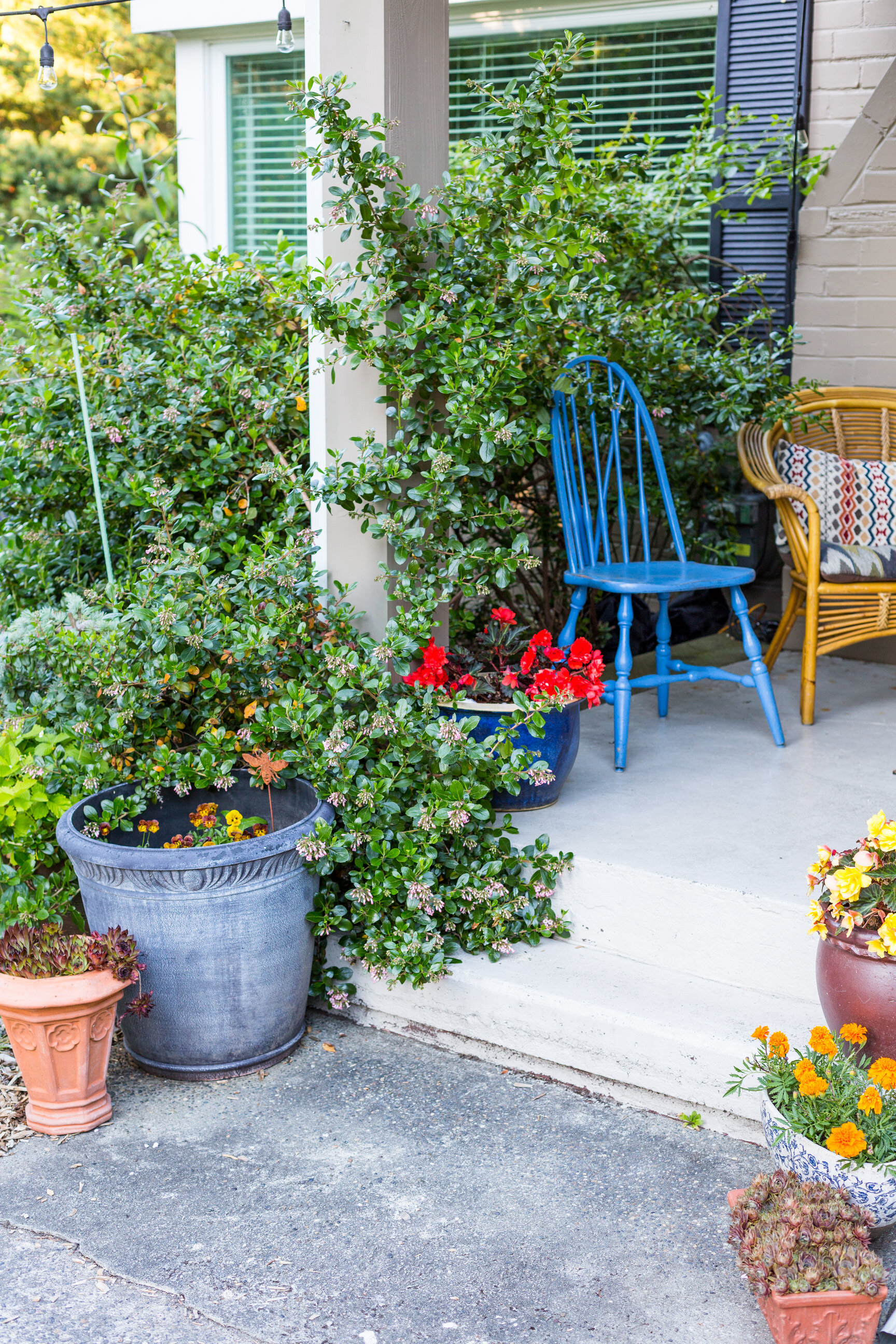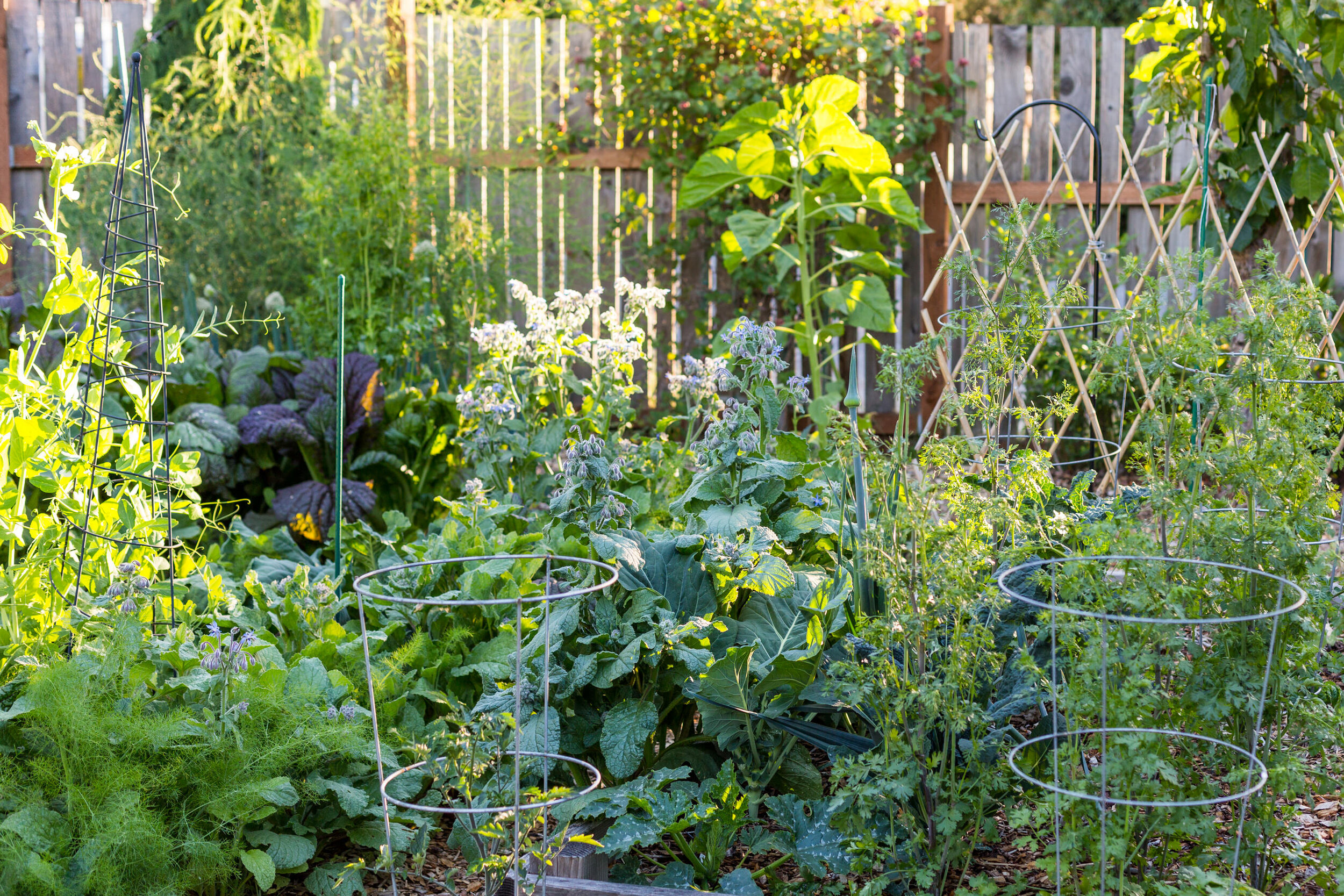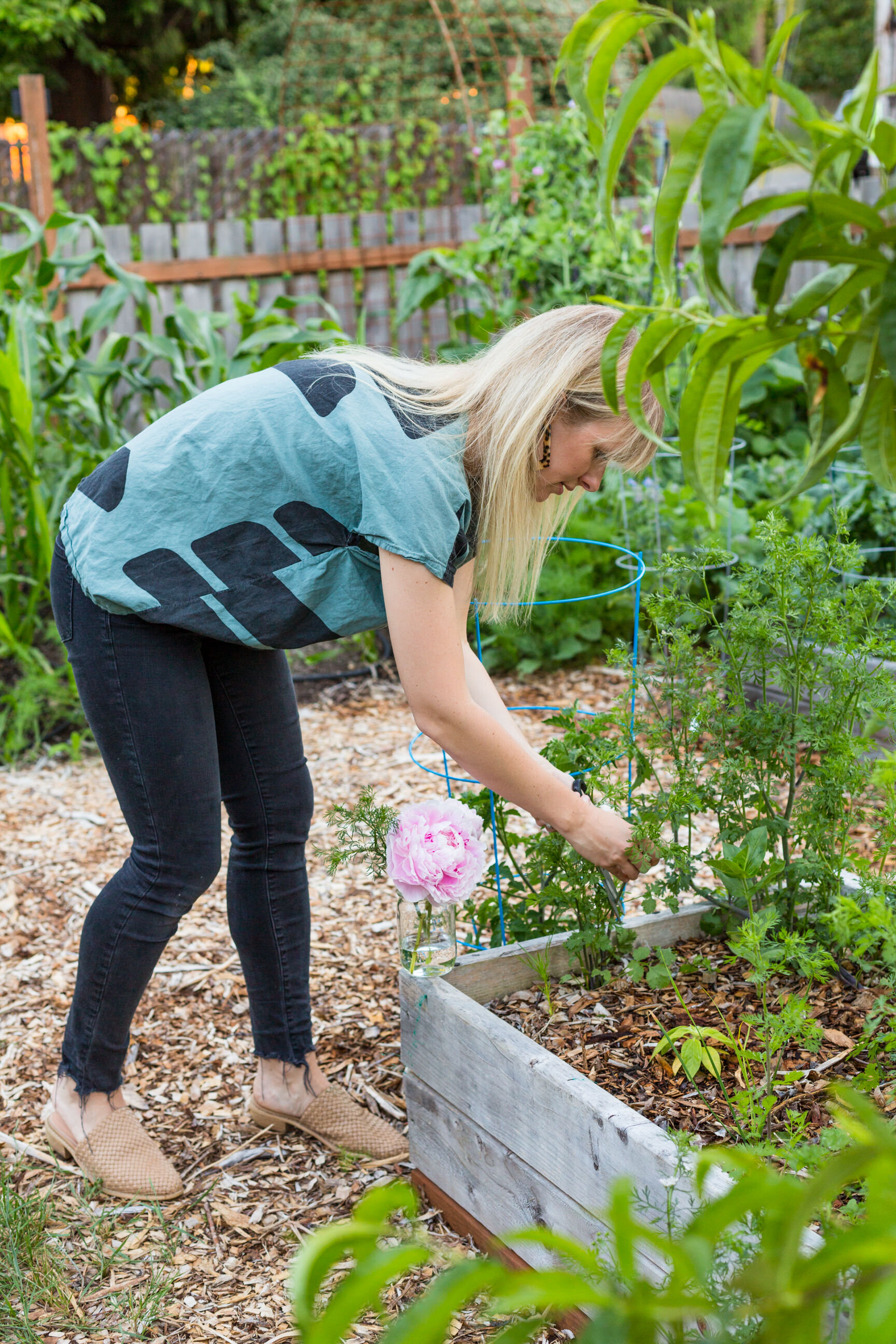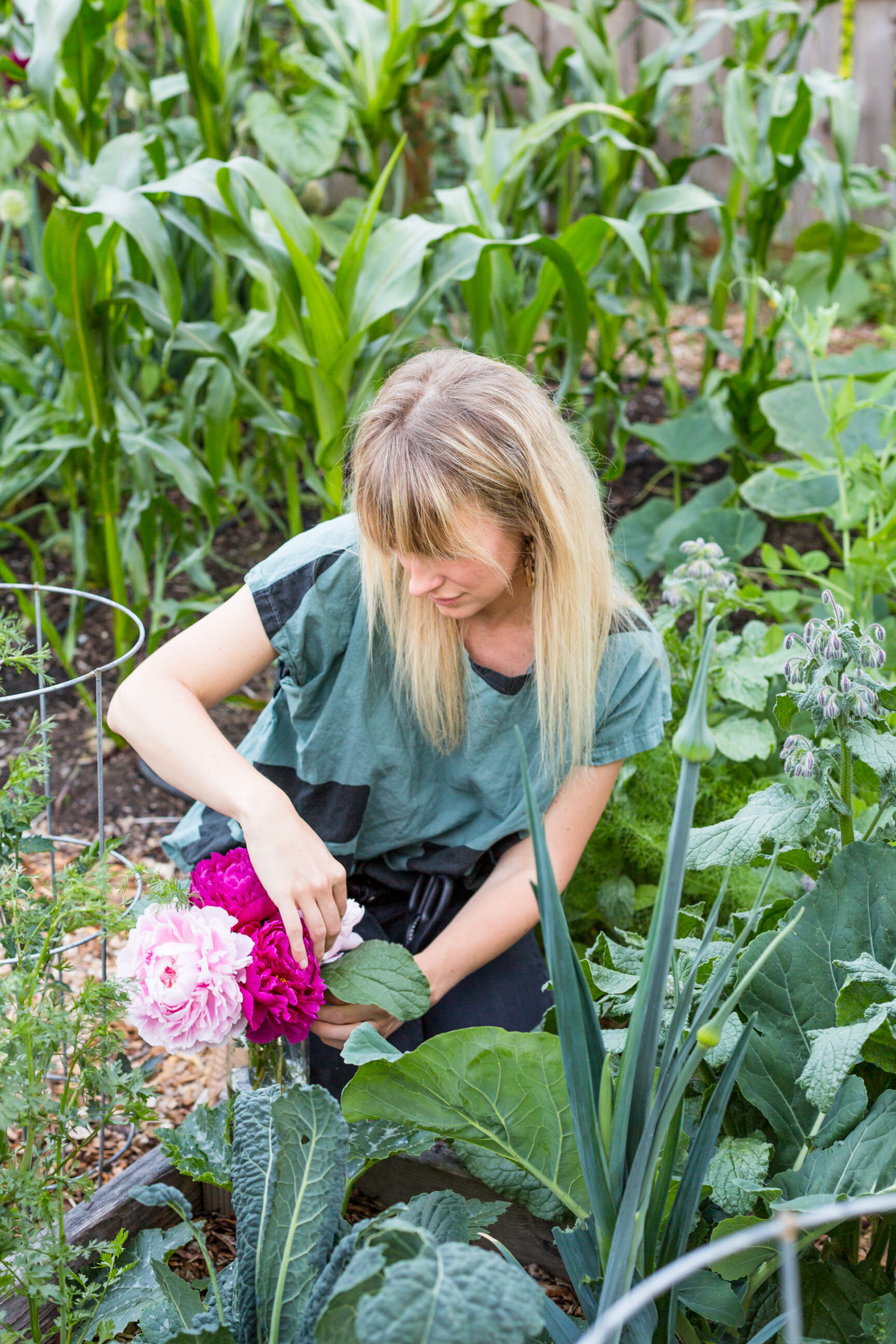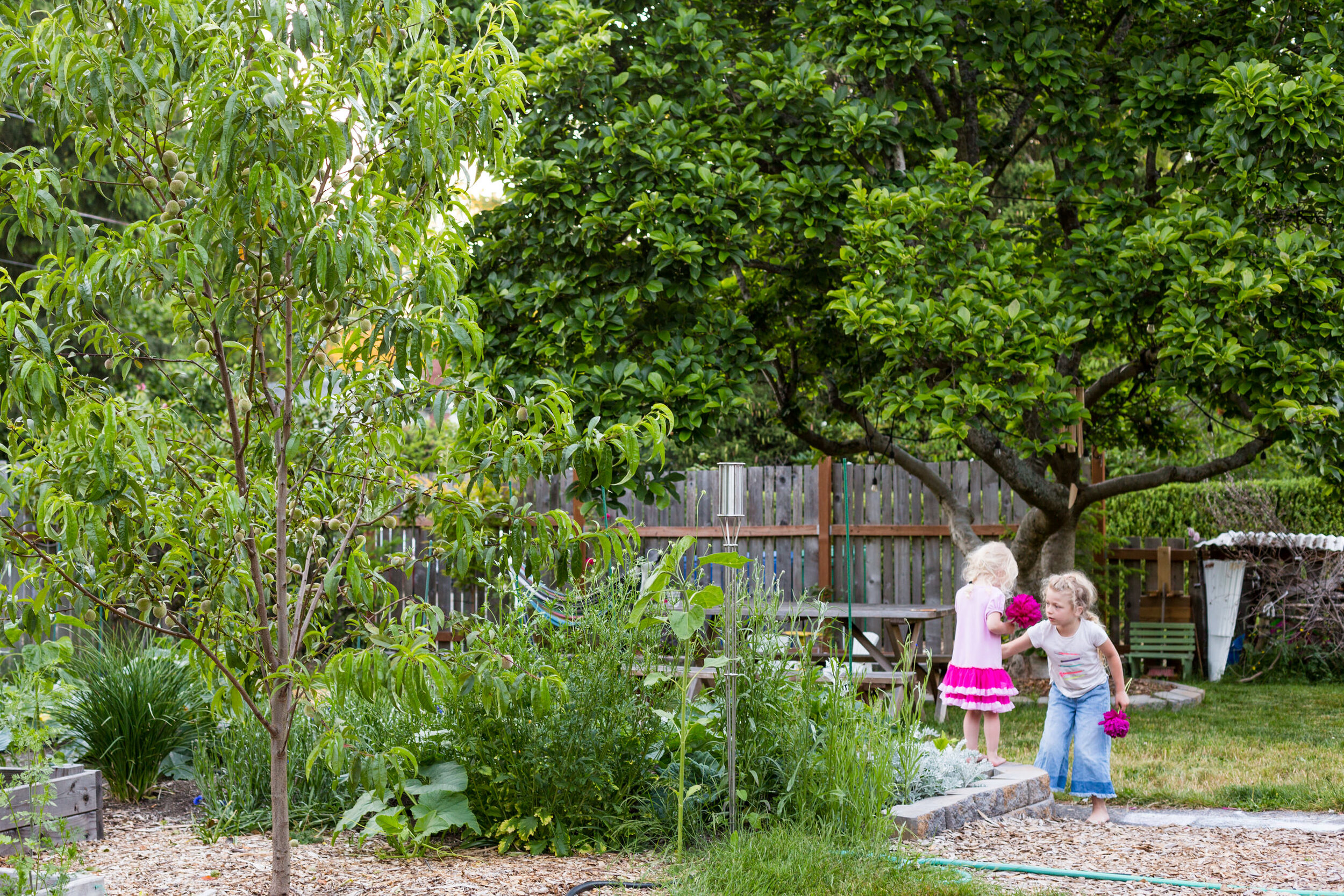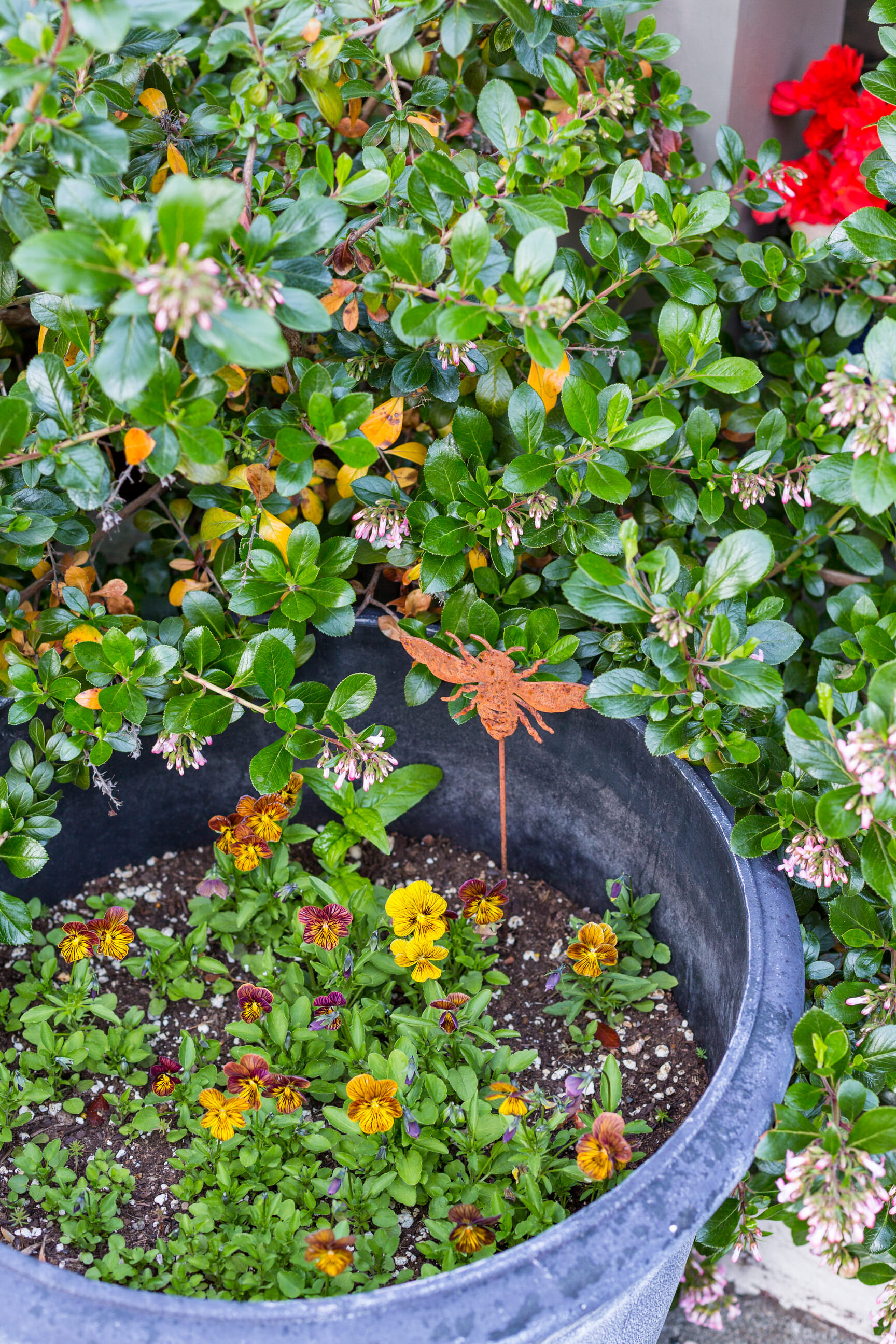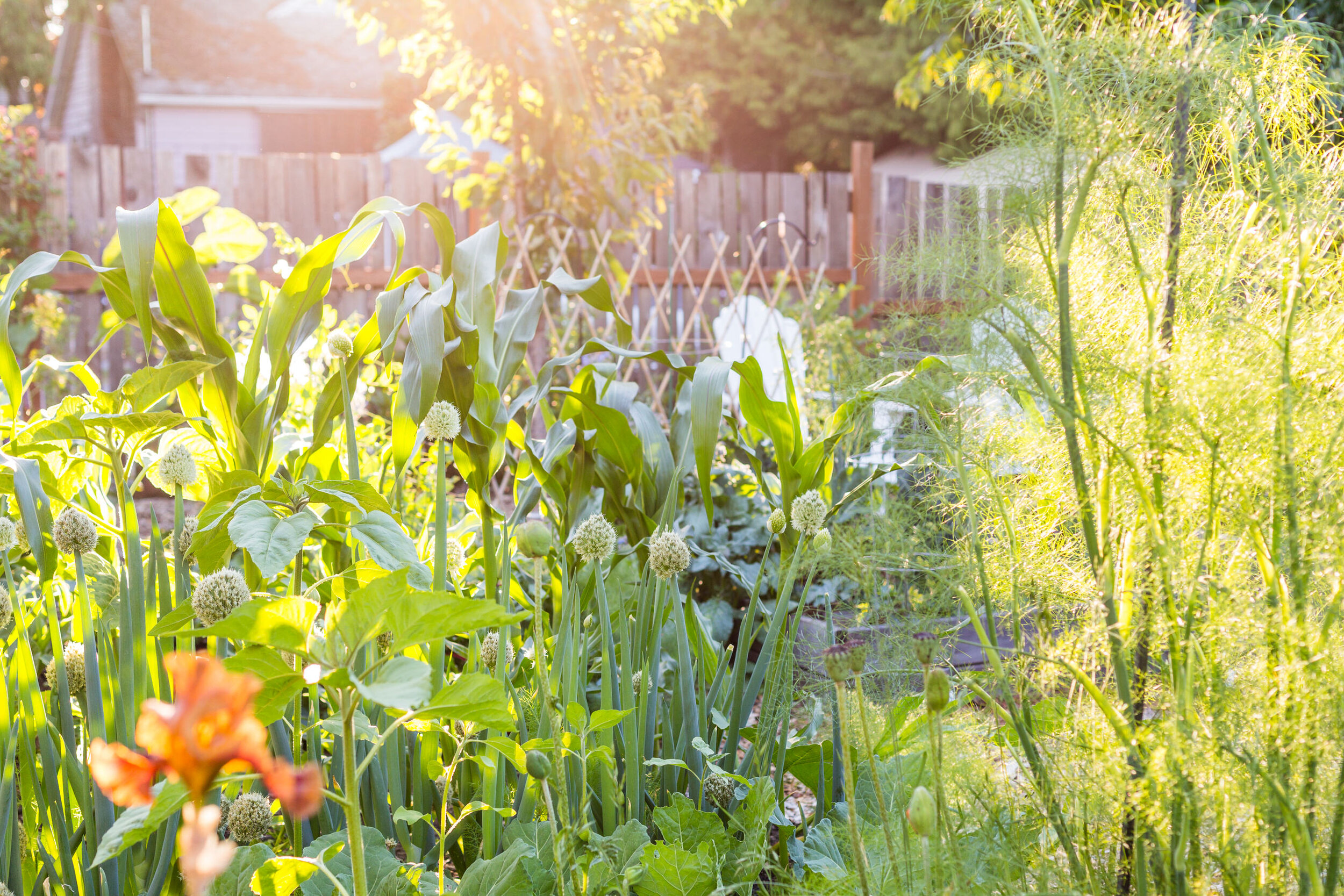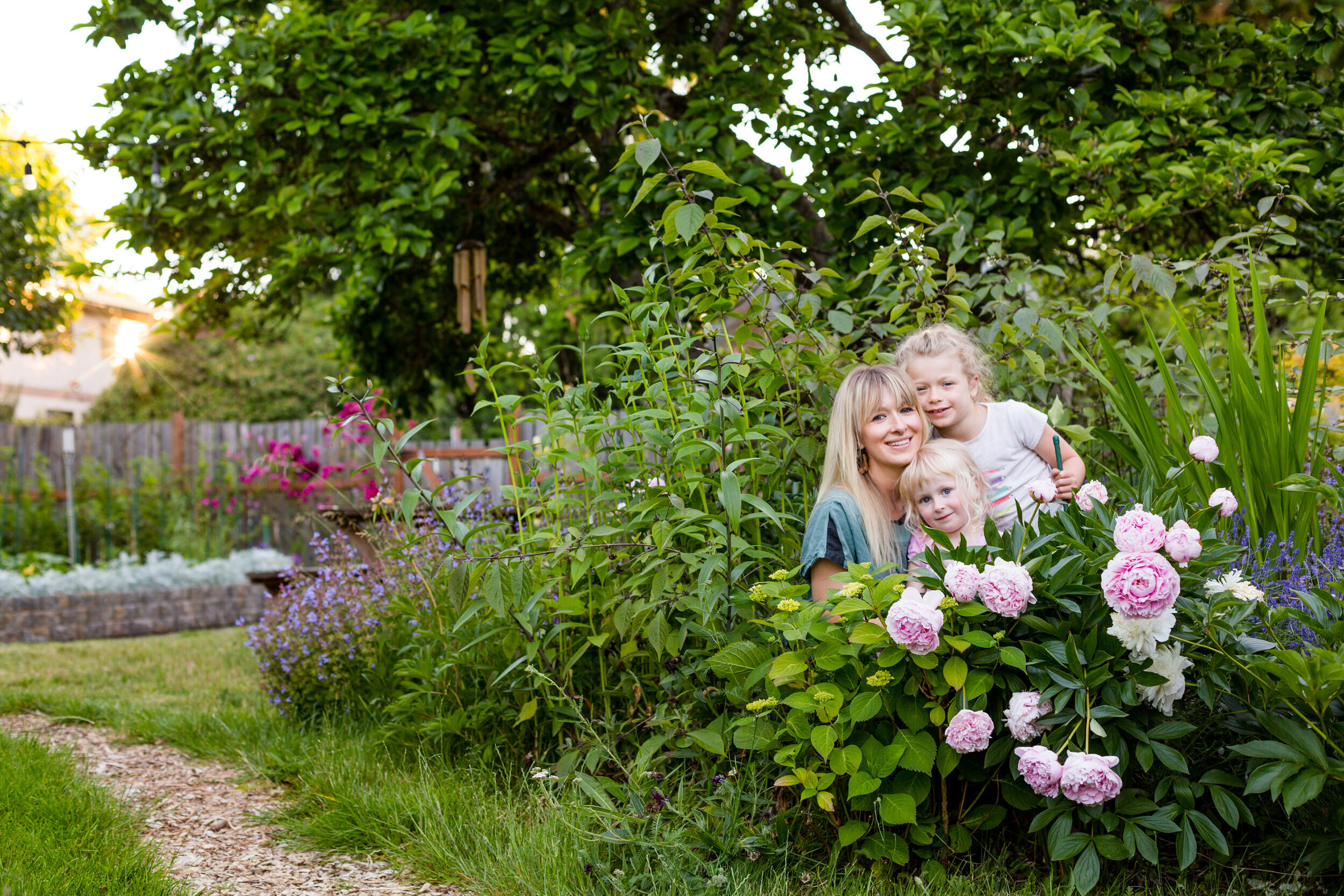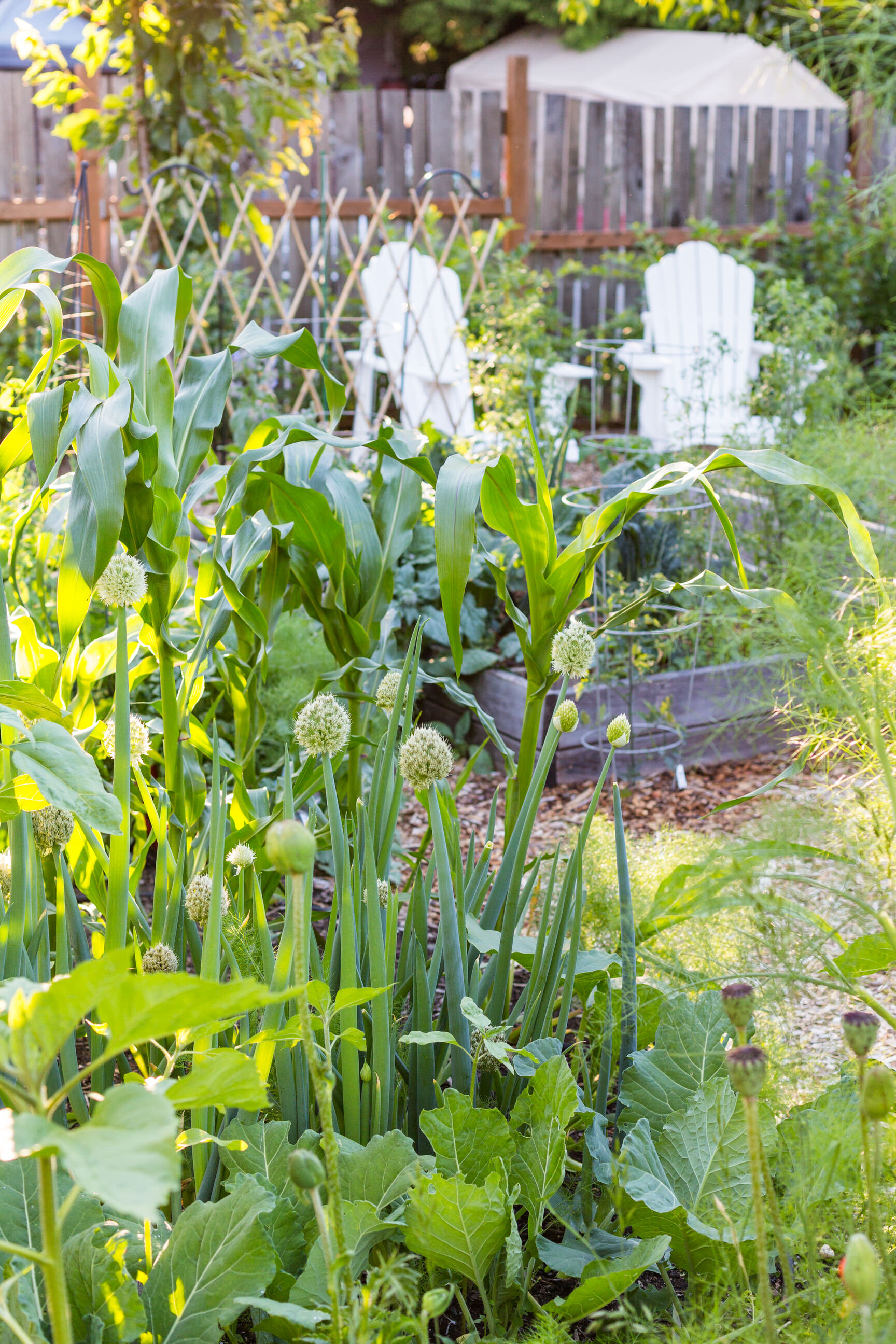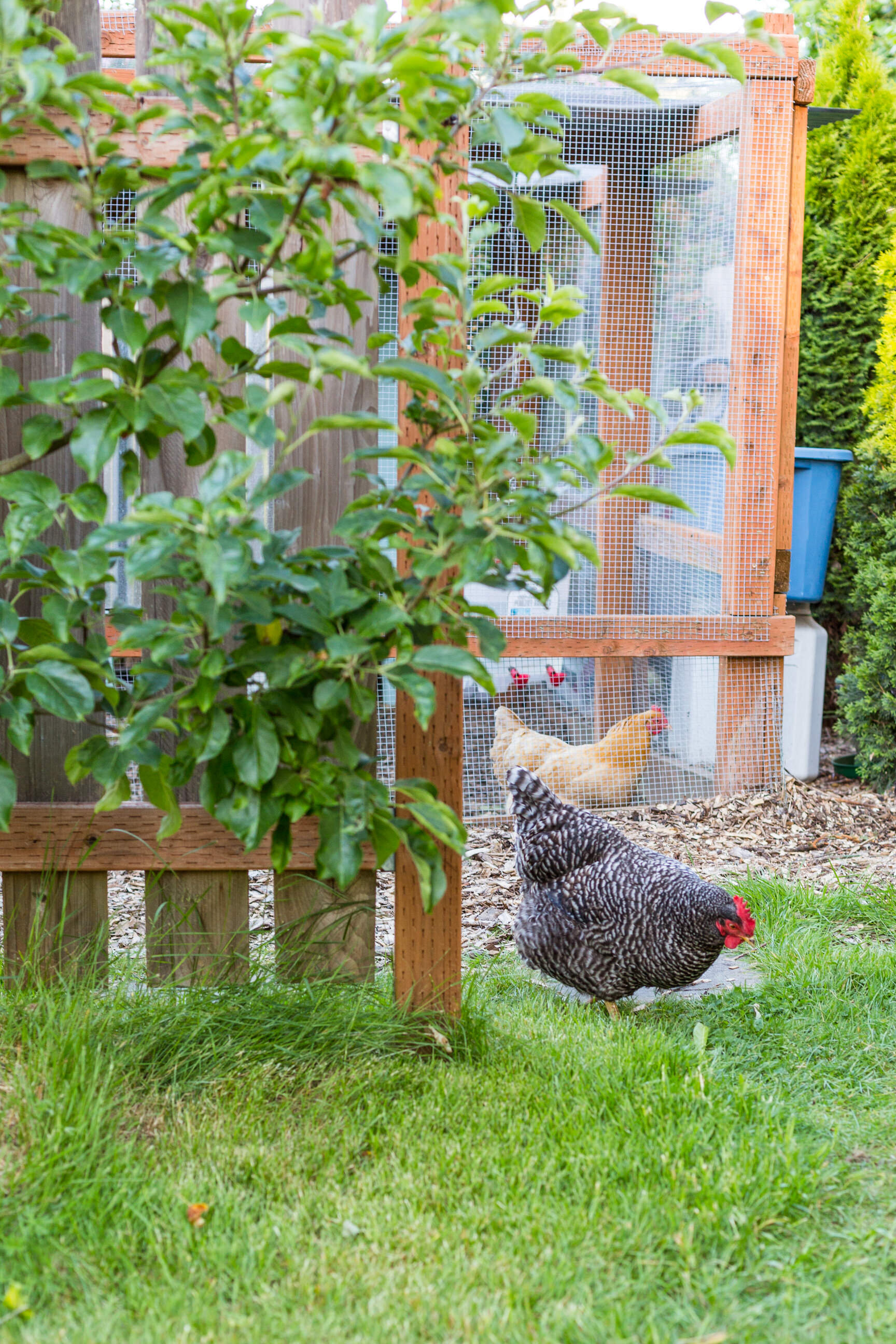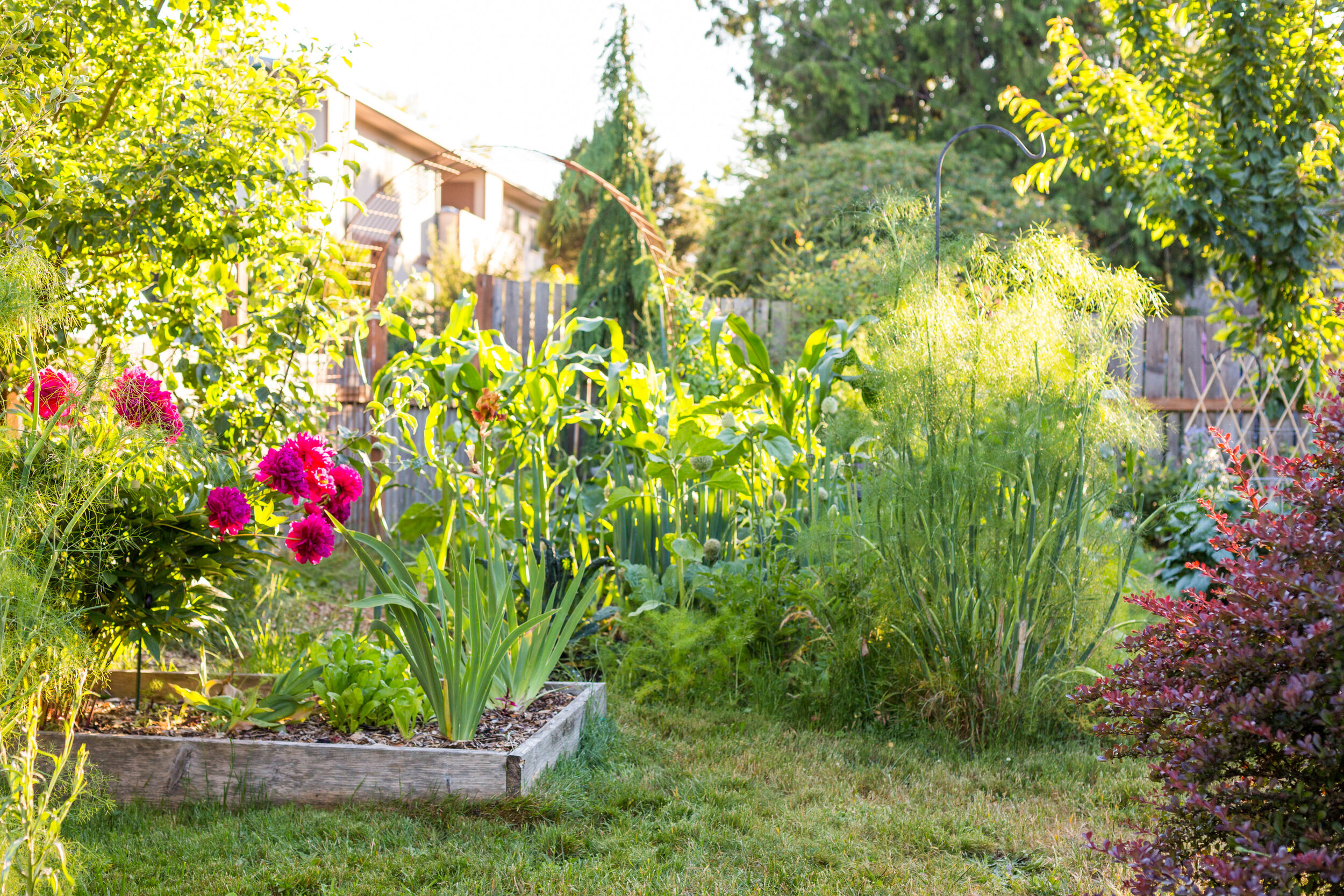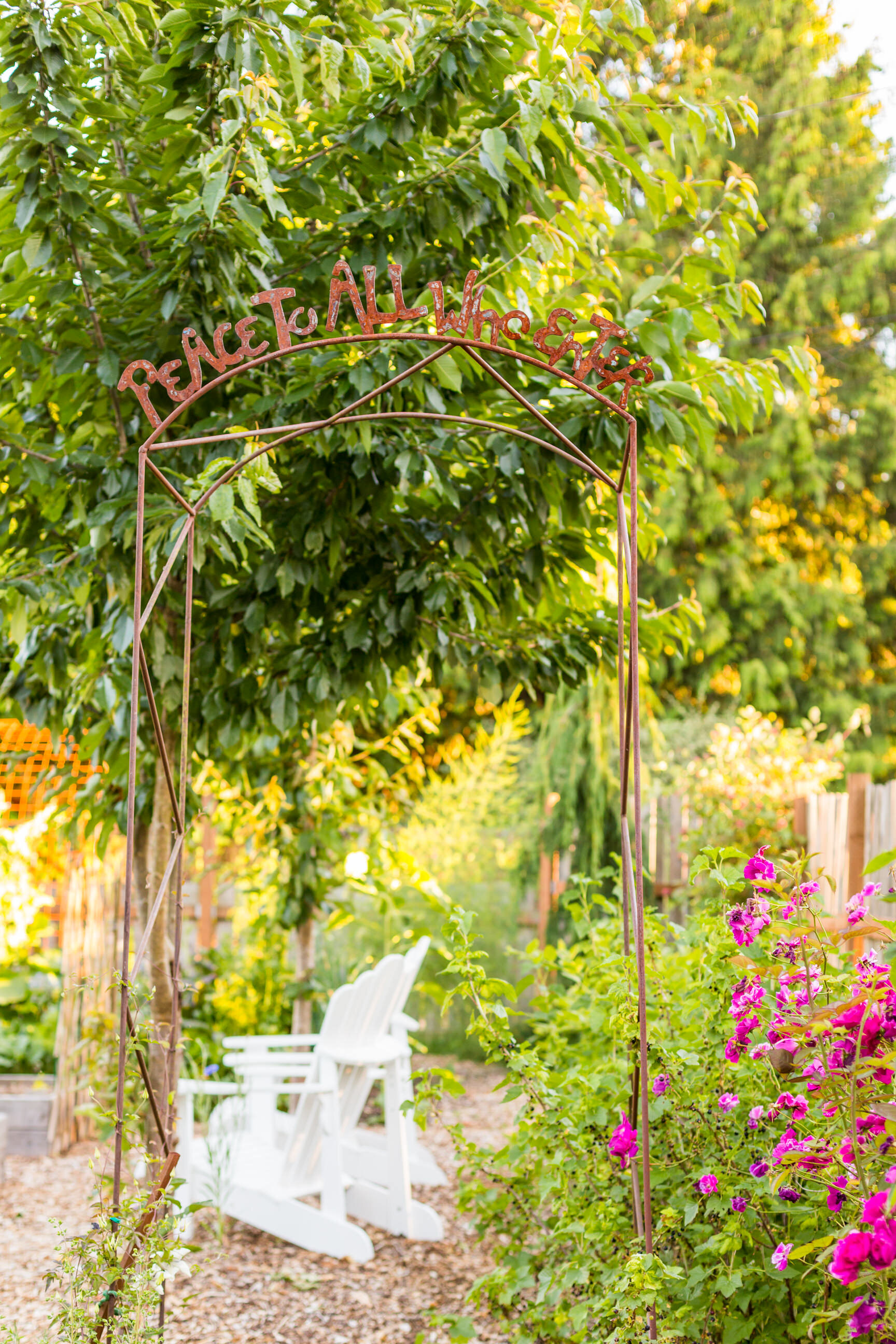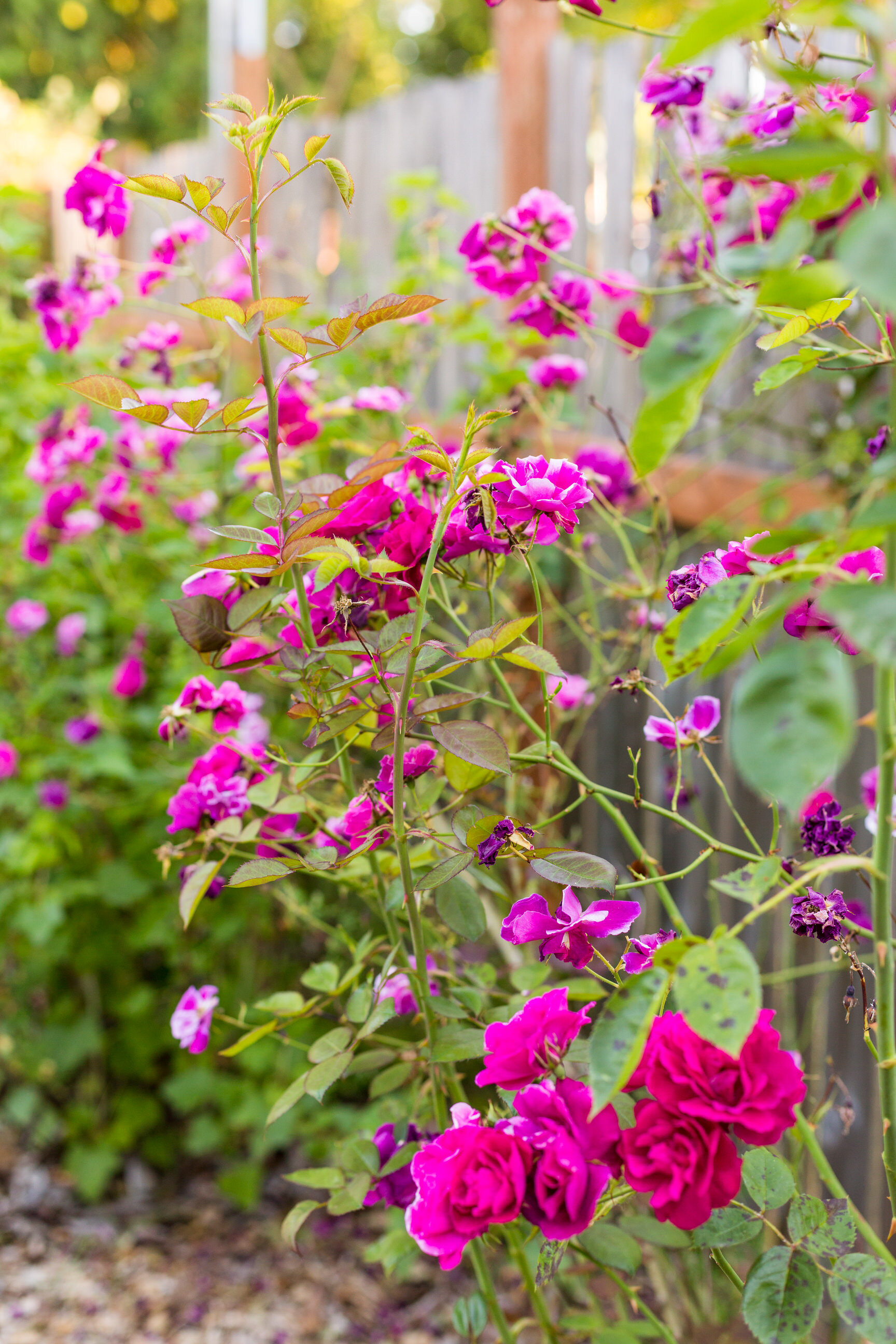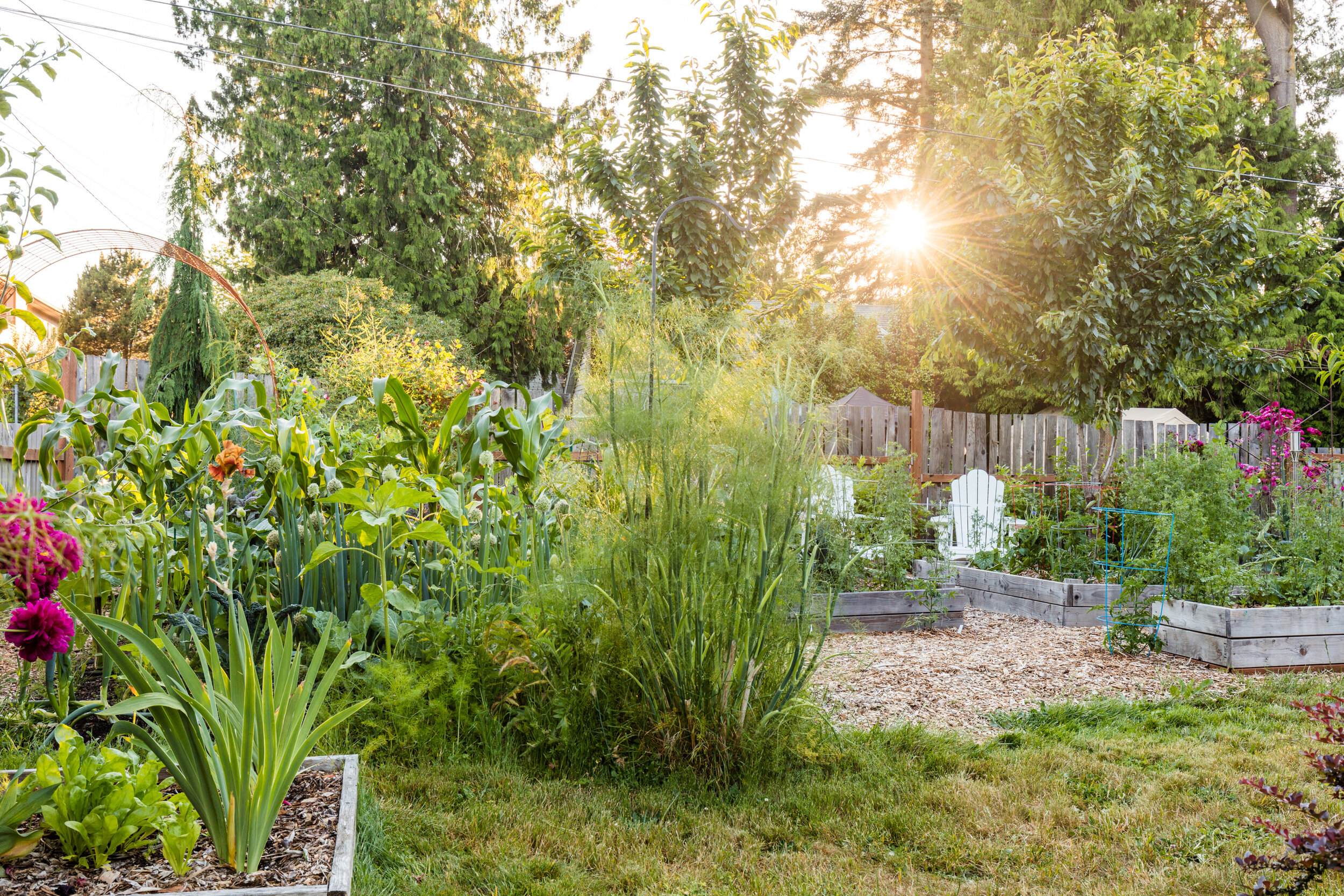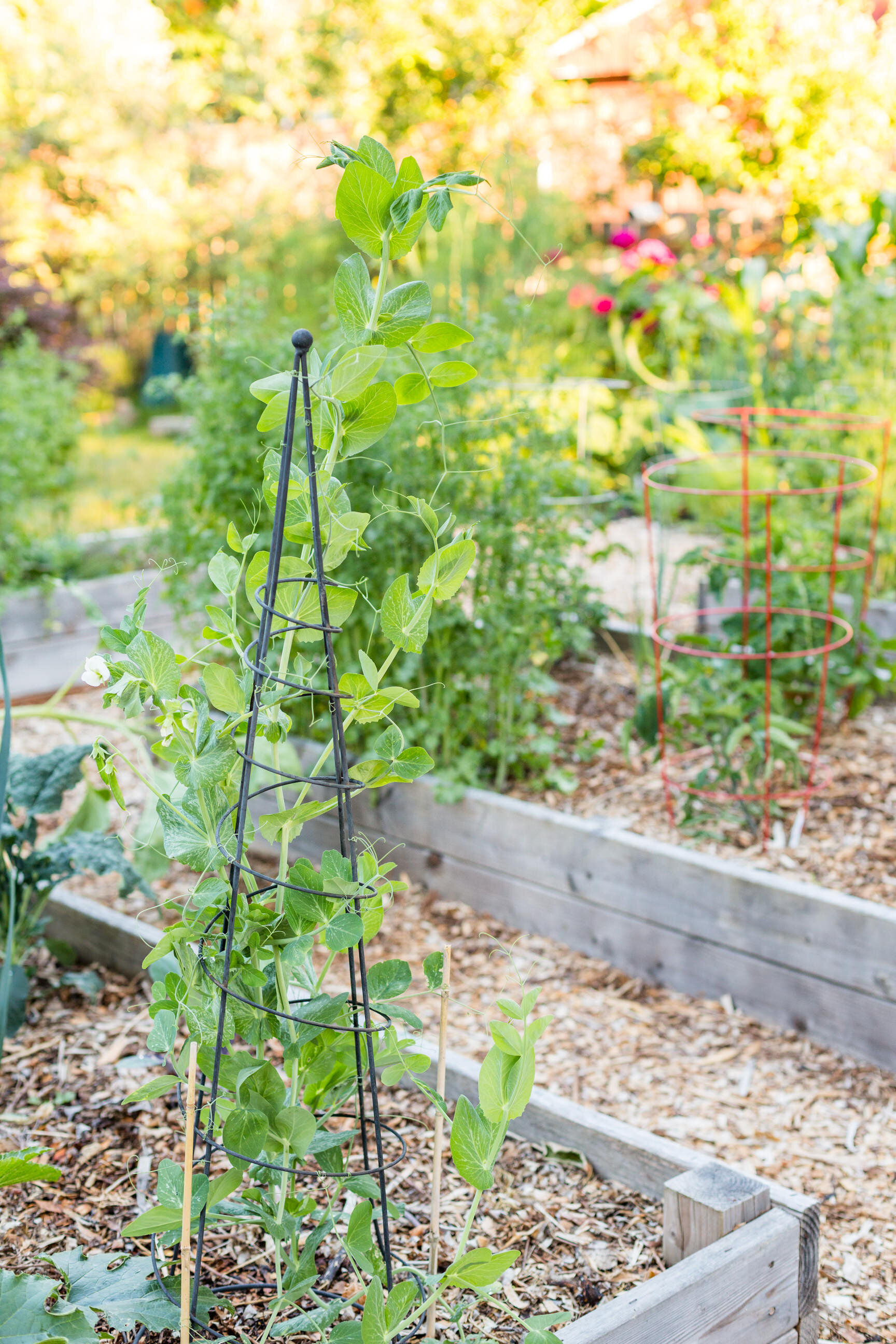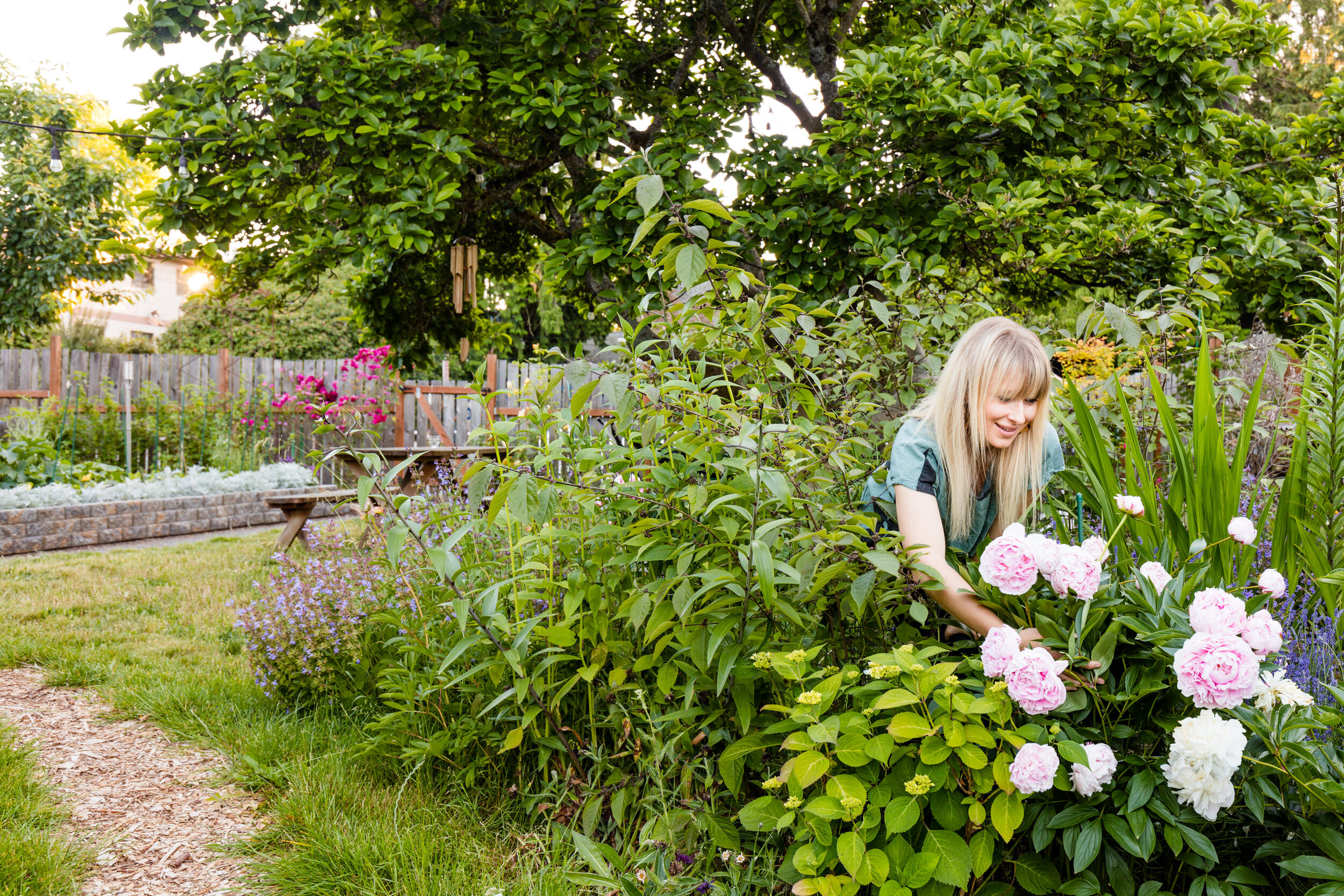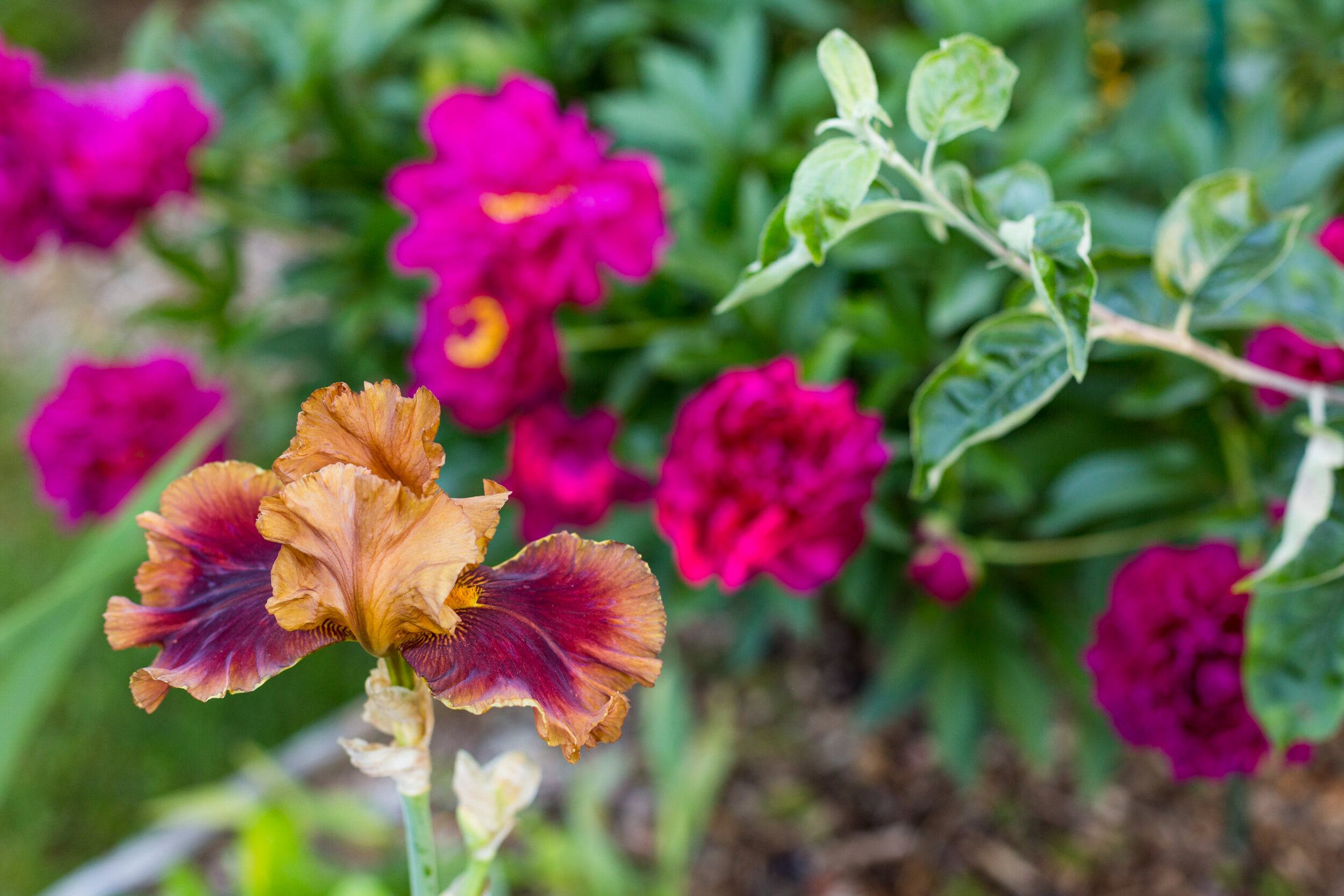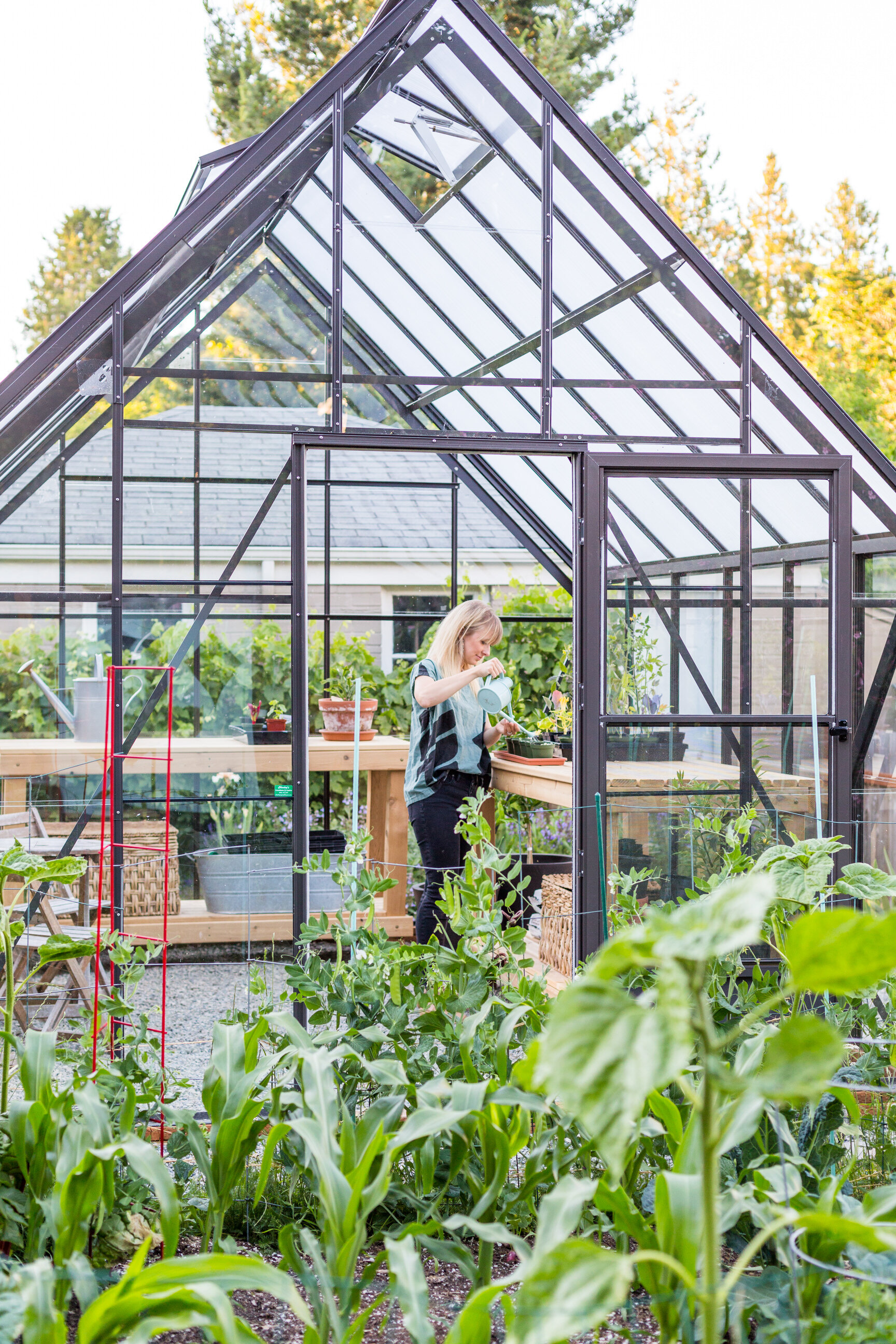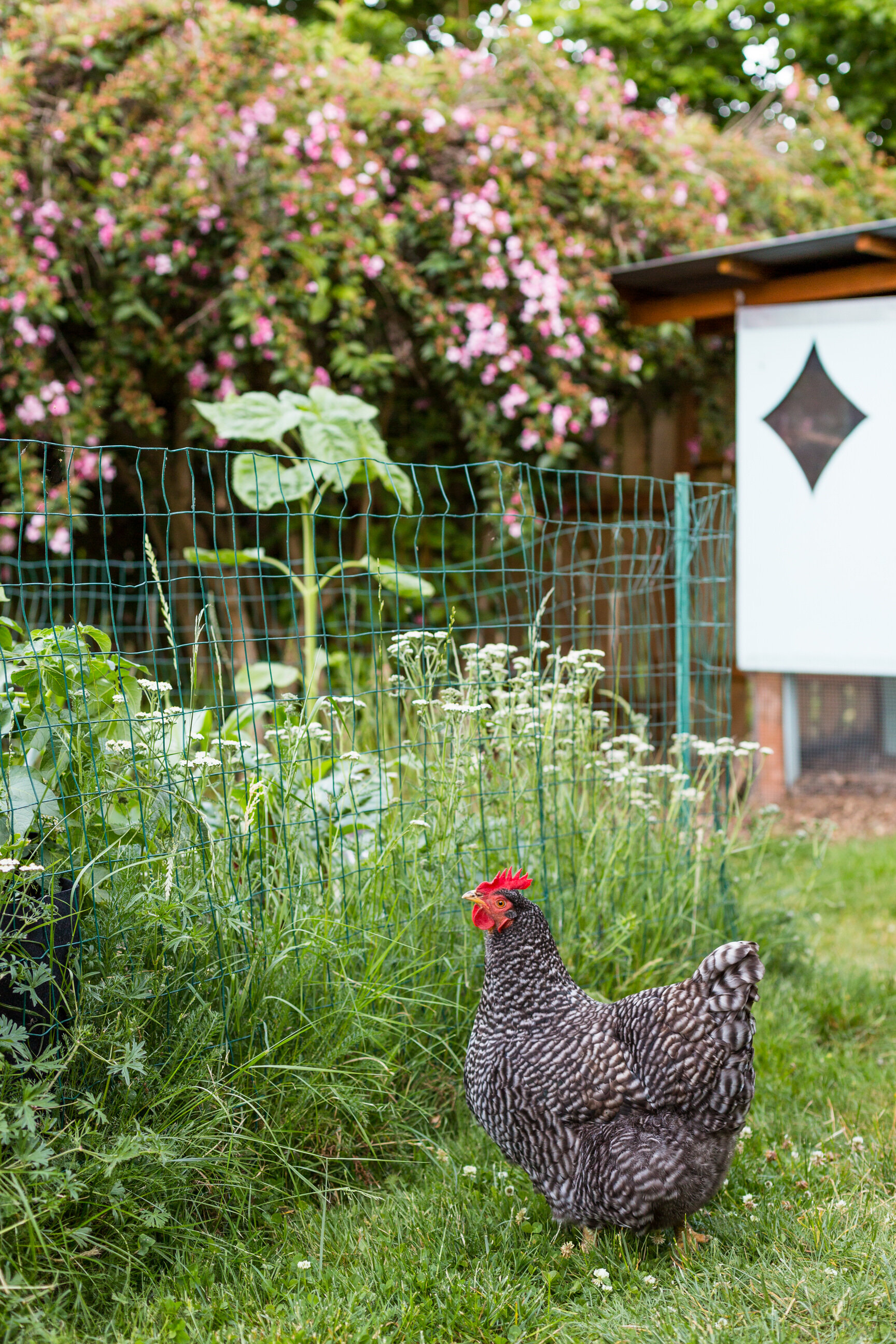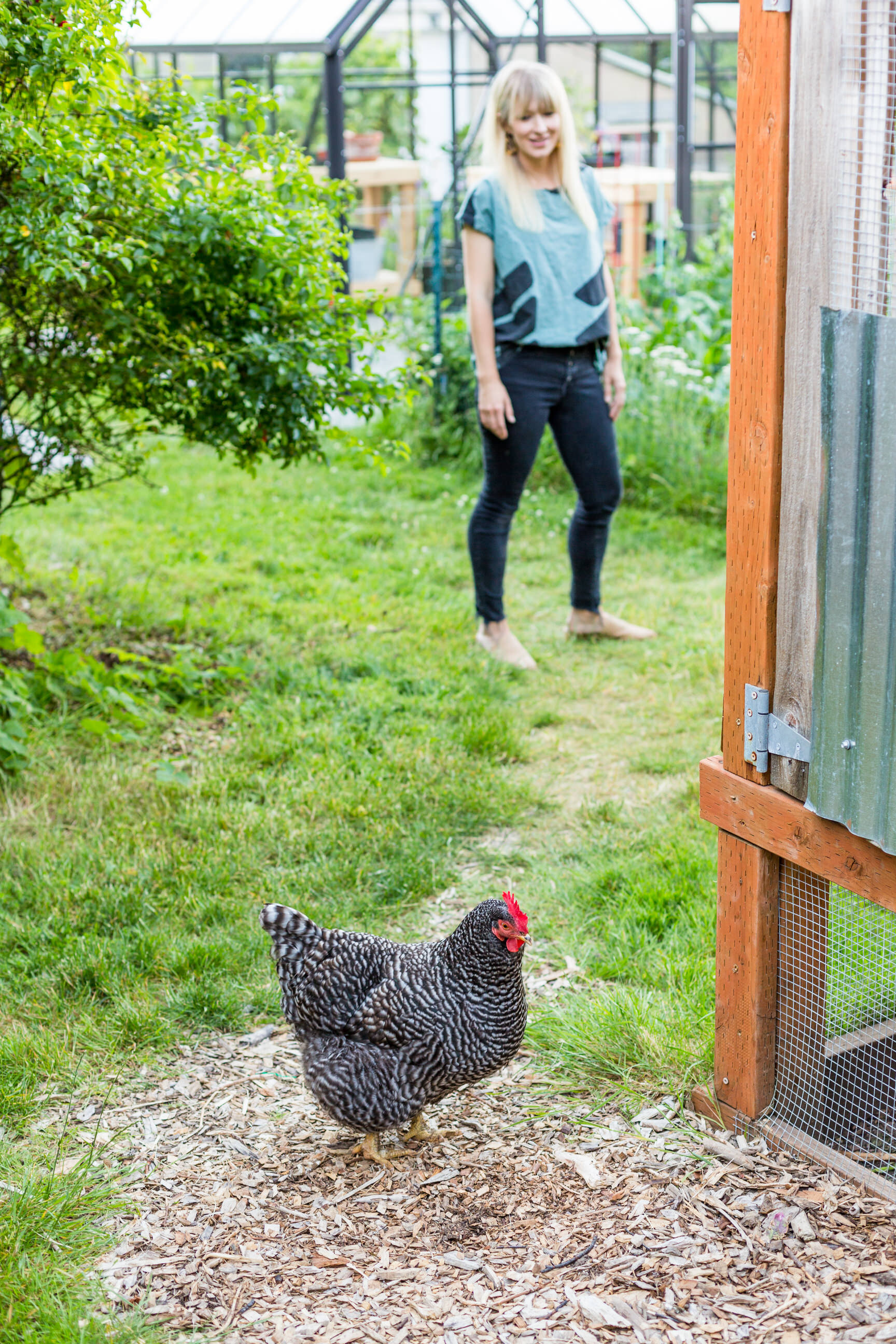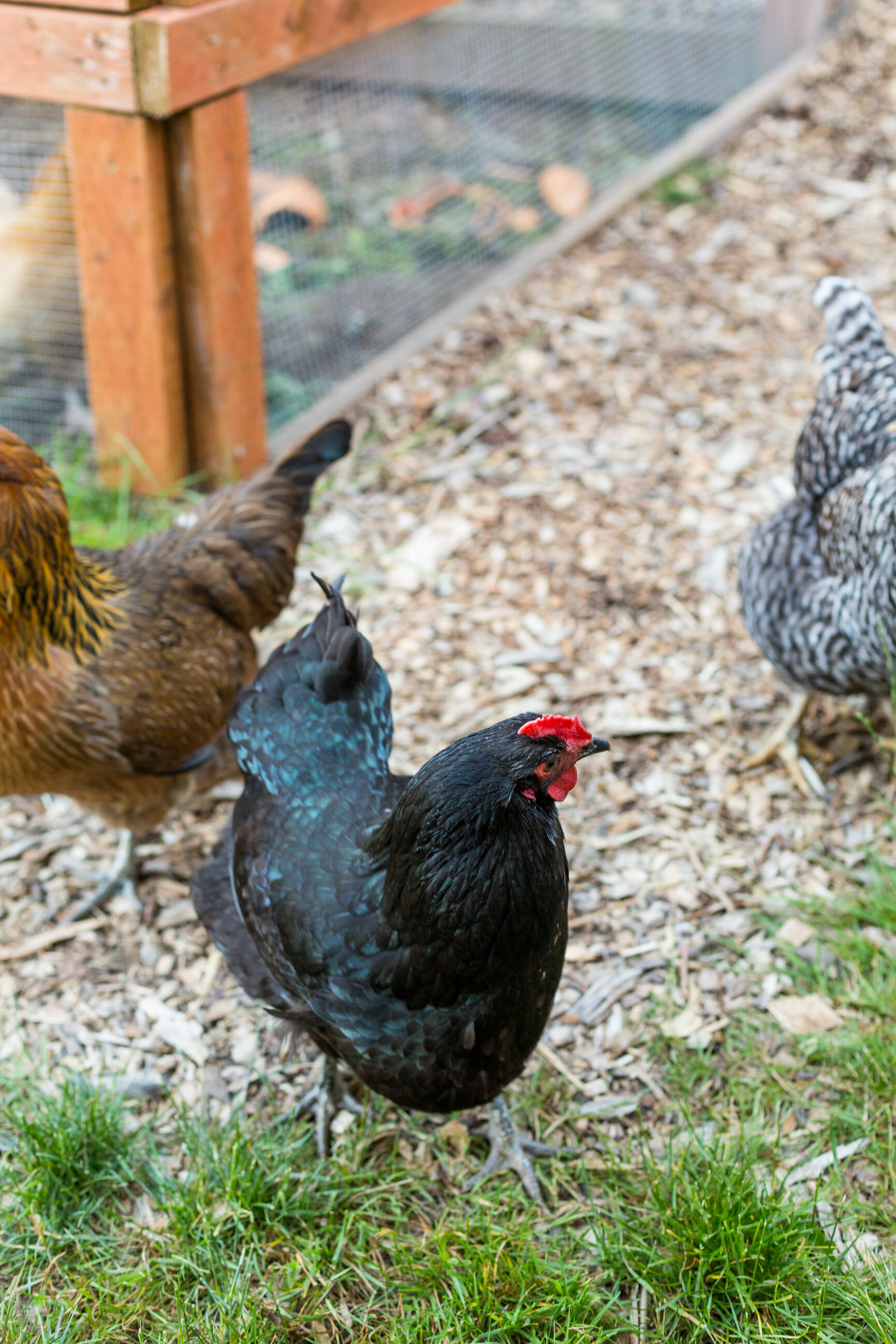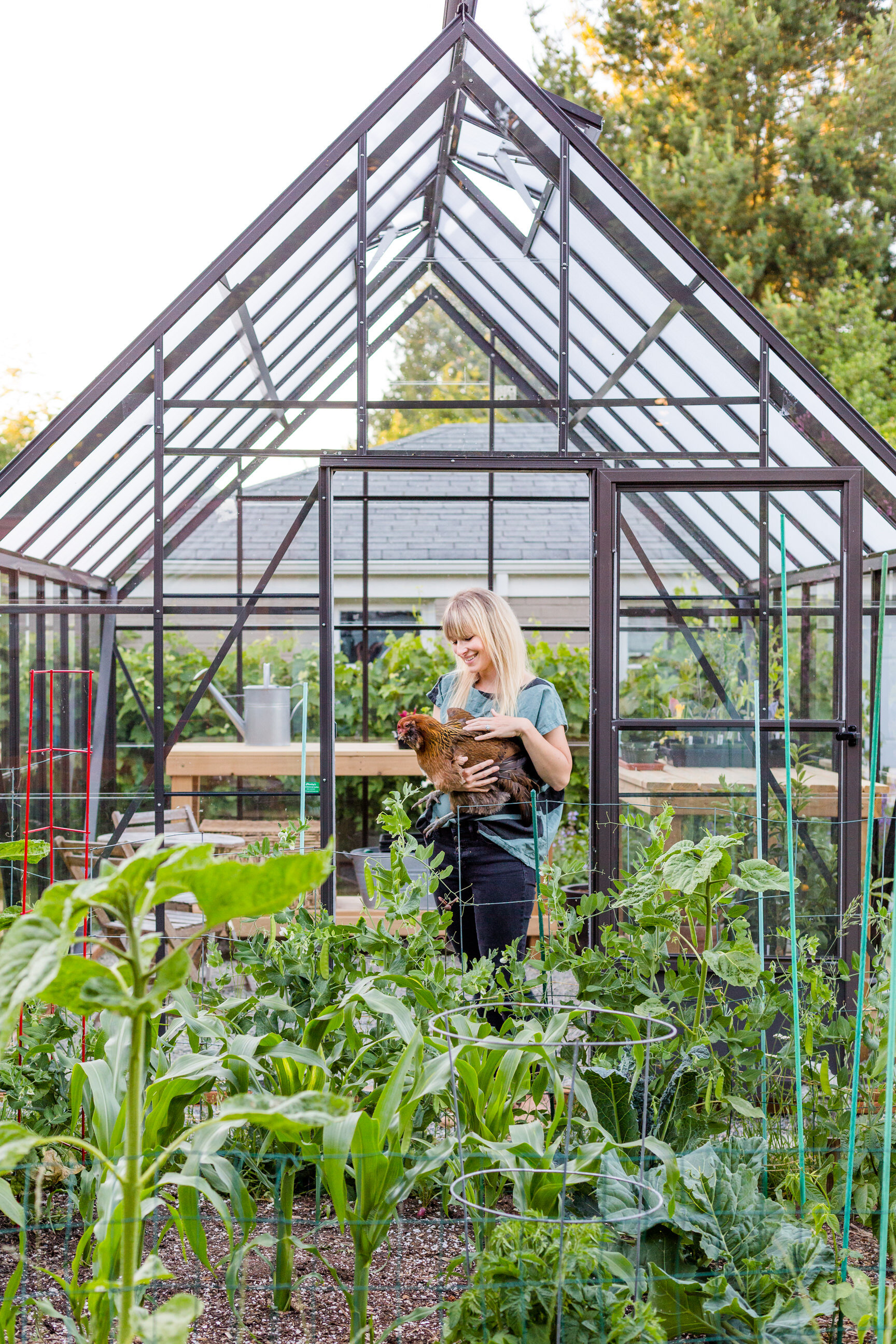Mark and Ginger Garff-SCJ Studio Landscape Architecture
It’s hard to imagine that the parking strips alongside Mark and Ginger Garff’s Phinney Ridge Craftsman home started out as nothing but lawn when they began gardening on the property. The narrow spaces are now filled with an eclectic mix of plantings and a row of now-mature trees, a testament to the 15 years the couple spent on their Seattle garden. They recently sold the property and moved to Montana, but I was lucky to capture the space the summer before.
More from the gardeners, in their own words:
THE GARDEN AS TEACHER
“Gardening drives my practice in a few key ways - first it informs many practical considerations - nothing like a little trial an error on your own yard before trying it on a client's garden at their expense. Gardening teaches things you won't learn in school - patience for one. Managing your own landscape year after year really helps the designer see how plants, arrangements, compositions change over time. Gardens are in a constant state of change.”
HELLSTRIP NO MORE
“{We bought the home in} 2006. Originally the garden was an experiment, using new and different plants that we found interesting at nurseries or were discovered on trips. Our first project were the "hell strips" along the sidewalk. It was nothing but grass. Now there are six semi-mature oak trees and gardens below.”
PLANNING FOR ALL SEASONS
“I think over time my own plant tastes have shifted towards more textural plants in general, attempting to hold onto structure over the winter. Along with that living in PNW really brought home the importance of some early spring flowers to cheer up the darkness. Towards the end of our life in Seattle the garden was absolutely packed with bulbs - crocus, daffodil, hyacinth, tulip, allium - especially allium.”
HUMBLE BEGINNINGS
“Thinking back, particular plants that we bought as tiny 2" pots that are now large shrubs or trees are very satisfying, one in particular, Red Fred hydrangea, planted in a 4" pot now 8 feet tall and blooms gloriously all summer.”
THE BEST LITTLE CORNER
“Oddly, one shady corner in the backyard under a giant lilac ended up being one of our favorite spots. It's private and from there you see many textures in the garden - from the raingarden plants to shady ferns to trees.”
MOVING ON
“I have 10,000 SF of Zone 4 Montana to green up and time is running out! That's the next project, another start from scratch garden.”
I can’t wait to see what Mark and Ginger do with their new garden! Check out Mark’s work at SCJ Studio here.
Jill Rerucha - Rerucha Studio
Truly a hidden gem, the seaside garden of architect Jill Rerucha sits well below the adjacent street and presents itself in stages, from forested slope to woodland garden and, after a pass through the home, opens up to breathtaking views of Puget Sound.
My visit took place on a perfect June evening and focused on the seaside portion, where a relaxed elegance presides over the colorful garden beds and generous lawn, creating an ideal environment for both entertaining and relaxation. Jill’s dog Tucker clearly loves the garden; he can chase a ball into the waves, roll around in the grass or just hang out in the shade of the glorious birch tree that helps frame the view of the Sound. Jill has been gardening here since 2003. More from the gardener, in her own words:
Honoring the Site
“I always start my designs with the given. Honoring the site and its intrinsic qualities, I want to reinforce the experience of the site. The dining table at the sand terrace adjacent to the beach is an example. In architecture I often find myself designing a lifestyle too.”
“An overriding idea for my designs is site as house. The experience does not start at the front door. You can sequence your garden and architectural experience together to create a journey through.”
An Artist’s Journey
“The natural beauty and unexpected outcomes of the garden feels like watercolor painting. I can select the colors, touch the paper and the color plumes into the other in a beautiful uncontrolled way. As an artist and an architect there is a lot of overlap. I have learned I can create spaces and sequencing of spaces with vegetation and control the experience.”
It is a lovely place to relax and rejuvenate. When I am home, I am usually in the garden.
Inspiration and Future Plans
{I’m inspired by}”the unique natural conditions of the site. The eastside is a steep wooded slope that extends down to the house. I am developing the hillside trail into a woodland garden with filtered light. One day it will be a magical approach to the house. This is the vertical element of the site. The westside faces the Puget Sound and has 180-degree views. The horizon line is important and maintaining the open expanse.”
“When I build my new house, this will be the overriding idea. Vertical and tall on the east to mimic the tree trunk and capture the hill. And horizontal ribbon windows on the west to frame the 180-degree sound and mountains view.” My next project is “a modern gate at the top of the hill. A frosted glass and steel door wedged between the mock orange hedge that runs along the street. It will be my front door and the beginning of the journey into my home.”
{Becoming a gardener has taught me} “patience, hope, the miracle of nature, imperfection is perfection.”
A Favorite Place
{I love} “siting under the birch tree on a warm summer evening with the view of the water. It is a gathering place for the neighbors in summer and blankets are spread out. “
Thank you Jill for sharing your little slice of paradise! Find out more about Jill and her work at Rerucha Studio here.
Richard Hartlage - Land Morphology
In this installment of The Creative Garden, a look into the private home landscapes of designers and artists, I’ve explored the colorful, controlled chaos of landscape designer, Richard Hartlage.
Tucked among a charming neighborhood of Craftsman bungalows, Richard Hartlage’s distinctly vermillion home sits high above the sidewalk, enveloped by a continuously changing succession of color, texture and fragrance. A robust boxwood planting, clipped into a serpentine pattern that slithers up and down the hillside provides pockets for great clusters of blooms and stands in distinct contrast to a hulking stone stair that leads to the front door. Large and small surprises abound, offering moments of delight, humor and wonder around every corner. A gigantic terra cotta pot towers over it all and gives the entire experience a thoroughly Alice in Wonderland vibe. Let’s continue the tour, in Richard’s own words;
Growing Joy
“Humor is what brings me most joy and so I am always playing in my garden. I can do this there with the use plants, objects and materials that are more playful and less serious; the swarm of hanging baskets suspended from the tree, the elephant and seahorse that were formerly from a child’s nickel ride and the floats in the water feature which are abstracted gold fish inspired from a Matisse painting.” RH
Playing Favorites
{My favorite moment in the garden} “changes with the day and seasons. I plan for the moments of interest to move through the garden every day. The front meadow goes from daffodils, to tulips, to alliums and lilies with perennials coming in mid and late summer and those have big visual impact; but I love the collections of species crocuses and hoop petticoat daffodils that bloom singly from November through March. The latter are the moments that are private for myself because generally no one is around or would care about a single rare flower.” RH
On Inspiration
“I have loved and studied horticulture, gardening and landscape architect since my teens. Inspiration is hard to pin down. I am constantly looking at books and magazines and visiting the great historic gardens and seminal new projects. It just all gets jumbled and comes back out.” RH
“Art asks questions and design answers them.”
In a world full of bland backyard lawns, Richard’s riotous space throws the notion of restraint out the window; every square inch of space screams for attention (in the best way.) A platform of diamond plate aluminum hovers above the garden, placing diners at the perfect vantage to observe the carnival in its entirety. Though small, the space has been carved into a series of moments that invite the viewer to explore. Although it’s clear from one glance that Richard is an accomplished horticulturalist and collector, the presentation is infused with whimsy and devoid of the sense that anything is too precious.
Constant Evolution
{My next project is} “a large rose arbor over the front walk. I have chosen an old climber ‘Peggy Martin’ that is magenta pink for an intentional clash with the vermilion of the house. She is a monster and I learned to train the huge climbing roses from the turn of the century, so I am looking forward to a big slash, the Zen of slowing pruning and training a rose that grows to 30’ length. If I get tired of her, she will come out and be replaced. I just dismantled 50% of my front garden meadow and changed the color scheme from hot pinks and lavender to blue and lavender and yellow. Friends asked why I would do that in the middle of summer—I say because I have time and I want a change. There is next year! I worry that I cut up bulbs when replanting so I will plant more this fall to bolster the display. Gardens never stop evolving and at home I can change it as much and often as I want to.” RH
Making it Happen
{Implementation has come through} “experimenting and design on site. No drawings and working directly with the various crafts people. Spray paint is always a big help to visualize changes to space. I do trial new plants and test ideas—like the crevice garden, which is an old idea but in a modern form. And I do not consider myself an artist. I view myself more as a craftsman- taking design elements and studying them to solve problems. Art asks questions and design answers them.” RH
Garden as Teacher
“CHANGE is inevitable! You can embrace it and move forward constantly evaluating how to composed a scene or let it die and compost in front of you fighting it.” RH
Sarah Simon - The Mint Gardener
I think we all secretly love seeing how other people live; how they create their own unique sense of “home” and all the better if that person happens to be an artist or designer. Welcome to the first of an ongoing series on the home gardens of creatives, a peek into the outdoor spaces that designers have created for their own pleasure and relaxation. In this installment, I’m exploring the home of Sarah Simon, artist, author, teacher and the creative force behind The Mint Gardener. Gathering inspiration from her ever-evolving urban garden, Sarah draws and paints beautiful botanicals in a fresh, lush style. Her new book, Modern Watercolor Botanicals, offers instruction on watercolor technique to help even the novice paint their own inspired botanic scenes. As beautiful as it is practical, you should definitely check it out (bonus, a few of my photos are featured in the book as well!)
Hidden behind a tall wooden fence, with just of hint of the splendor inside peeking over the top, lies Sarah’s home garden. The garden has been an evolution and what started out small and as a way to grow her own food, now flows through the property and includes a small glasshouse and a chicken coop. Brilliant blooms are interspered amoung the edibles and the entire garden feels warm and homey. I so enjoyed touring the space with Sarah and her two adorable daughters; here’s more about the garden, in her own inspiring words.
Small Beginnings
Our garden started in 2012, when we first moved into our home. One of my favorite places to connect with my family and friends is in our garden. We once lived in a 600-square-foot apartment, every table, shelf, and windowsill occupied by plants. We now live in a home on a quarter-acre in the heart of the city. Over the years, we have transformed every inch of our outdoor space into a thriving jungle of an urban garden. The only thing planted in the yard when we arrived was the beautiful Tulip Magnolia tree, which played front and center in our plans. We had an open canvas of good dirt, and so many dreams!
Our green space has become a place where each of us finds rest and feeds a creative urge. When the day is through and we come inside, the leaves and bits of dirt that fall from my daughters’ hair at bath time are the mark of a day well spent. And it’s not so different for me: hands full of earth, heart full of love.
On Inspitation
The garden is a renewable source of inspiration. It is physically refreshing, emotionally grounding, and spiritually encouraging. When the walls of the house or the pace of the city get to be too confining, I can sit outside, soak in the sunshine, listen to the bees hum, and watch my daughters run barefoot and collect fallen flower petals. I breathe in deeply of dark earth and feel like I’ve just inhaled my weeks’ worth of vitamins.
There is so much marvelous detail happening on each little plant. I love observing them and studying their movement and then trying to translate them to paper: the shape of the olive tree’s leaves or the beautiful mess of the sage and lavender branches all entangled with one another. Sometimes I bring my sketch pad outside and draw the shapes I see with my daughters; other times these images wait in my mind and come out of my paintbrush during the girls’ naptime. Every time I dig in the earth, I feel like the dirt sets my mind buzzing with thoughts and ideas.
“I love giving things room to breathe. So I create space in the garden – to sit, to sunbathe, to soak. I realize I do this in my art too. I want my viewers to take what they see in front of them as a rhythm for their eyes, to slowly absorb and feel the peace we love to plant.”
A Place for the Entire Family
Each member of our little tribe has a place and a role in our garden. My husband loves to grow things to eat—kale, corn, collard greens, snap peas, and beets—and he loves to roll up his sleeves and shift dirt, paint the chicken coop, turn the compost pile, and pull weeds; it’s how he relaxes and recharges after long days at work. I love to find heirloom flowers to fill our garden beds: sunflowers, roses, peonies, bearded irises, lilies, and dahlias. Our two small daughters go to the garden in search of snacks and they help to select what to plant, with seasonal seed catalogs as their bedtime stories of choice. For all of us, the garden is a source of wonder; a place where our imaginations can run wild. We see magical things emerge from the ground that started as the tiniest seeds, then grow, thrive, and begin the cyclical process all
over again.
Growing Hope
I just planted five Café au Lait Dahlia tubers yesterday; I love how ugly they are when you bury them in the dirt. If you haven’t seen a dahlia tuber, just imagine an extra knobby brown potato, with brown wart-like knots near the top, which are called the tuber’s “eyes.” It’s hard to believe the exquisite future that’s hidden inside them, but it’s a metaphor that never fails to inspire me. Every time you plant a tuber, or a seed, you are seeing Hope in its purest form. There is so much potential in these utilitarian compact beings, and when you tuck them into their dark beds, the magic starts to happen. The mystery of the deep soil, sun, and rain activates the explosive power within those small unassuming bodies – tiny green shoots begin to surface, leaves stretch and grow. Every time I see a new leaf or blossom, I marvel at the journey that has all taken place underground, beyond our comprehension.
Garden as Teacher
Nothing is wasted or without meaning in the garden.
After the seed has done its work, the beautiful flowers—the crowning glory of any plant—follow the sun and receive our praise. And yet they fade so quickly! We have poppies blooming right now, and one tiny bud will unfurl in the early dawn, wrinkled and trembling, shine and dance for a day, and then lose all her petals as the dusk approaches. Just one day of glory, but the pollen she offered to the bees for her day in the sun, and the seeds she will shed from her drying body—those gifts echo and ensure her return, in a new form, next spring.
The cyclical process of every season, the hidden things waiting patiently to bloom, life and death being a necessary part of growth and expansion—those lessons continue to inspire me every time I get my hands in the dirt.



